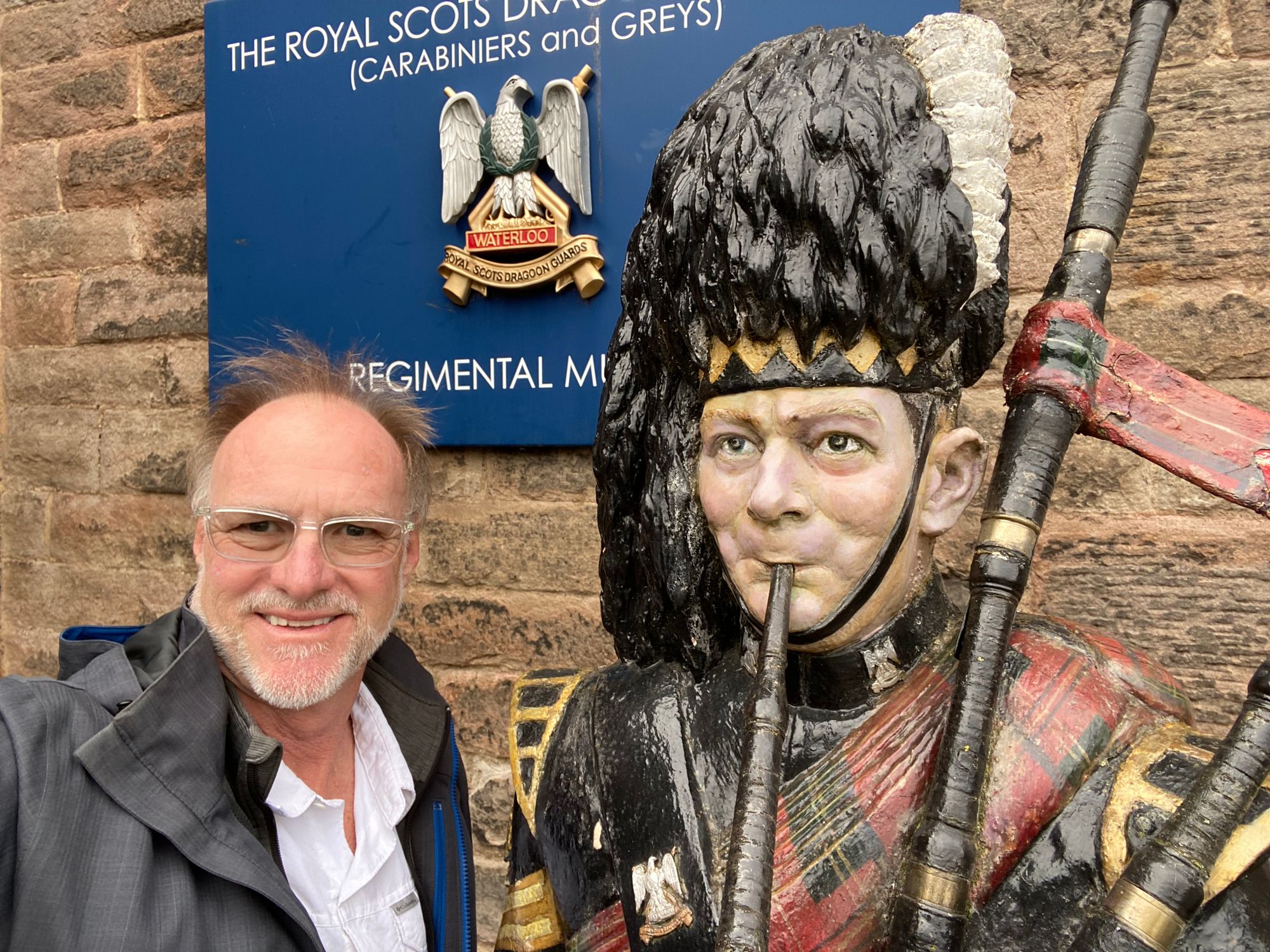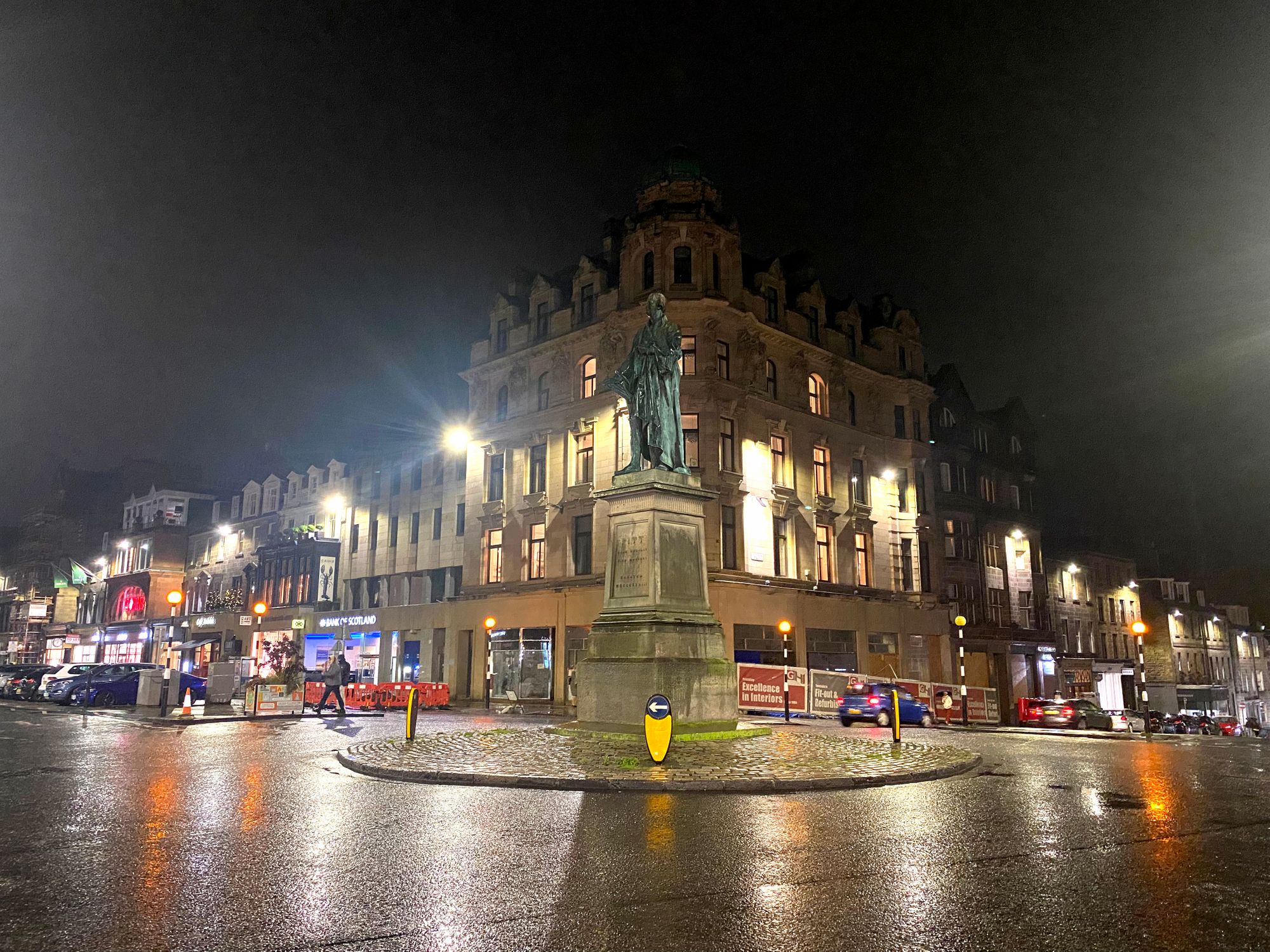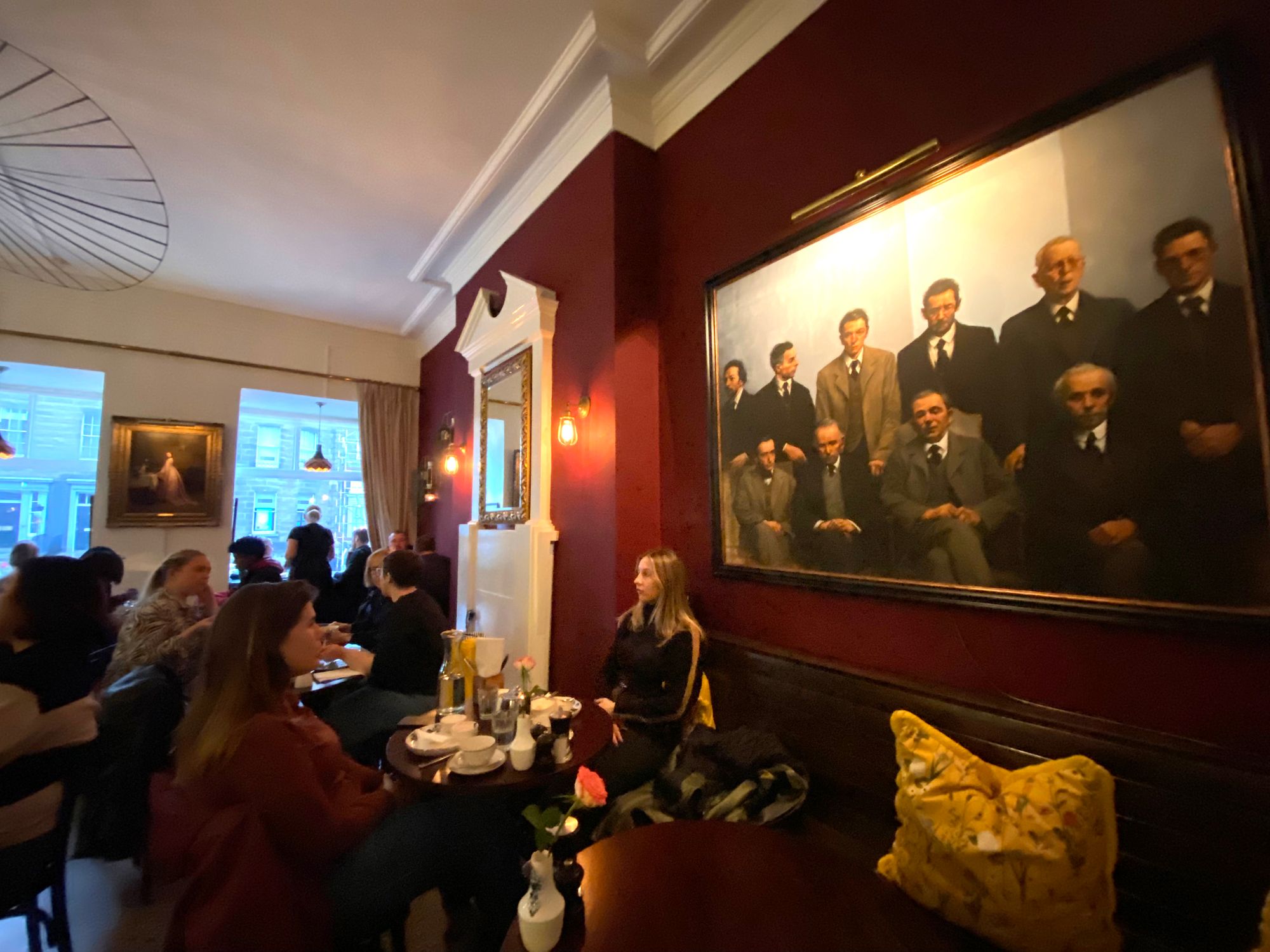Prior to starting our walk of Hadrian's Wall in northern England, Al and I decided to rent a car and drive around Scotland. We worked out an ambitious itinerary at a pub upon arrival in Edinburgh. After hitting the road, it became apparent we would need to amend the route - there were just too many interesting sites to check out and once off the main roads, the going was considerably slower than expected.
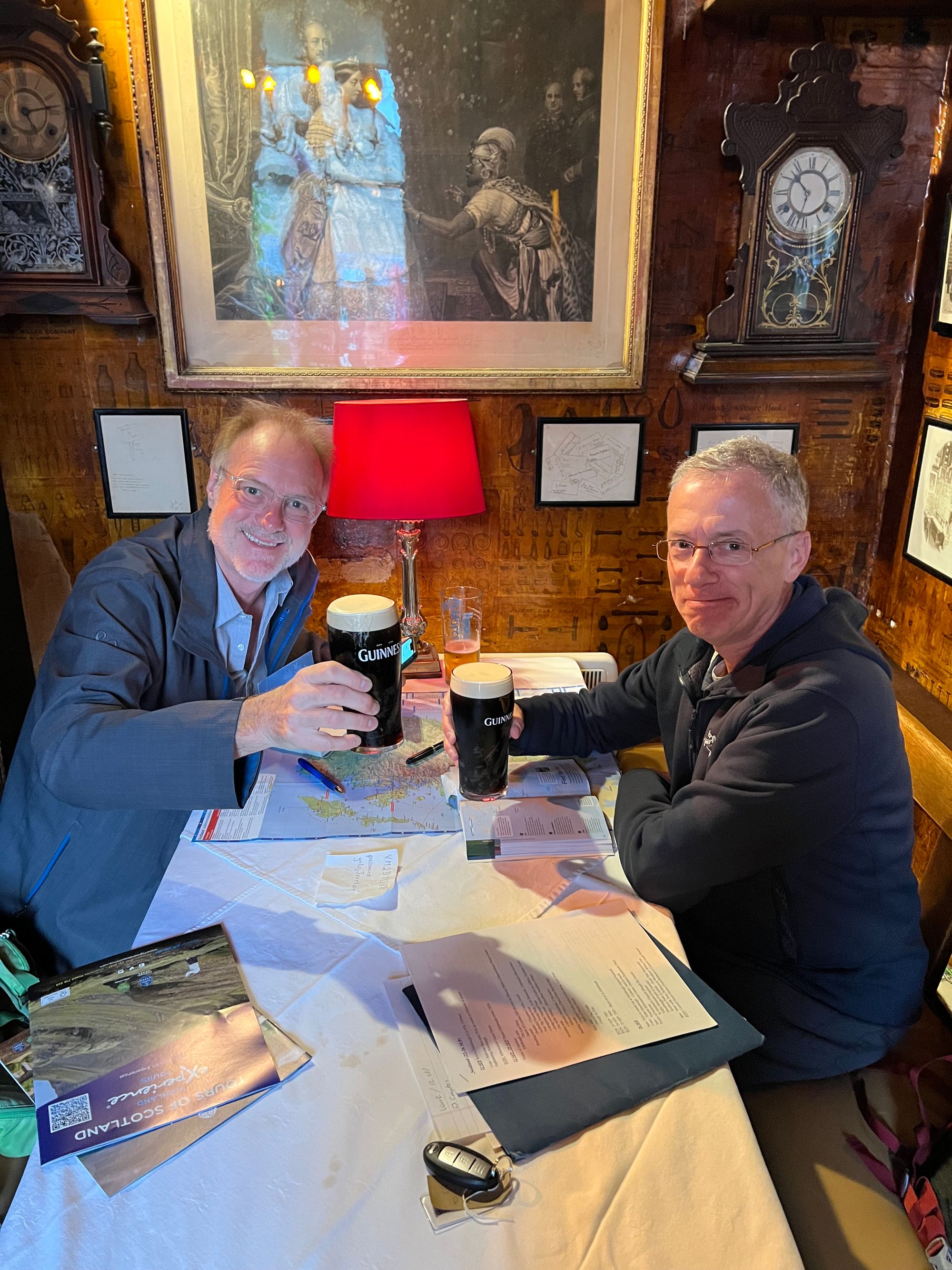
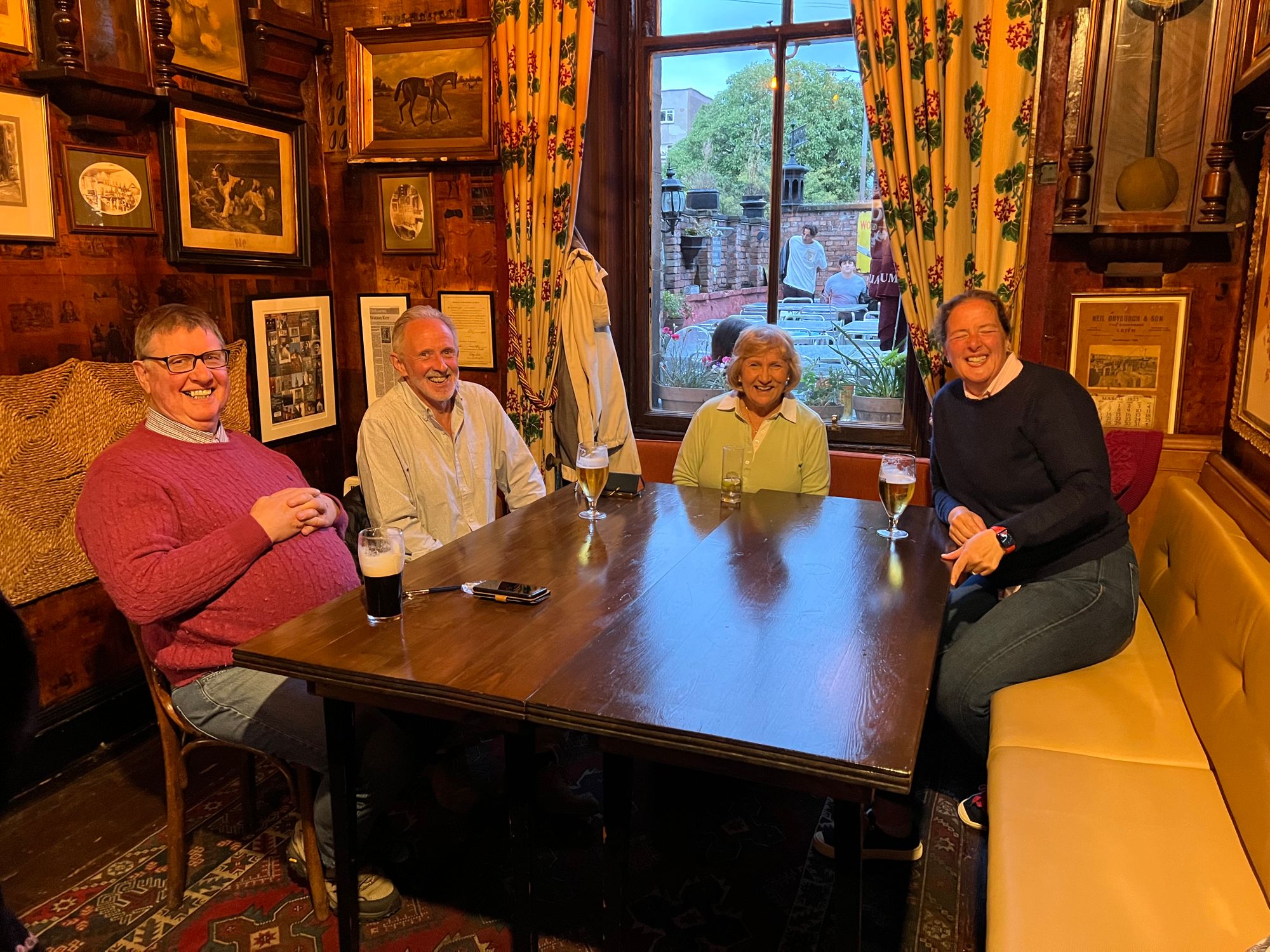
Day One | Edinburgh to Carnoustie
Prior to coming to Scotland and England both Al and I had done a far amount of research as well as watching some movies and television series on Scotland. Among them | Braveheart, Rob Roy, Outlaw/King, Garnet's Gold, Stone of Destiny as well as the first season of Outlander.
Since a number of these movies and our research involved battles between the Scots and English - seems like they have been fighting for ages - we would check out a few battlefields and historic sites that figured prominently in Scotland's fight for independence.

There were a number of battle over the ages in and around Sterling. There was the Battle of Sterling Bridge in 1297 - a victory for William Wallace in the War of Scottish Independence. The Second Battle of Falkirk in 1746 during the Jacobite Uprising which was a victory for the Scots.

Adjacent to the Battles of Falkirk there was a portion of the remnants of the Antonine Wall, built by Roman Emperor Antoninus in 142 AD. It stretched across the narrowest part of Scotland for 37 miles and extended the Roman frontier north from Hadrian's Wall. It was abandoned eight years after its completion and the Roman legions withdrew back to Hadrian's Wall in 162 AD
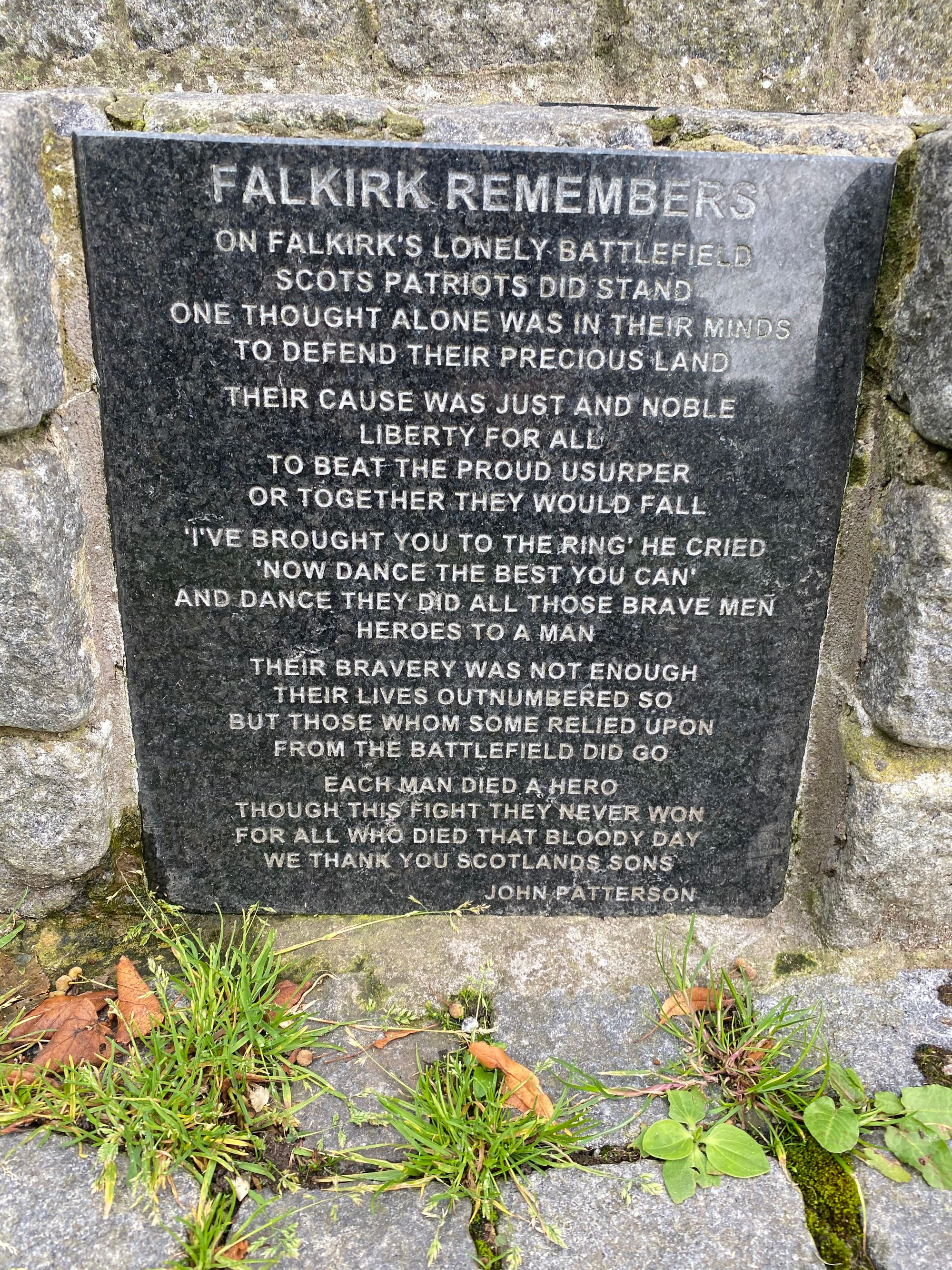
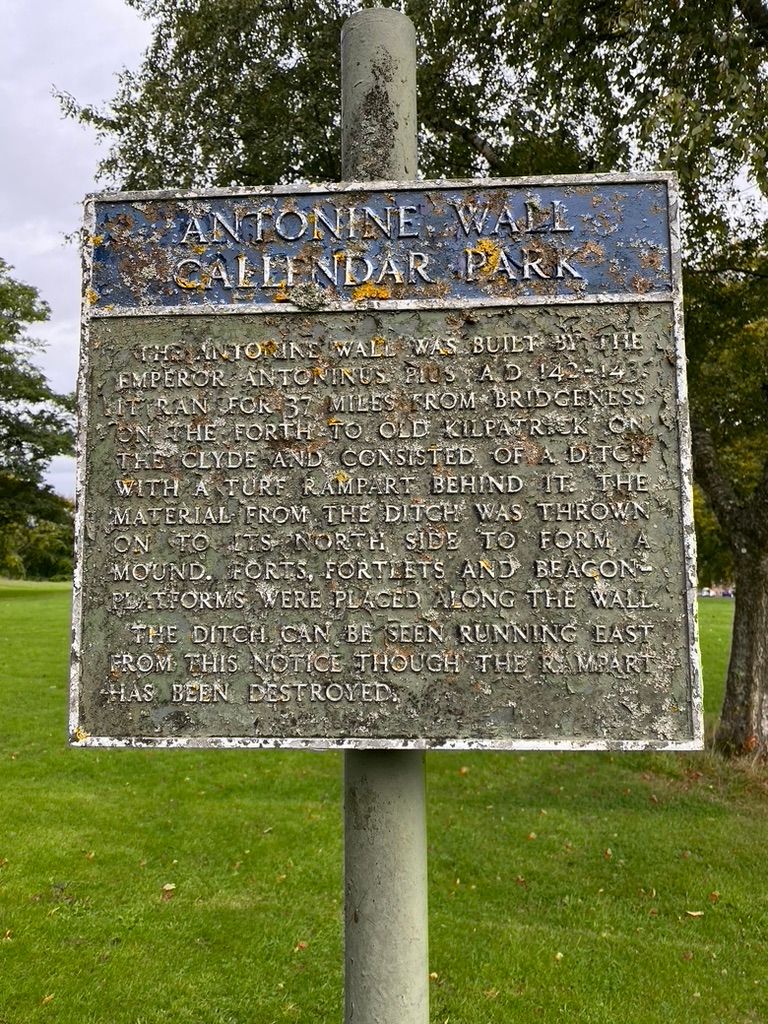
Our main objective for the day was the Battle of Bannockburn which is just on the outskirts of Sterling. Here Robert the Bruce, King of the Scots, soundly defeated a vastly superior English army commanded by King Edward II in 1314.
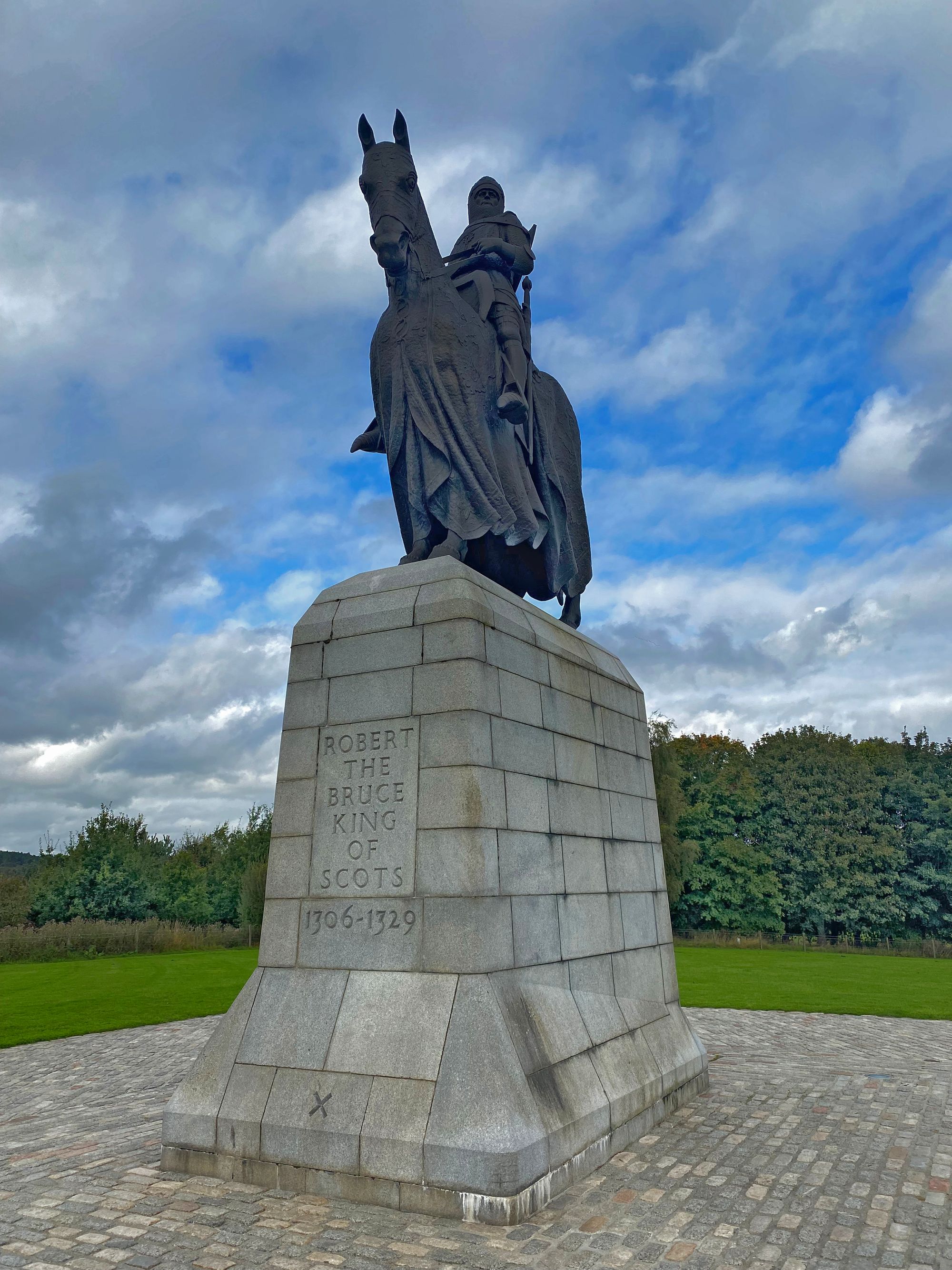
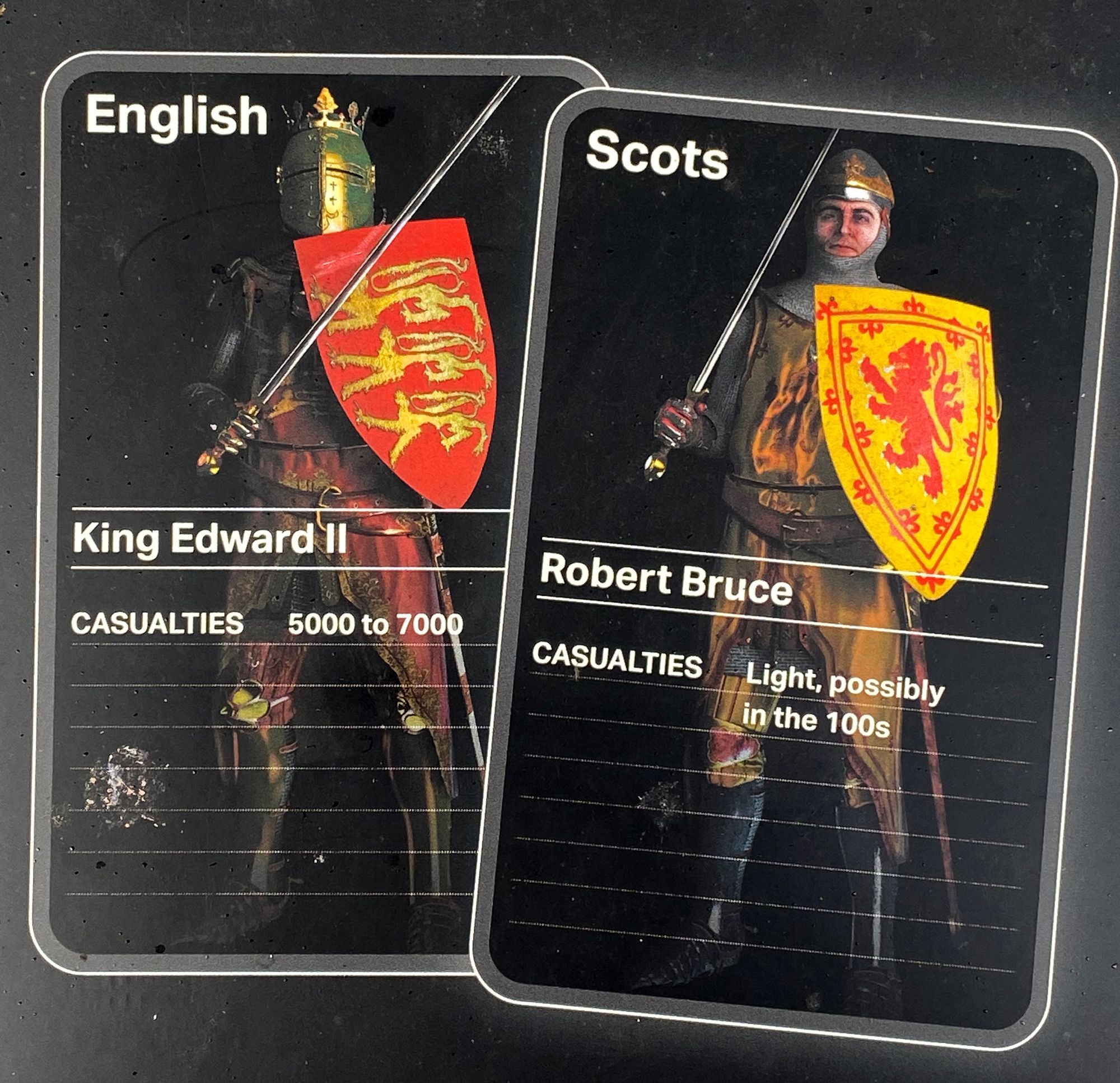
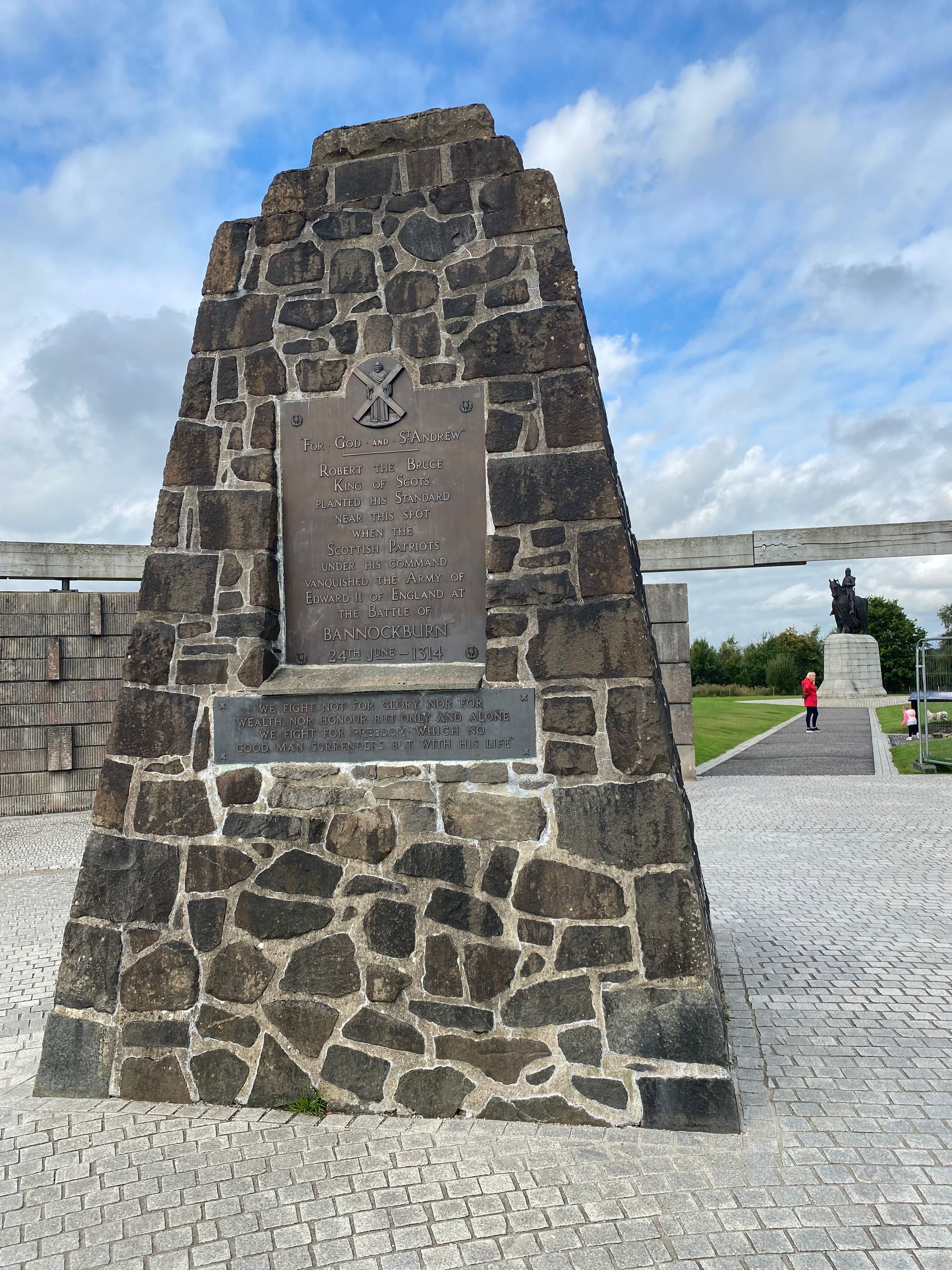
The battle took place over two days with the second day being the decisive day. The second day battlefield is unmarked and a few miles away. With explicit directions from the visitors center we visited what is believed to have been the battlefield.
After the failed English attack on the first day, King Edward II had reposition his army and camped in the lowlands near the Bannock Burn (a small river). Robert the Bruce seeing the vulnerability of the English position surprised them with a dawn attack.
The English were caught off guard and scrambled to put up a defense. Initially the English advanced on the Scots when they saw Robert the Bruce and the advancing Scots stop to pray. The Duke and his officers, thinking the Scots and stopped to retreat, launched the attack. Though the English outnumbered the Scots 25,000 to 8,000 and had contingents of Welsh archers and Irish soldiers, the Scottish cavalry outflanked them and were able to extract severe loses. The main Scottish force pushed back the English into the burn where knights in their heavy armored perished.
Realizing that the battle was lost, King Edward II's knights forcibly removed him and he returned to England.
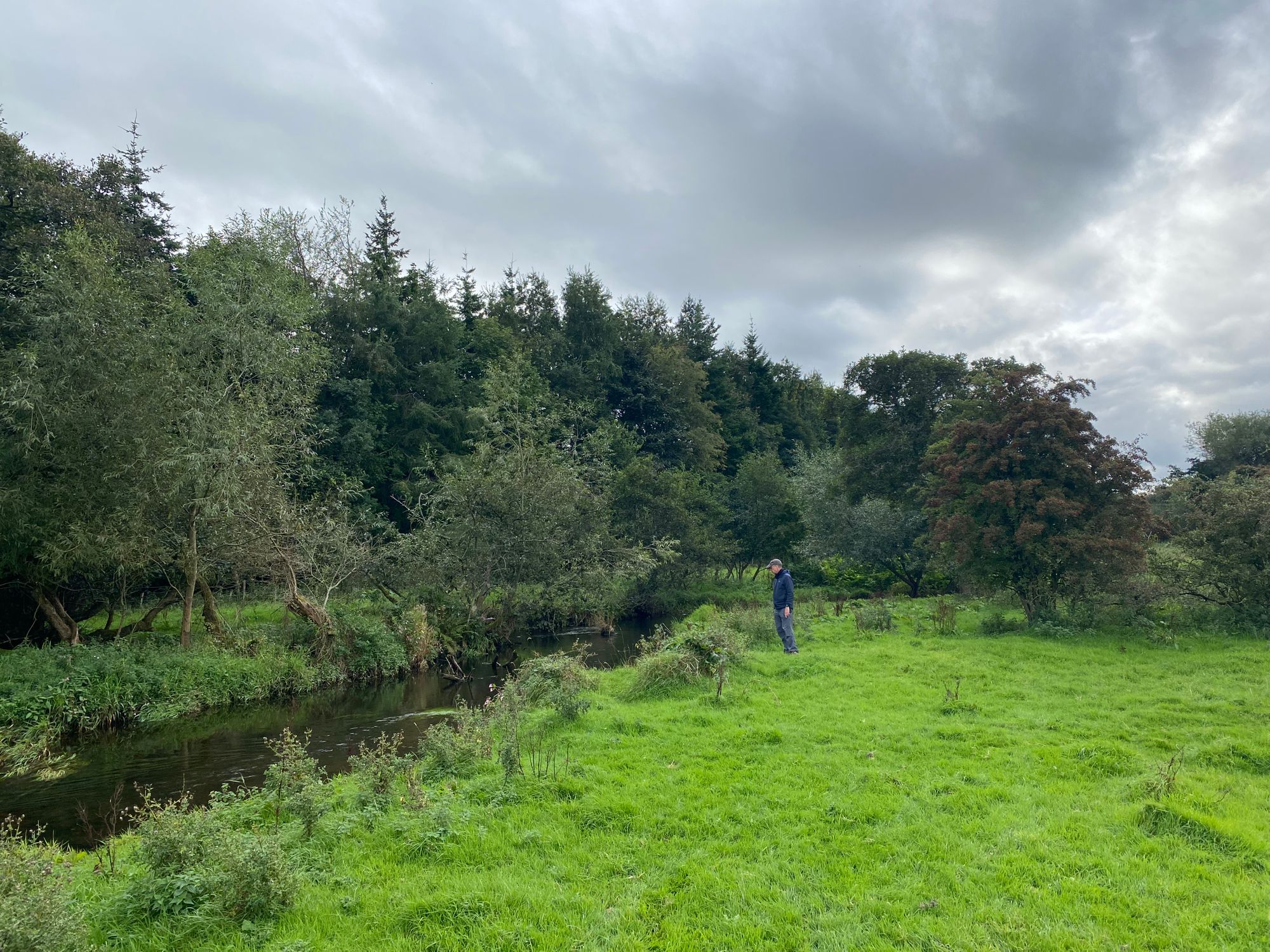
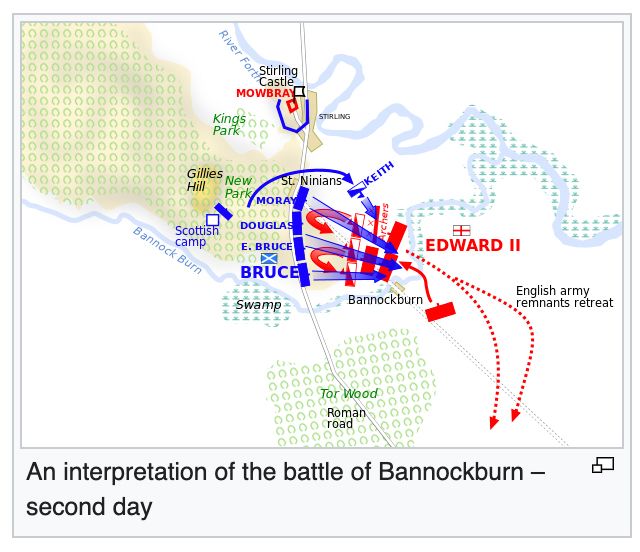
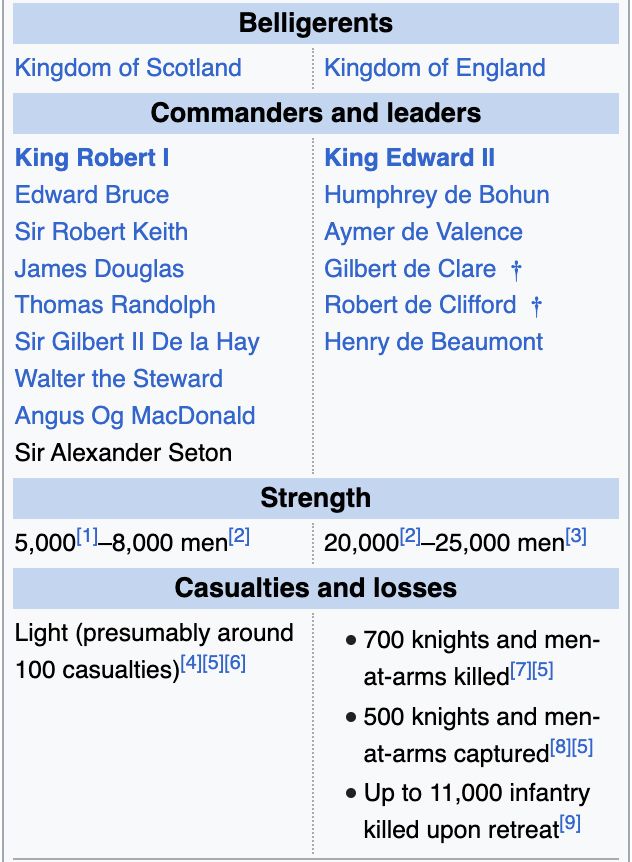
Our next planned stop would be the Pictish Standing Stones at Aberlemno Kirk.
On the way, we took a turnoff to visit the small picturesque medieval coastal town of Culross where scenes of Outlander were filmed.
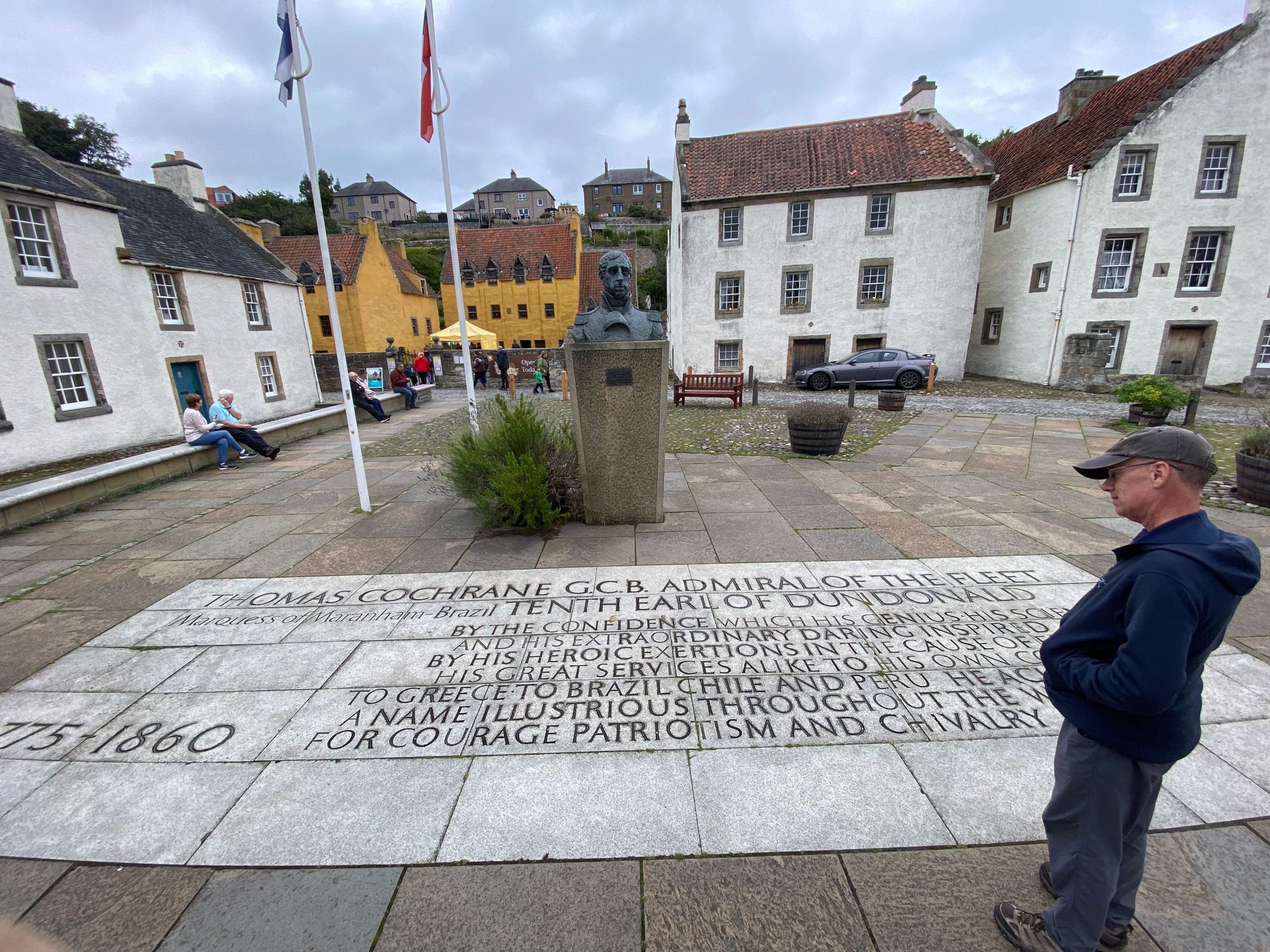
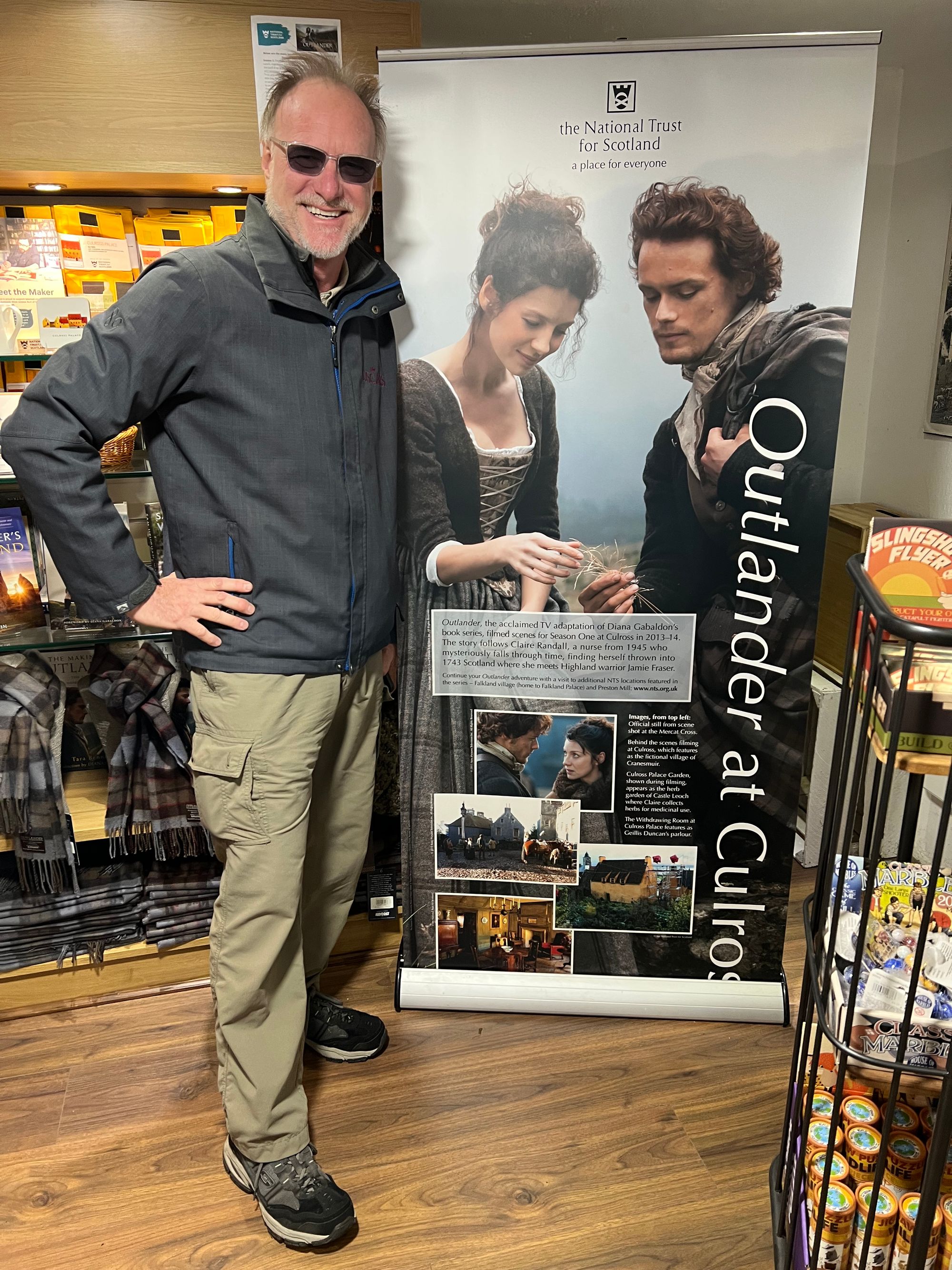
Another quick stop to visit the grave of Robert the Bruce in Dunfermline and to get some lunch. We arrived at the abbey and were told we could not visit the grave which is under the pulpit because the Scottish Highlands Band was rehearsing for a concert that night being attended by British royalty.
However, Al, using his charm, was able to guilt custodian Willy into taking us, via the back entrance, to the altar area and we were able to view the impressive gold engraved depiction of Robert the Bruce.
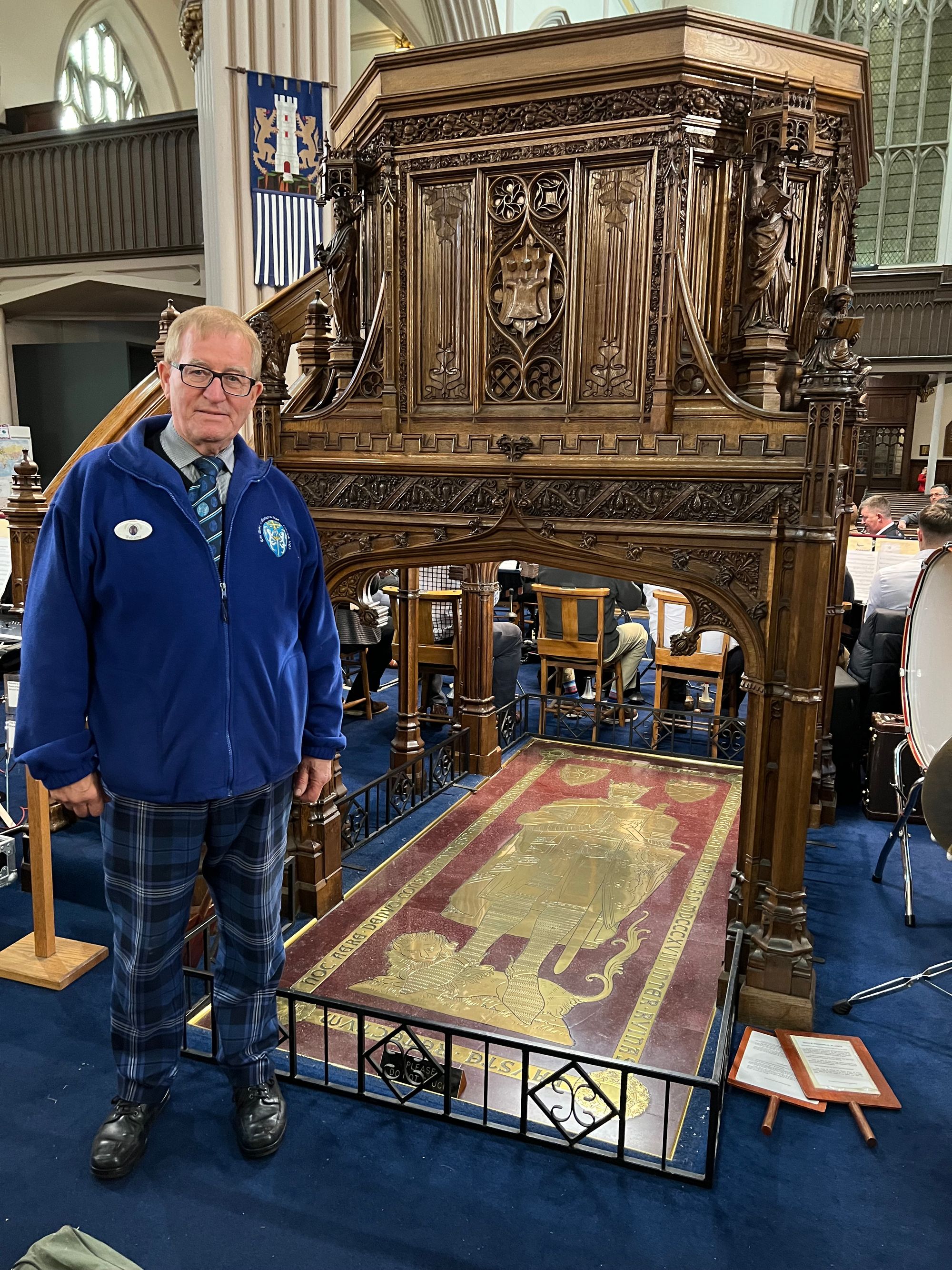
We pressed on to Aberlemno where some of the more impressive Pictish Sculptured Stones still stand in their original location. They are near Forfar which is believed to have been a Picts holy site.
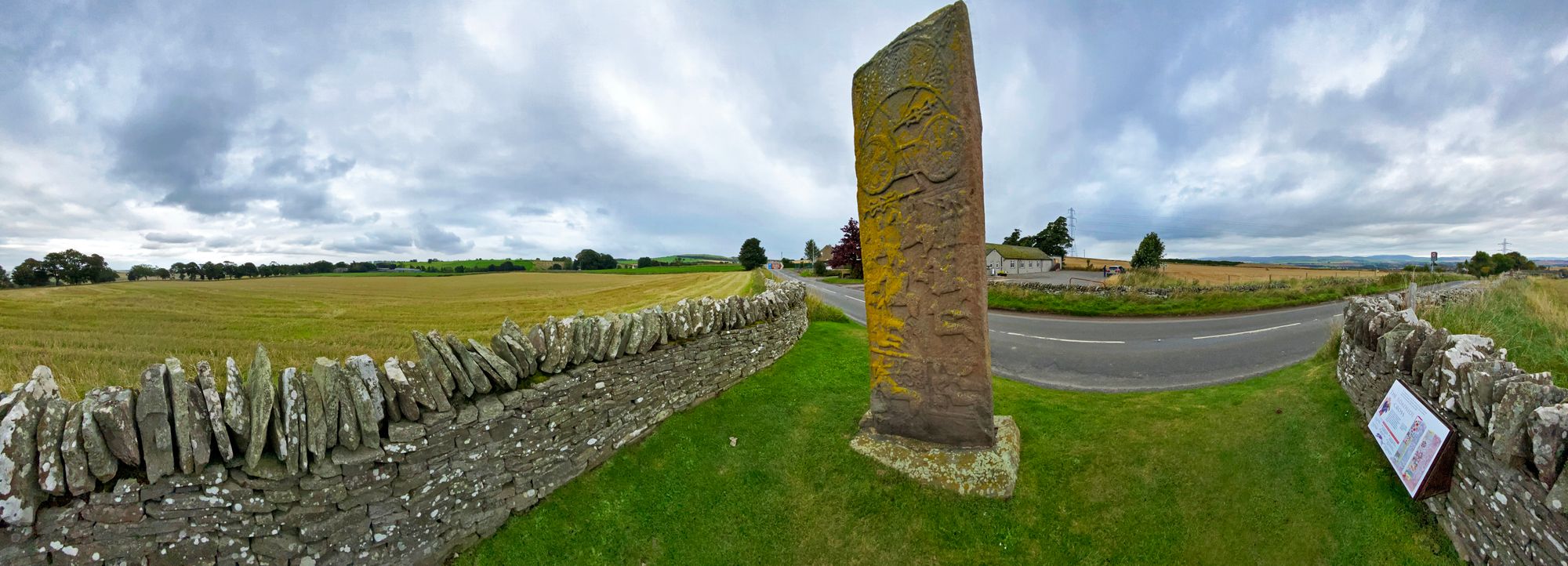
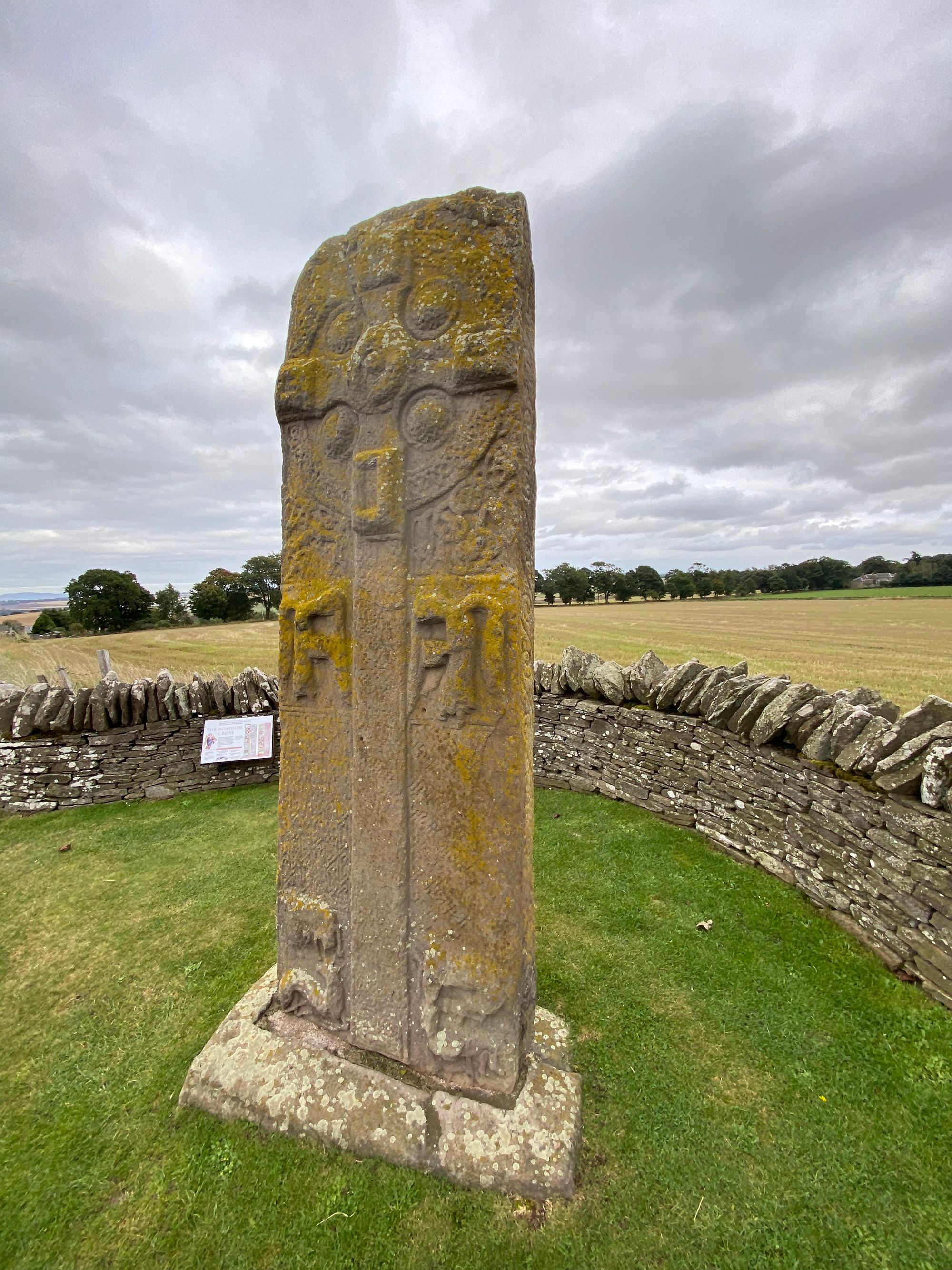
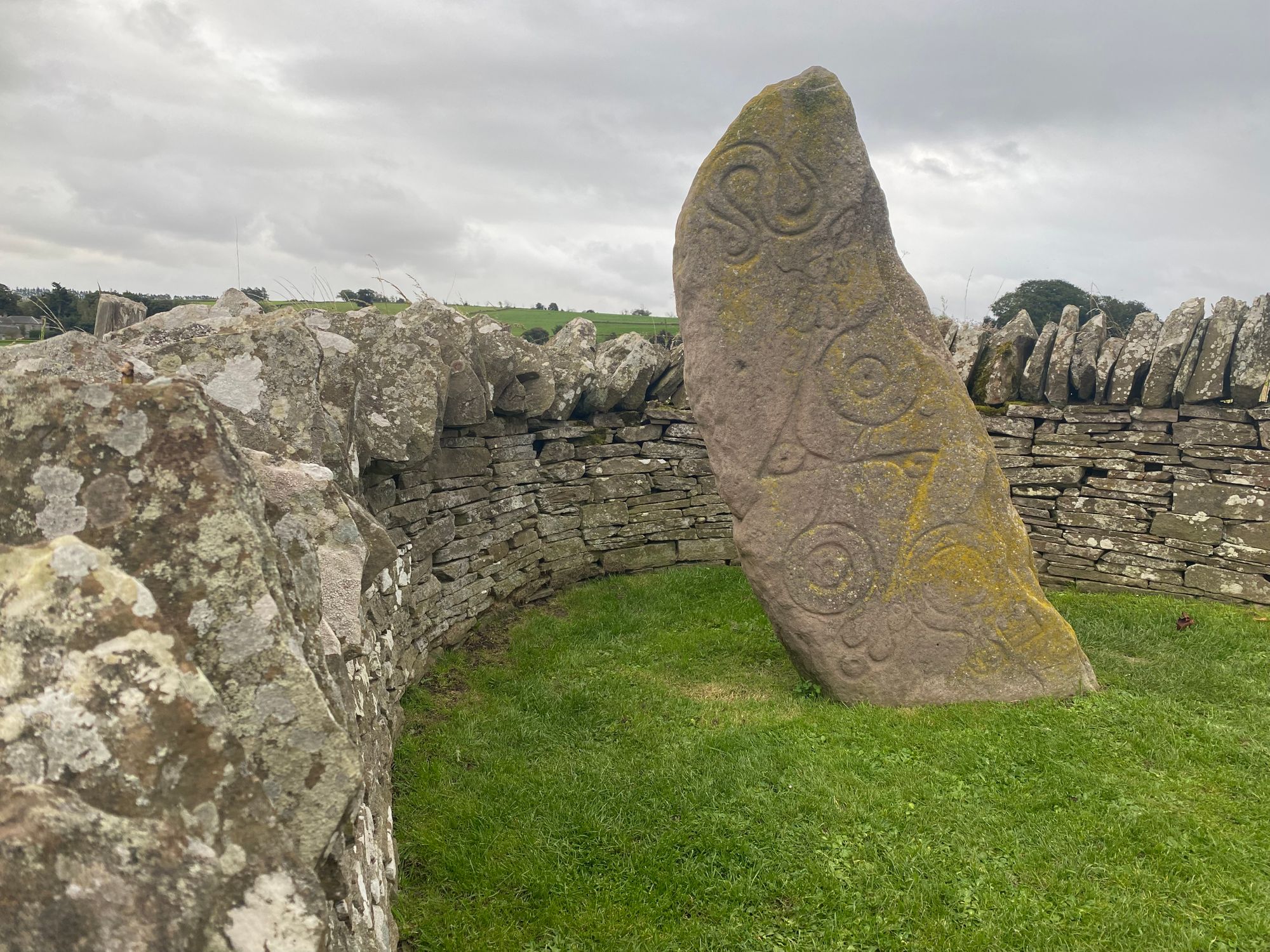
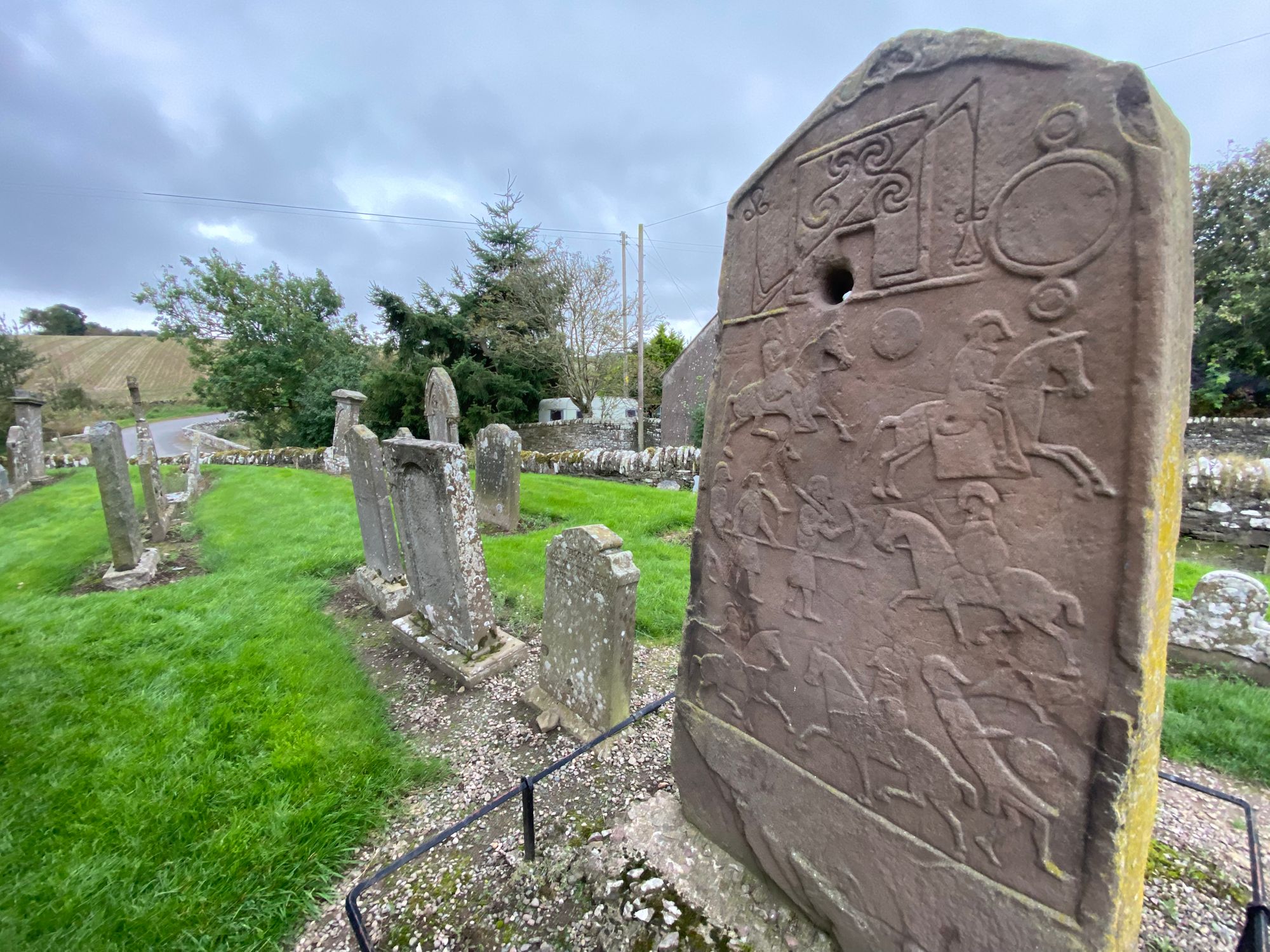
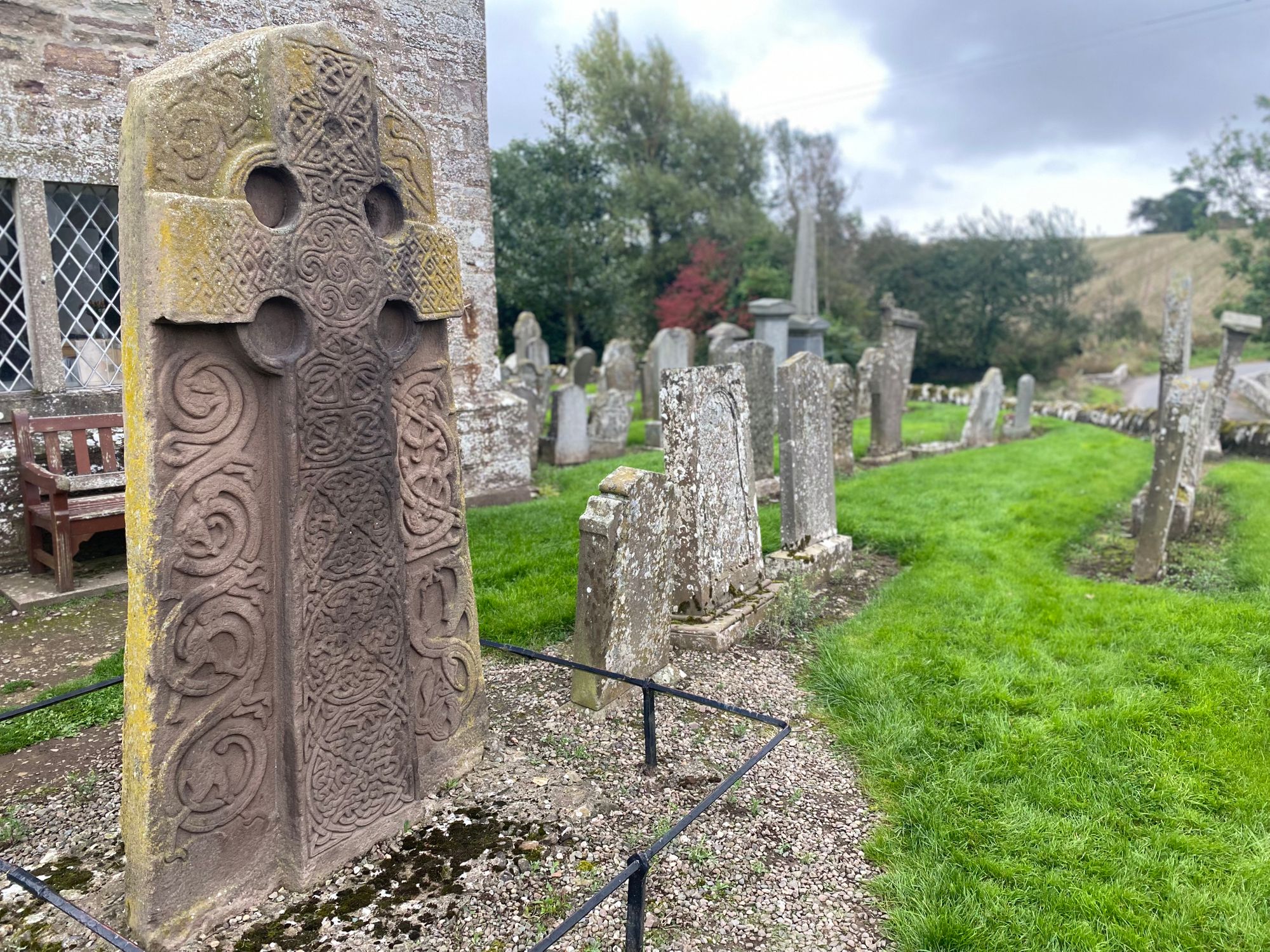
Not much is known about the Picts as there is no written record except the standing stones and what the Romans wrote about them which is sparse. Pict is believed to come from Latin for "painted" as they wore blue paint and thus were described by Romans who battled them. The Romans after 400 years were unsuccessful in conquering their lands. Druids may also have been associated with the Picts.
There was no way were were going to make our planned destination of Inverness which was still some 150 miles away, so we found a place along the coast at Carnoustie - famous for golf.
Day Two | Carnoustie to Inverness
Today we had a more precise plan. Al had come across a dramatic castle ruin along the coast north of us that looked interesting. We also wanted to get to Culloden Battlefield by 3pm so we would have at some time to visit the site.
After Al's dawn beach run - he was preparing for a 10 miler run - we headed out early and stopped at Arbroath to see the abbey where the Stone of Scone (Stone of Destiny) was originally kept and upon which the Kings of Scotland were crowned. It is now in Edinburgh Castle with the Scottish crown jewels.
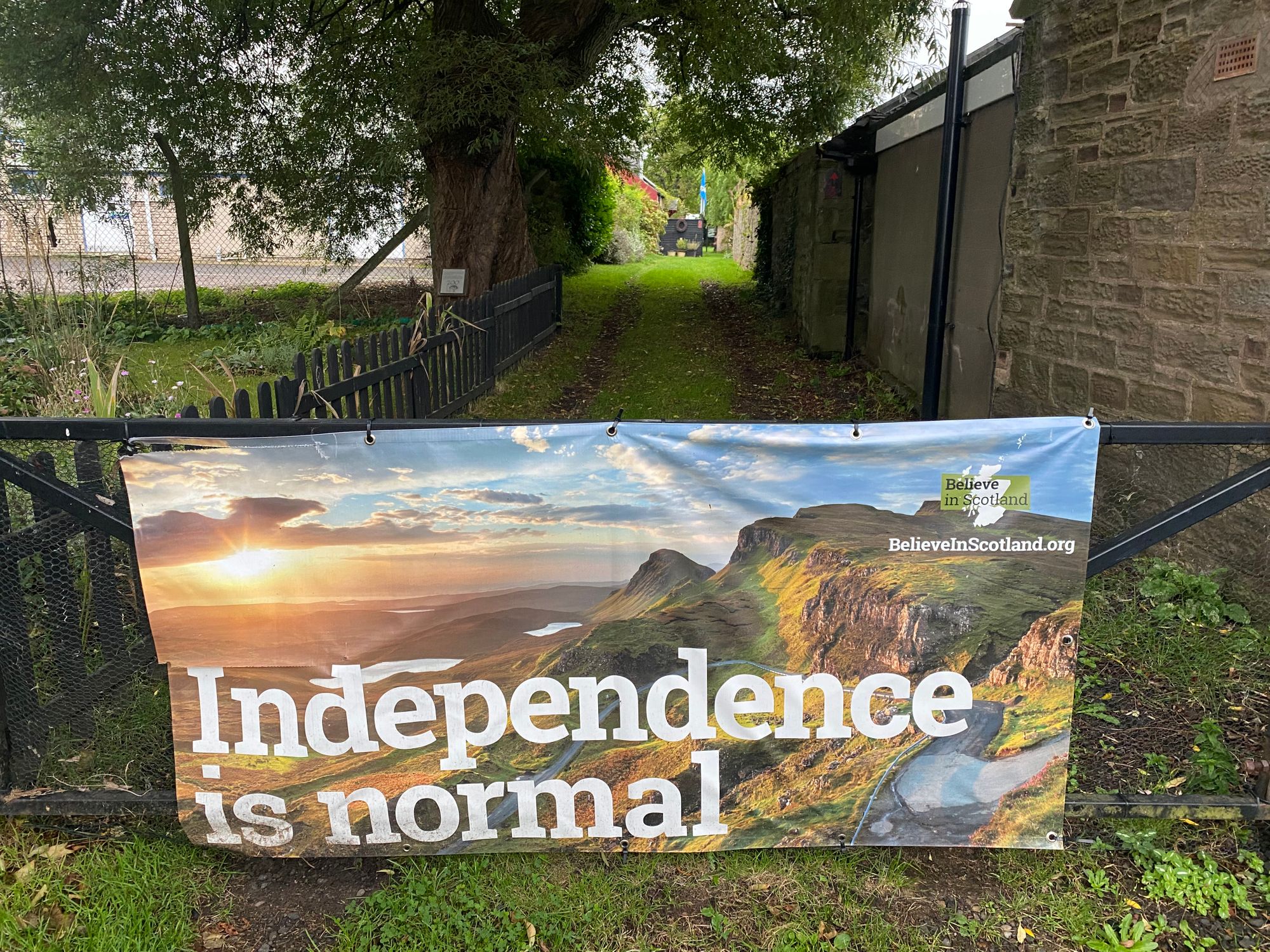
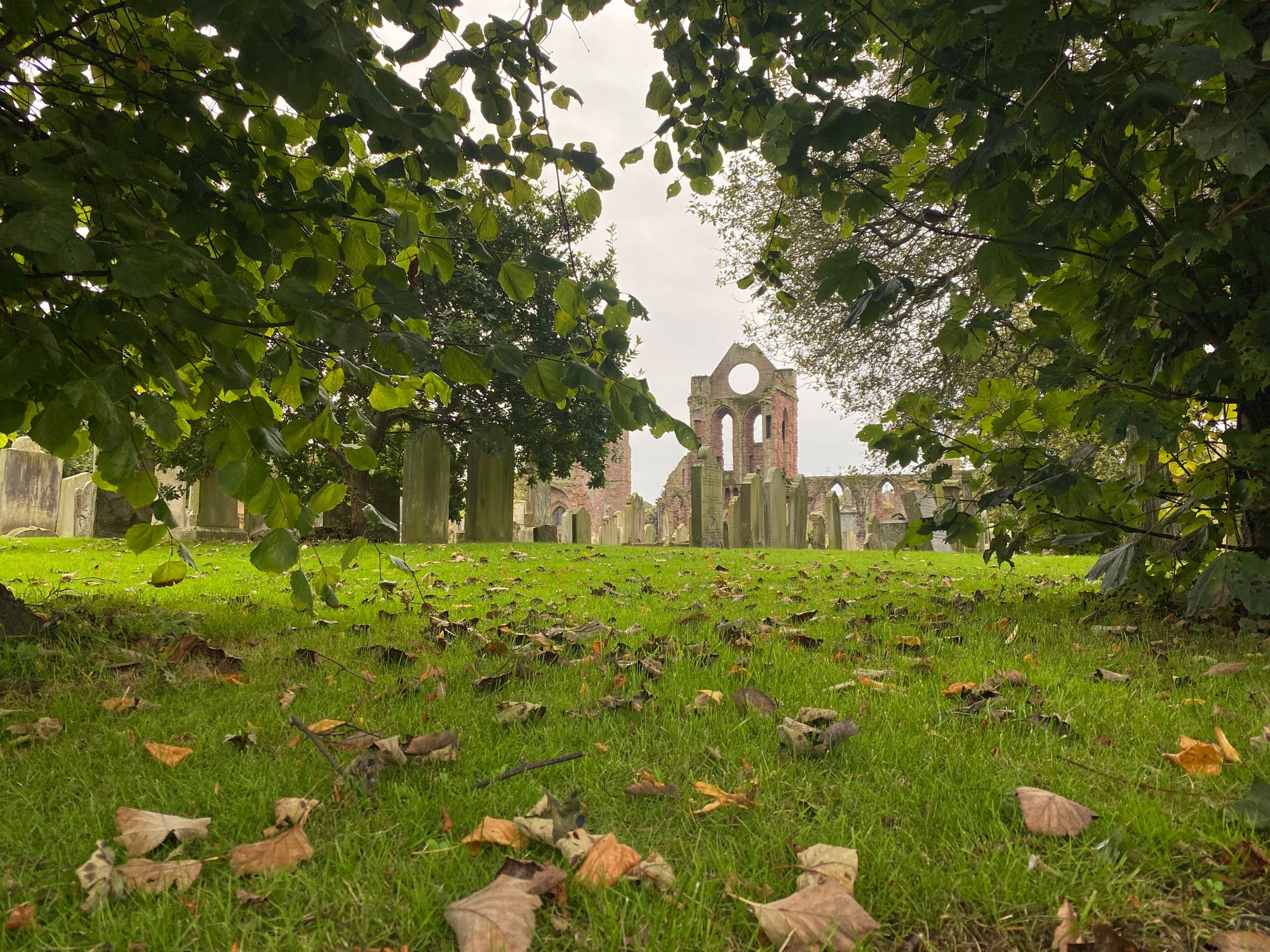
On our way to Dunnottar Castle, Al spied a fishing village and we turned off to check it out.
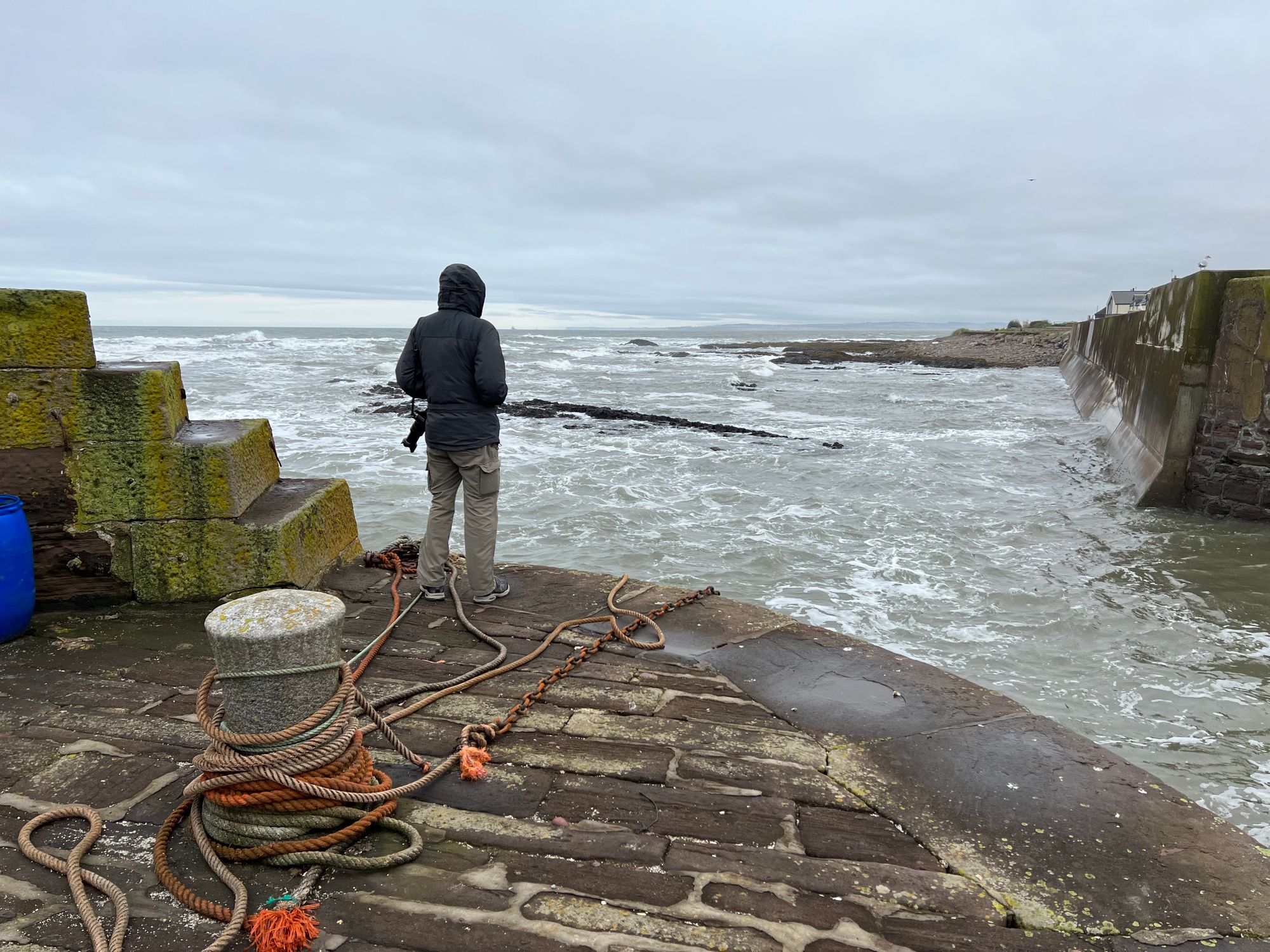
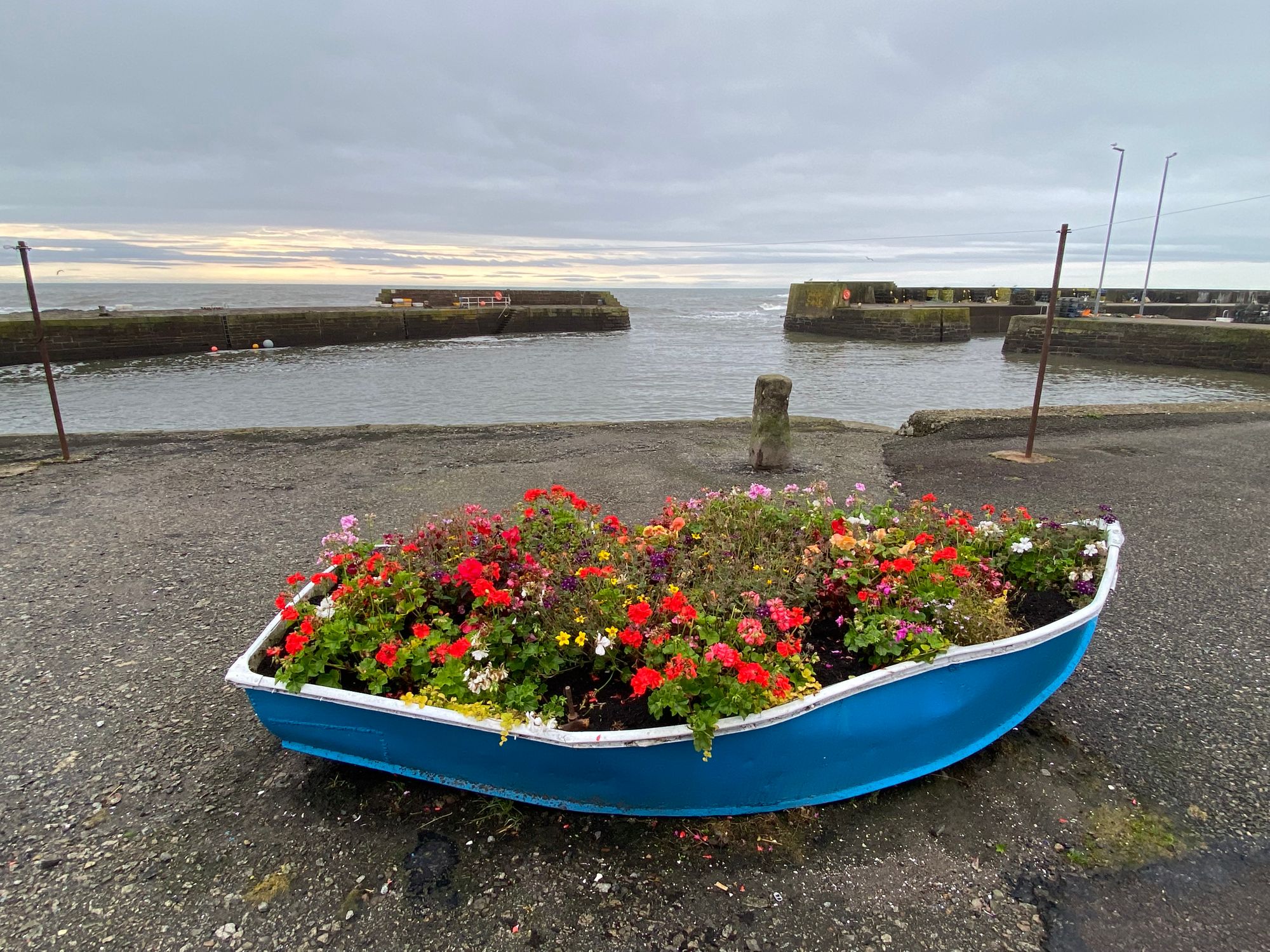
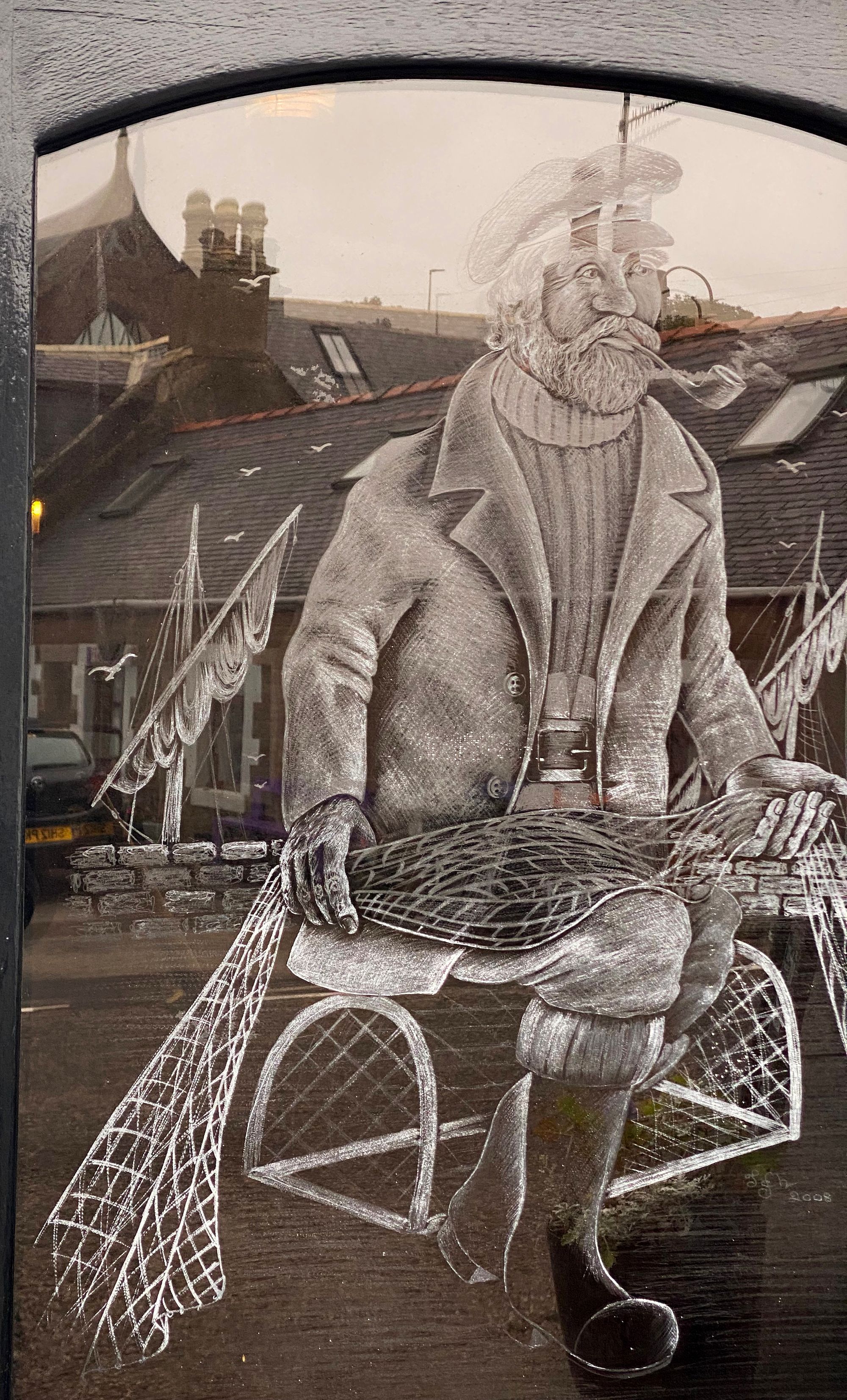
We arrived at Dunnottar Castle just after it opened at 9am. What a spectacular site and quite a history to go along with its dramatic setting. The history of the fortified castle goes back to the 5th century when a chapel was built on the site by St. Ninian.
The Picts attacked and sieged the castle in 681 and the first Scottish King of Alba, Donald II was killed by Vikings there in 900. After that, a succession of English campaigns fought over it starting in 934. William Wallace captured the castle during the Scottish Wars of Independence in 1297. Oliver Cromwell besieged the castle and Honors of Scotland (crown jewels) which had been moved there for safe keeping were smuggled out in 1651.
With the unsuccessful Scottish independence Jacobite Uprisings in 1715 and the abandonment of Dunnottar by Lord Marischal, it was declared forfeited to the English crown. It gradually fell into disrepair and was partially restored starting in 1925 with its purchase by Viscount Cowdray. It is still family owned and is opened to the public.

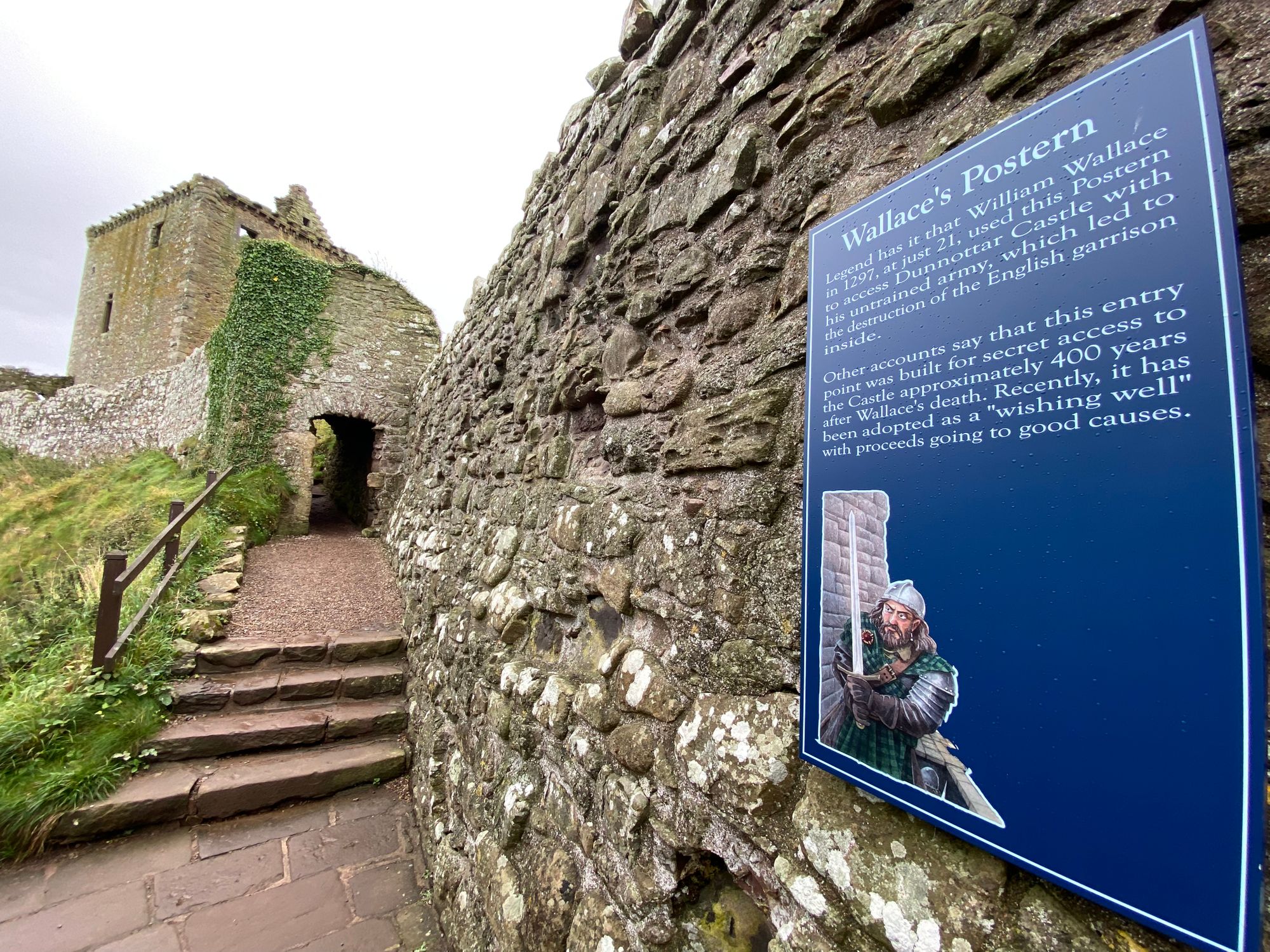

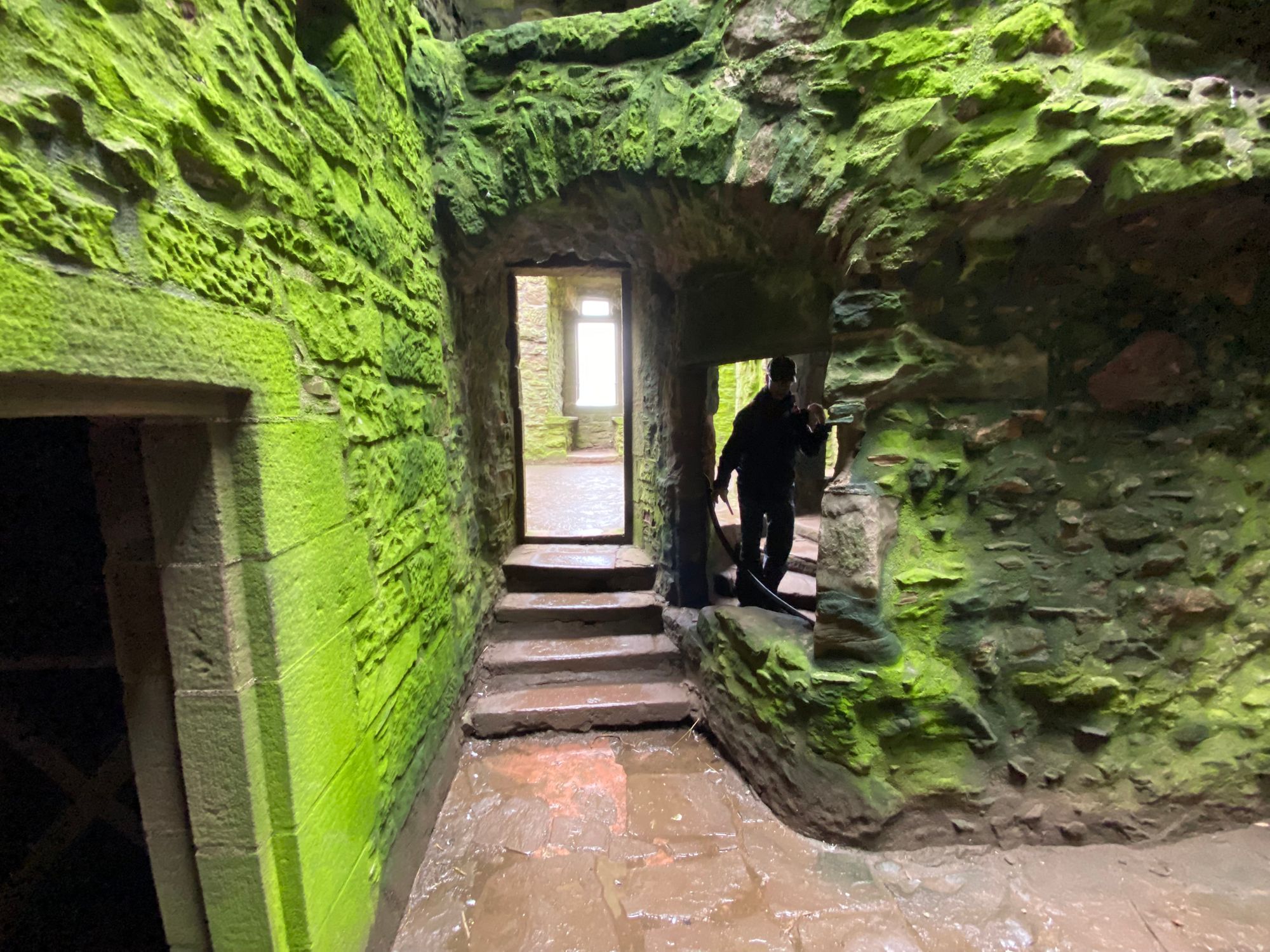
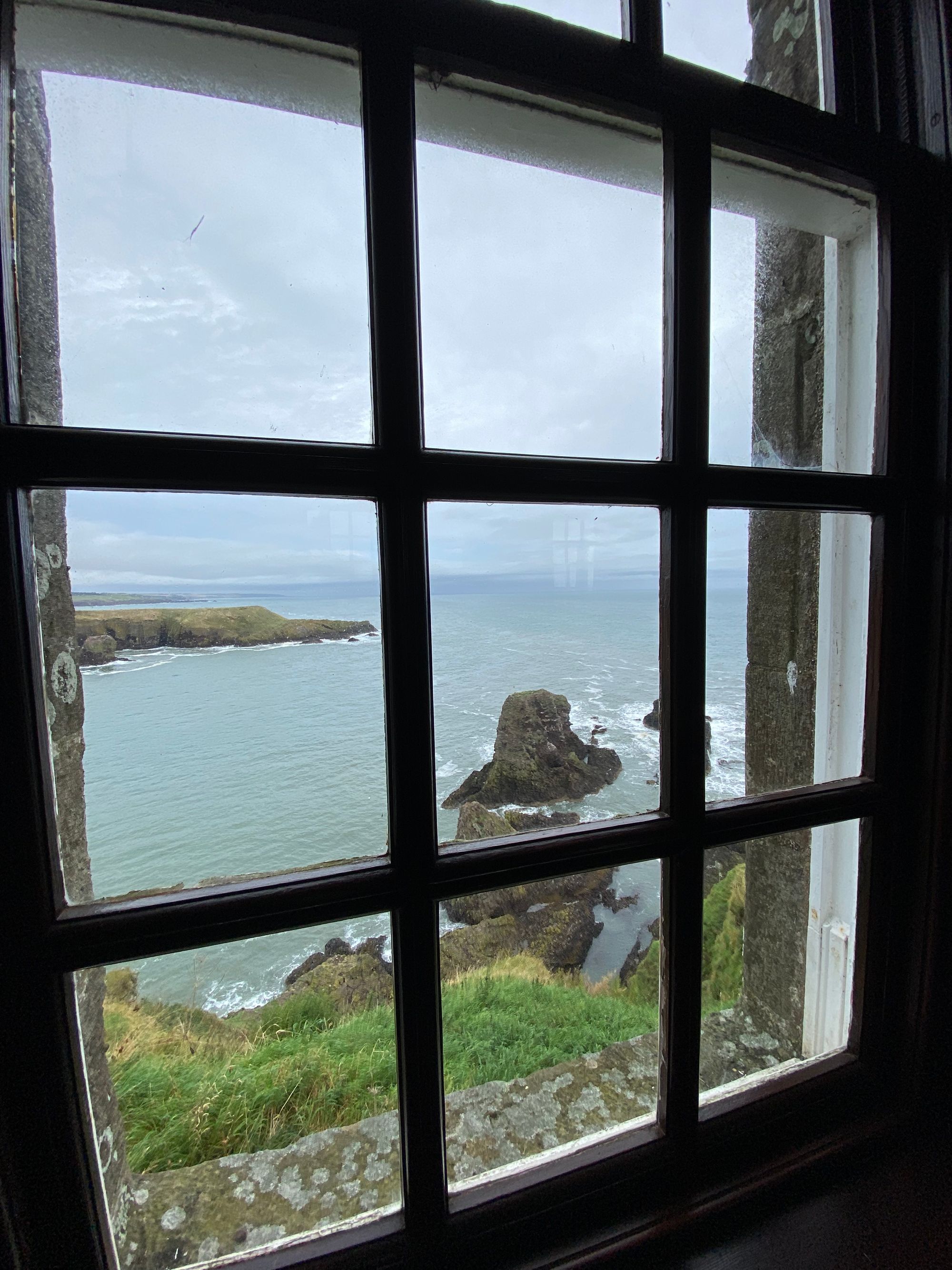
What a great find. So much fun exploring the vast ruins which evens includes a lion's den. One of the most interesting ruins I have ever visited.
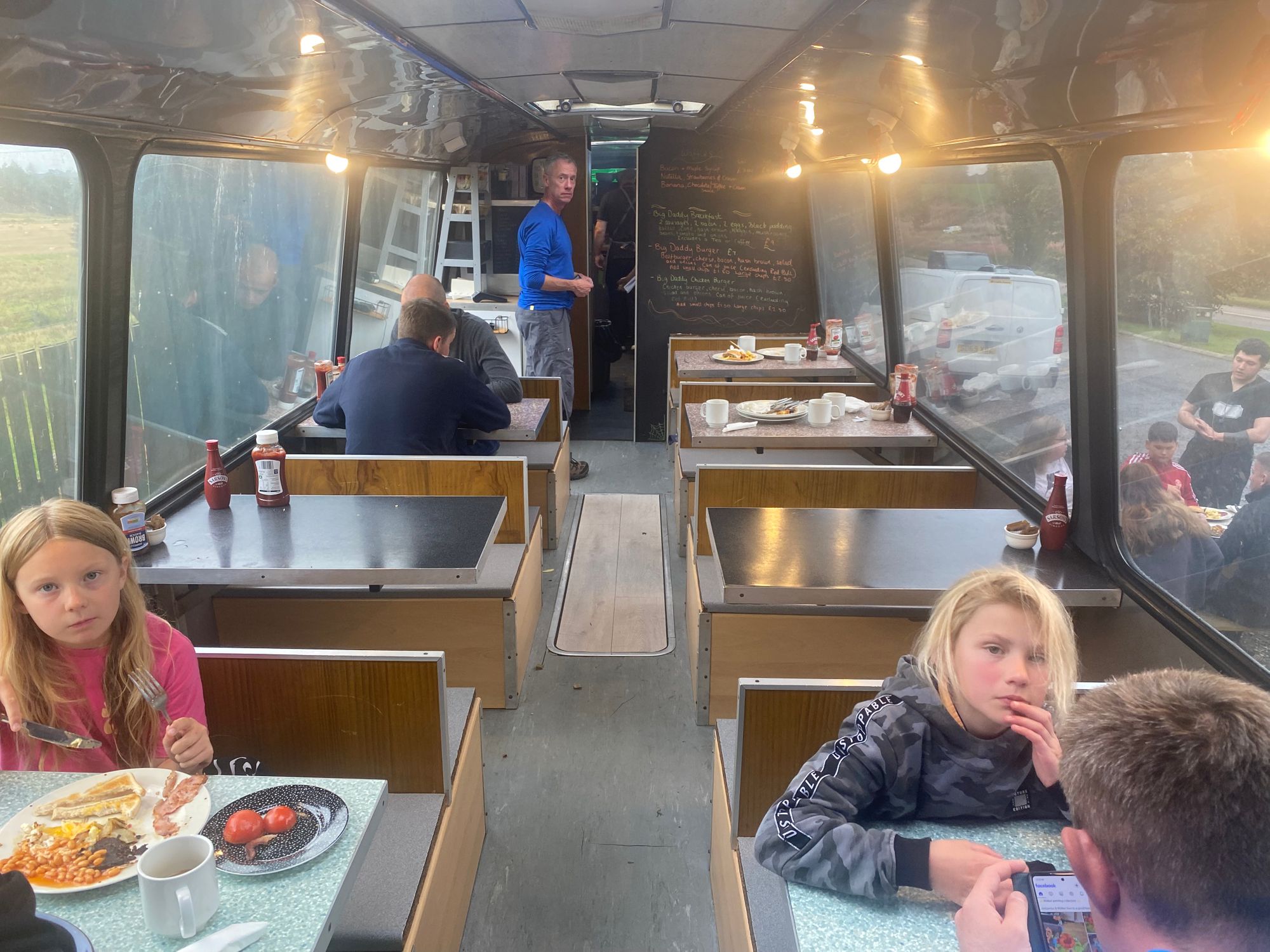
We left the Scottish east coast and beelined it to Culloden where the Jacobites under Bonnie Prince Charles met the English Army led by the Duke of Cumberland in 1746.
The exiled leader of the Stuart claimant to the British crown, Prince Charles Edward Stuart landed in Scotland in 1745. With promised support from the French, he rallied the clans and marched to claim Scotland and the British crown. He raised an army and was successful at defeating British outposts and forts including the limited victory at Falkirk. He captured Edinburgh in 1746.
British monarch George II realizing that he needed to confront and defeat the uprising recalled 12,000 soldiers from the continent and under the leadership of his son, Prince William Augustus, the Duke of Cumberland, marched north towards Inverness.
Though somewhat equally matched, the Jacobites attempted a surprise dawn attack on the birthday of Prince Augustus. However, because of poor communication and leadership the army fumbled its way in the dark and cold rain and never reached the celebrating prince and his army's camp. They withdrew exhausted and hungry back to Culloden Moor where against the better judgement of his military advisors, Bonnie Prince Charlie, rallied the troops to face the British Army.
The Scots were known for their ferocious charges and feared hand-to-hand combat. However, on the open marshy moor with animal pasture walls helming them in, they were at a disadvantage against the well-trained, organized British Army which had more artillery and cavalry units.
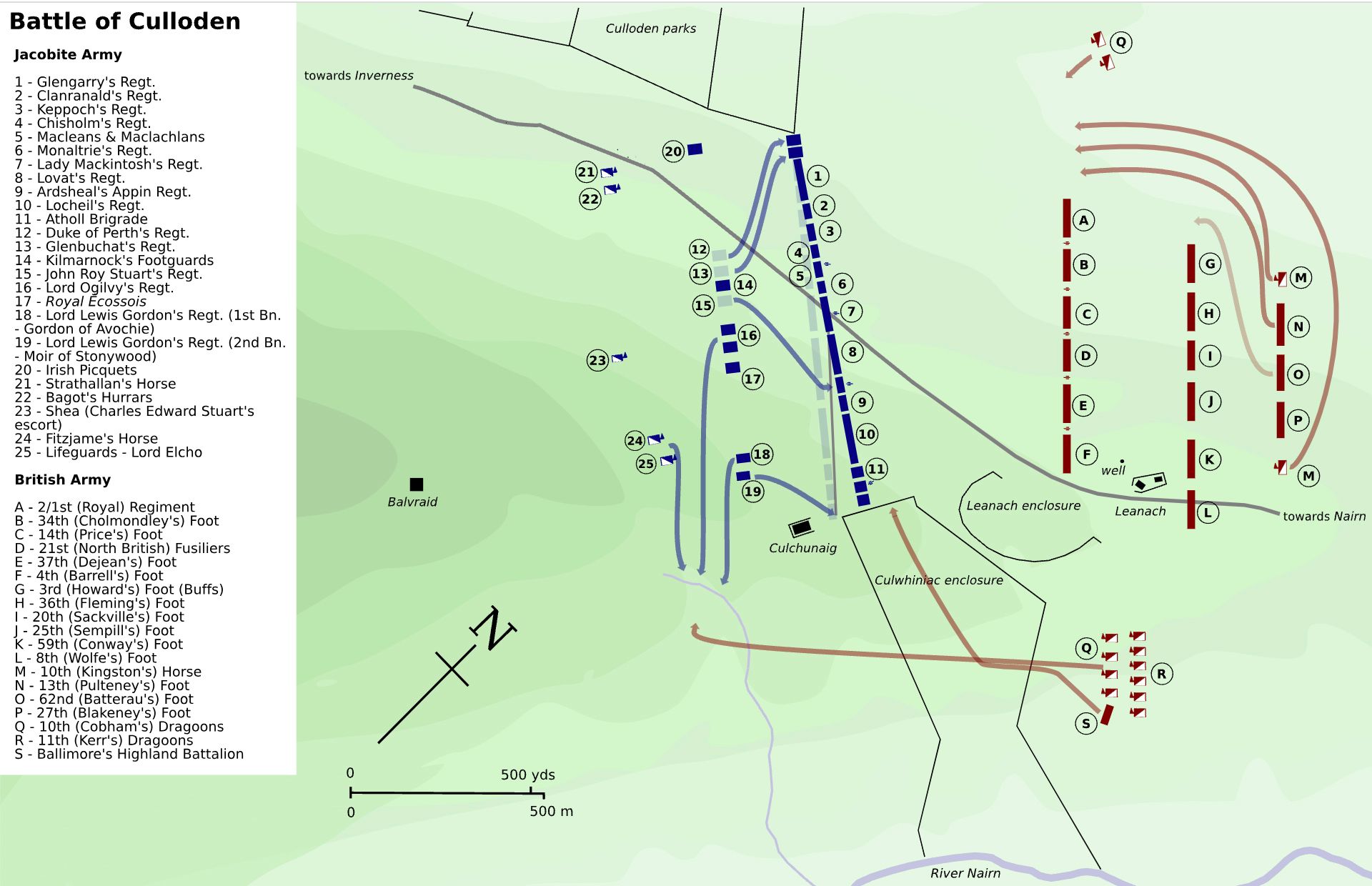
The battlefield, much of which is still private property, is marked with red and blue flags denoting the lines of the opposing armies.
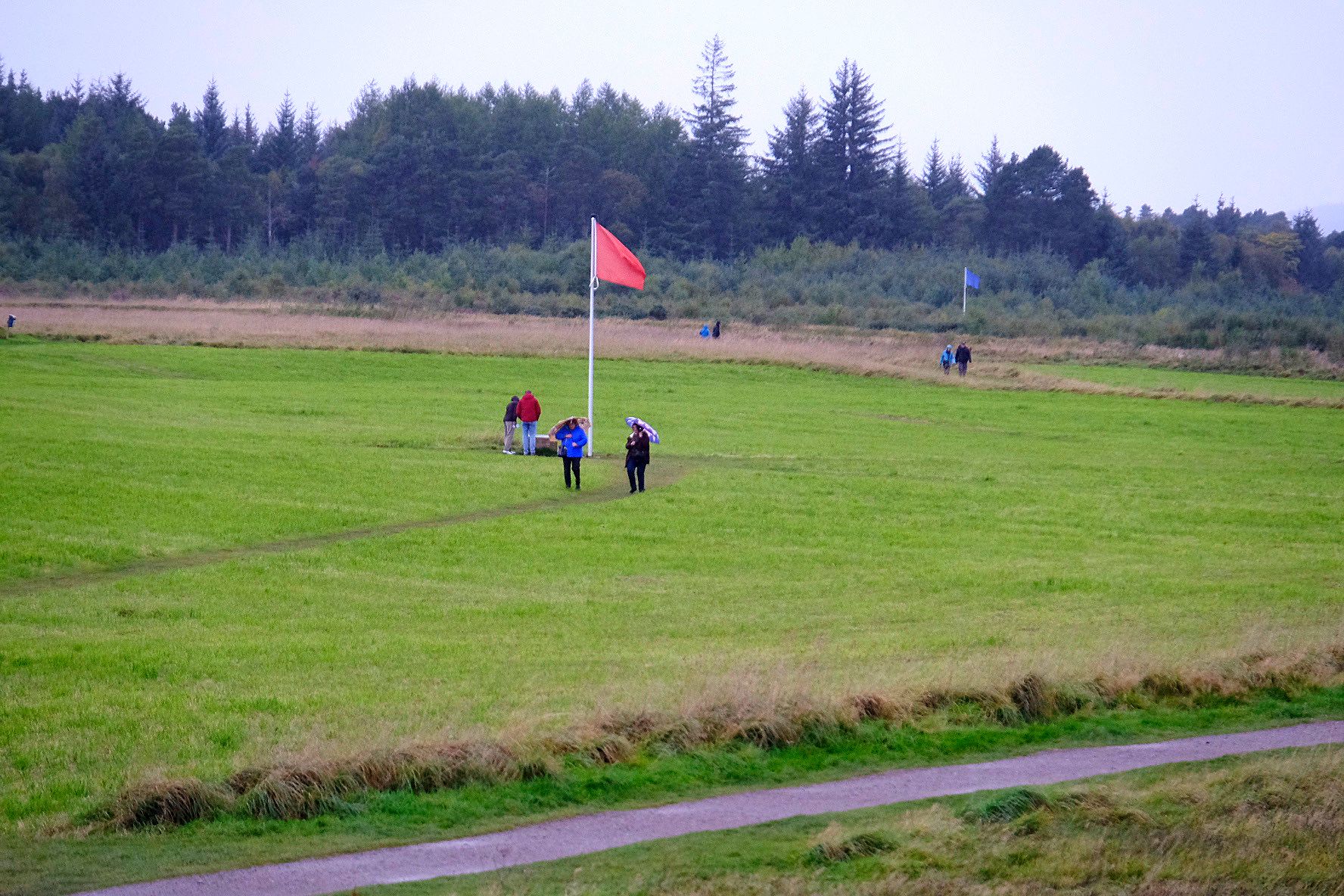
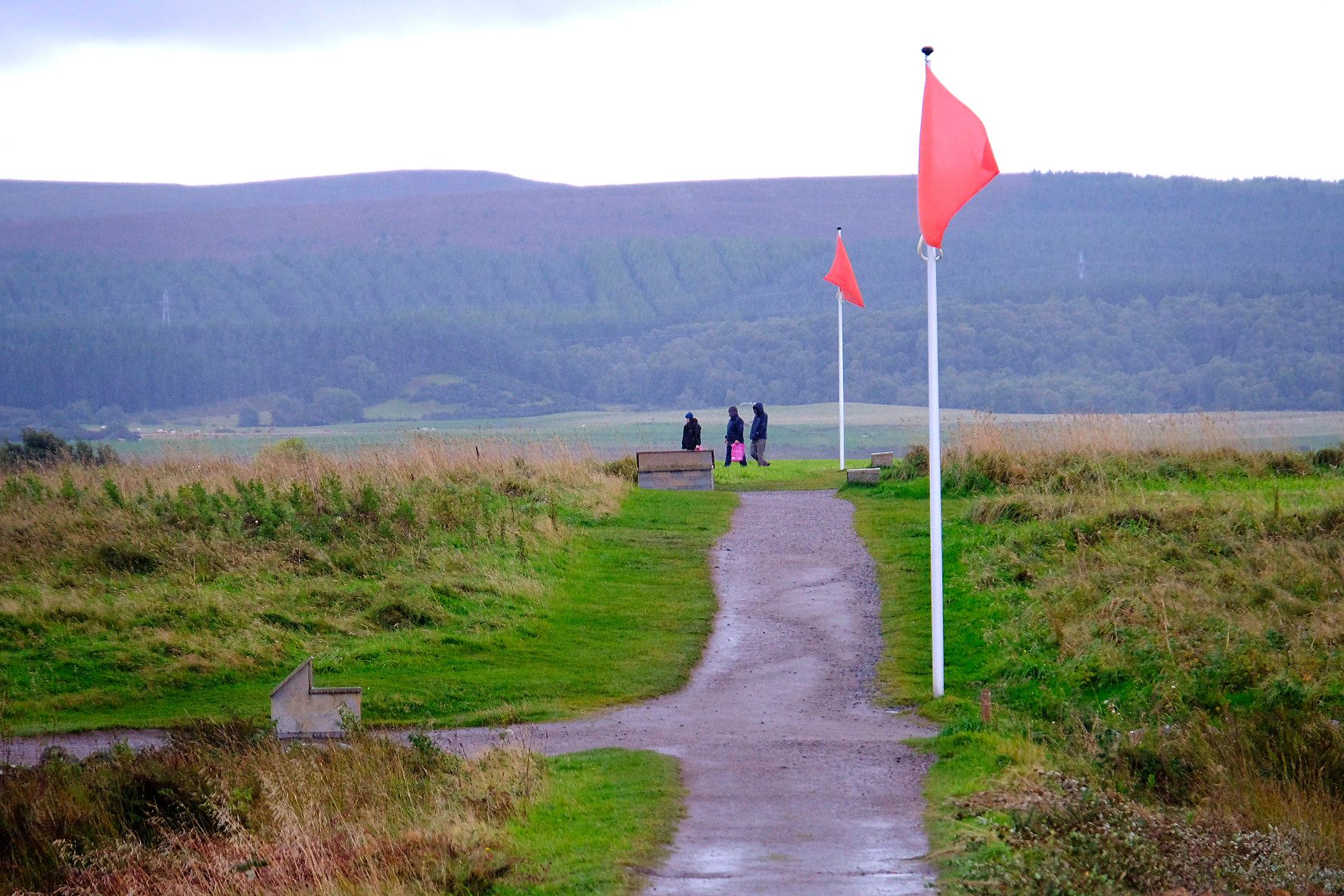
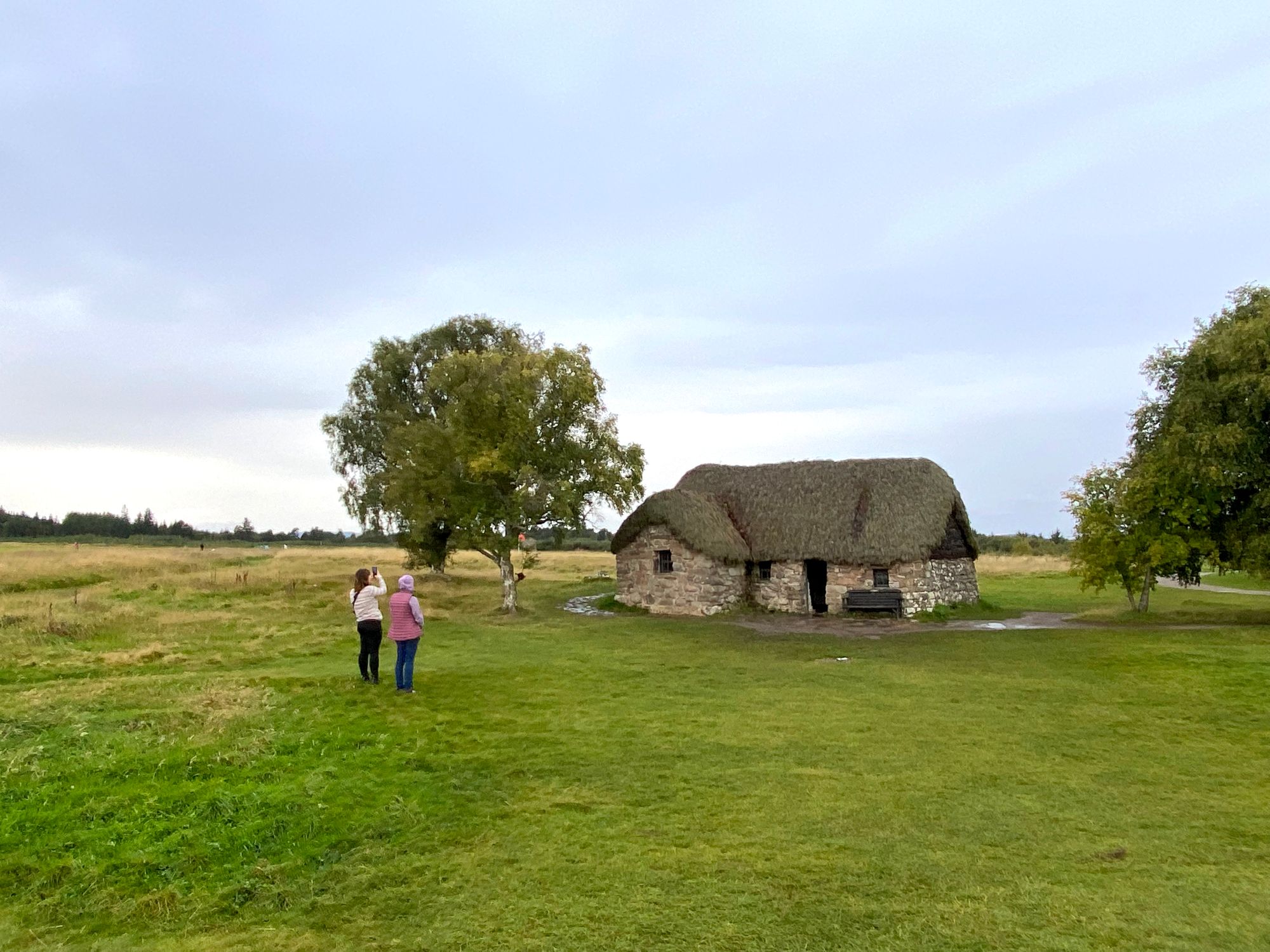
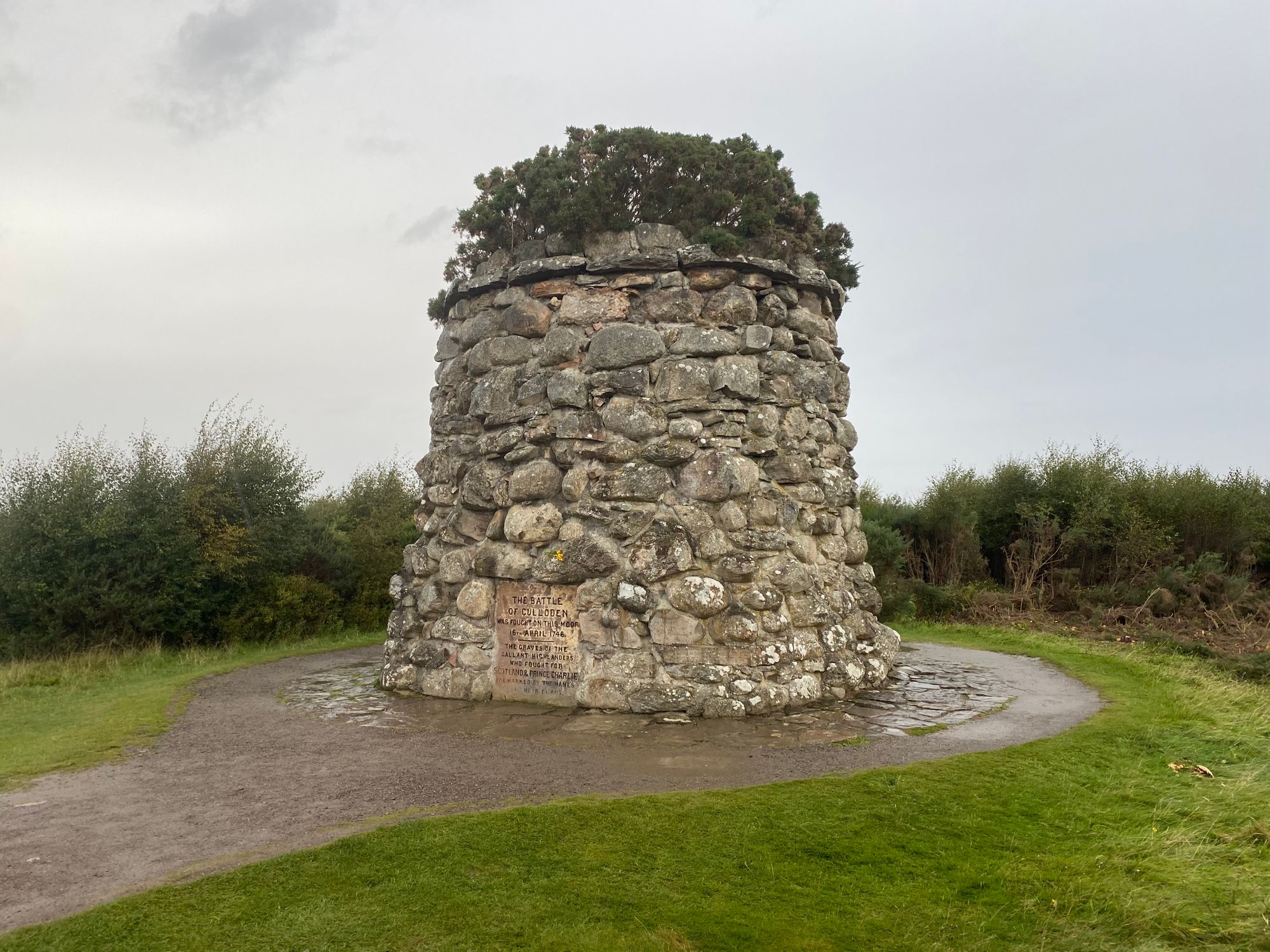
The British Army with Irish soldiers loyal to the monarchy marched from their encampment at Nairm and arrived on the moor in the early morning. Artillery fire was exchanged with little effect and at 1pm Bonnie Prince Charlie ordered his men which were supplemented by French and Irish units to charge.
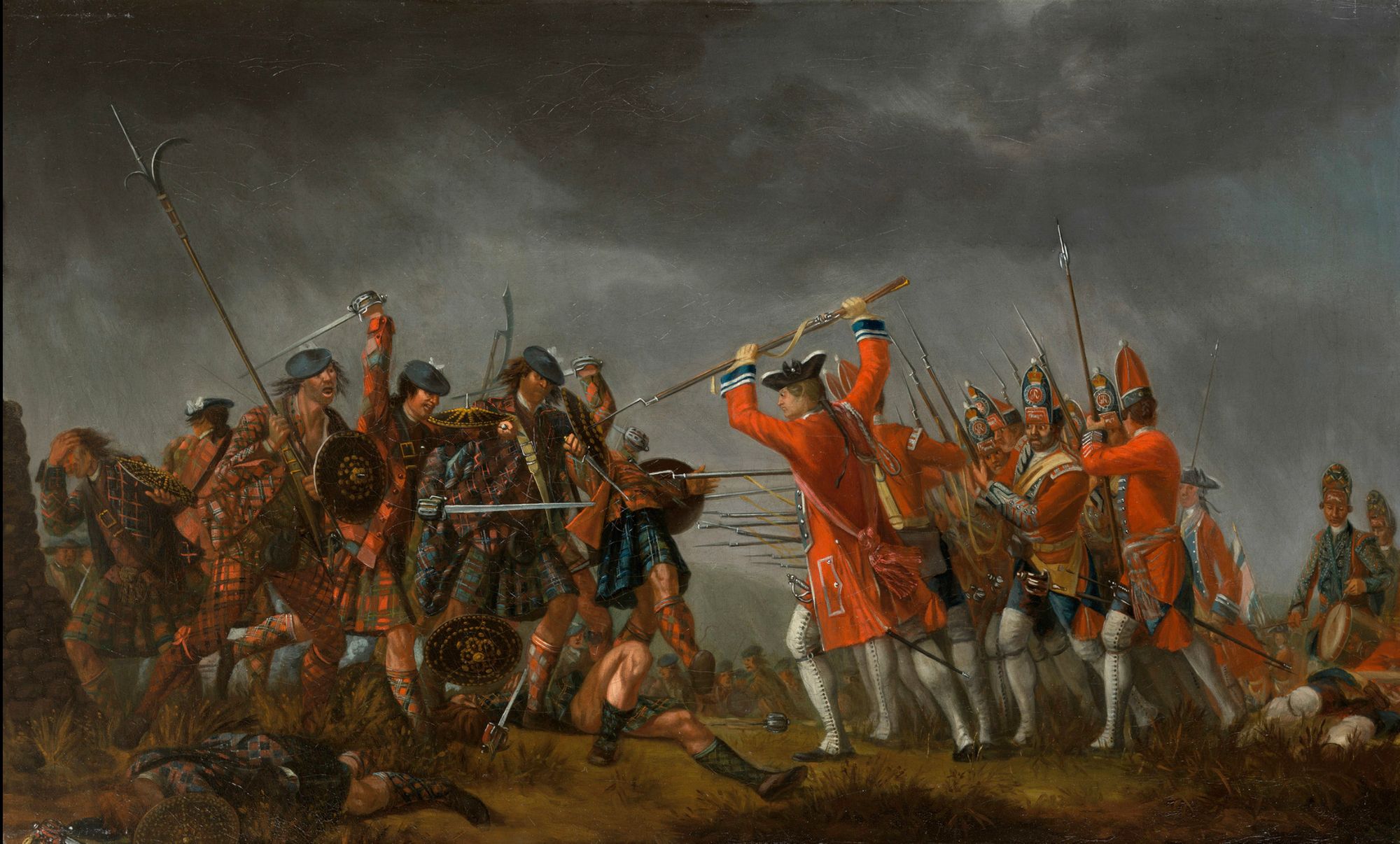
The water saturated moor with peat ponds broke up the advancing Scots while the stone wall enclosure hemmed them in. The British switched their canons to grapeshot and devastated the ranks of the advancing horde of Jacobites yelling their famous war cry. The British maintained the integrity of their lines against the ramshackle approach of a broken up charge. British cavalry rode around the flank of the Scots and broke through walls and descended upon the Scots. Portions of the Jacobite line reached the British, but were effectively stopped and with the cavalry charging in from the flanks the Jacobites started to flee back towards their lines.
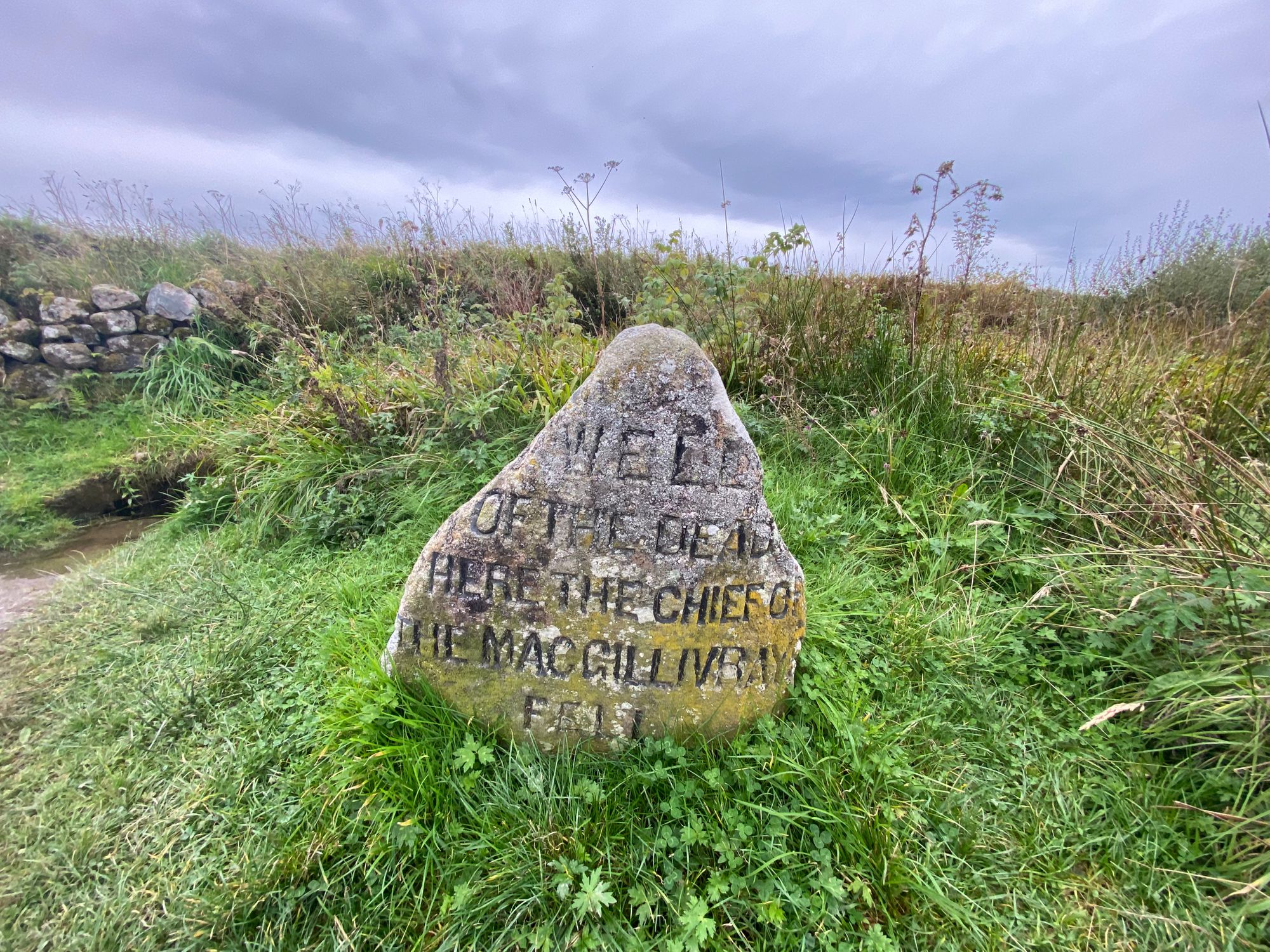
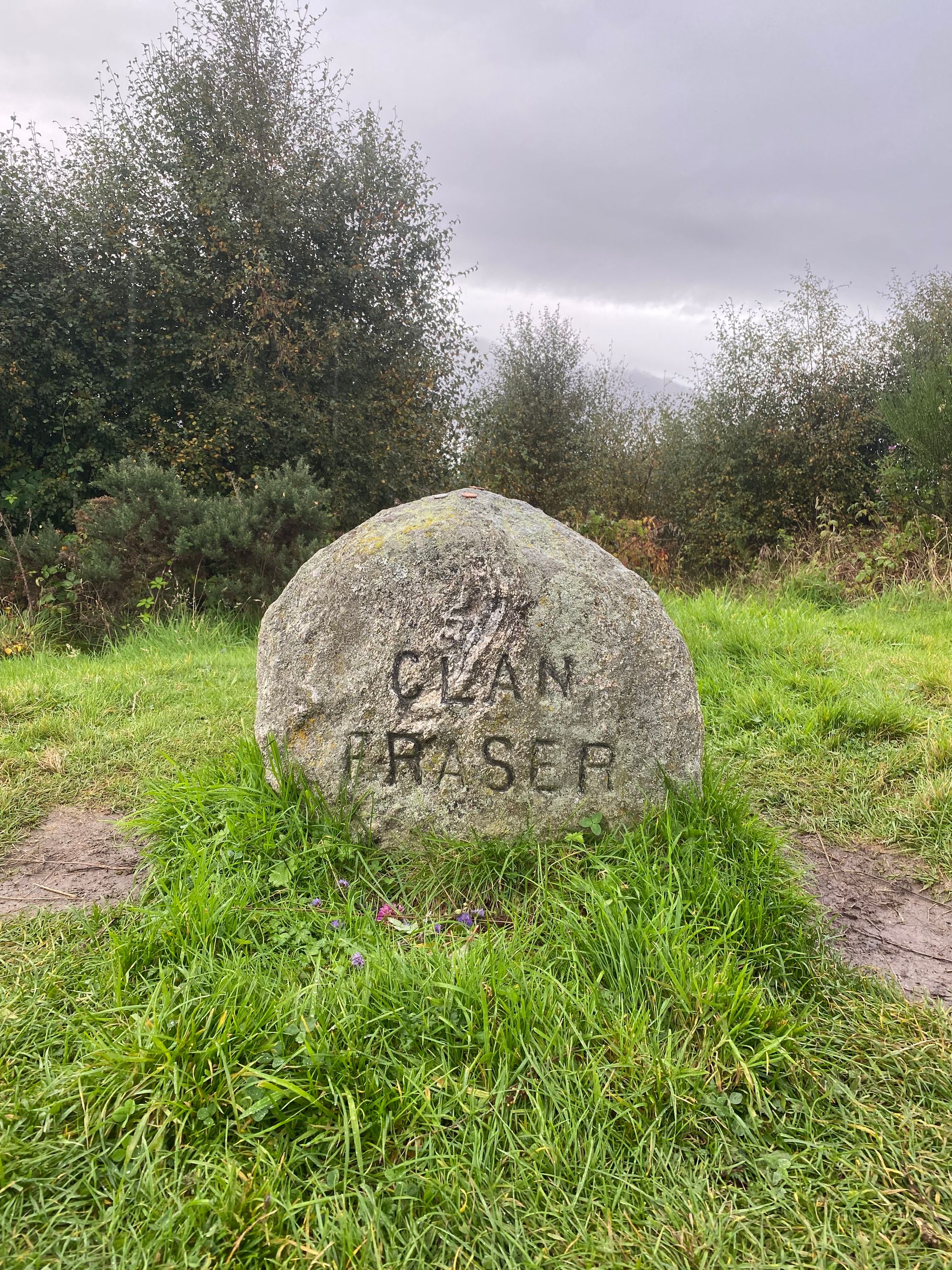
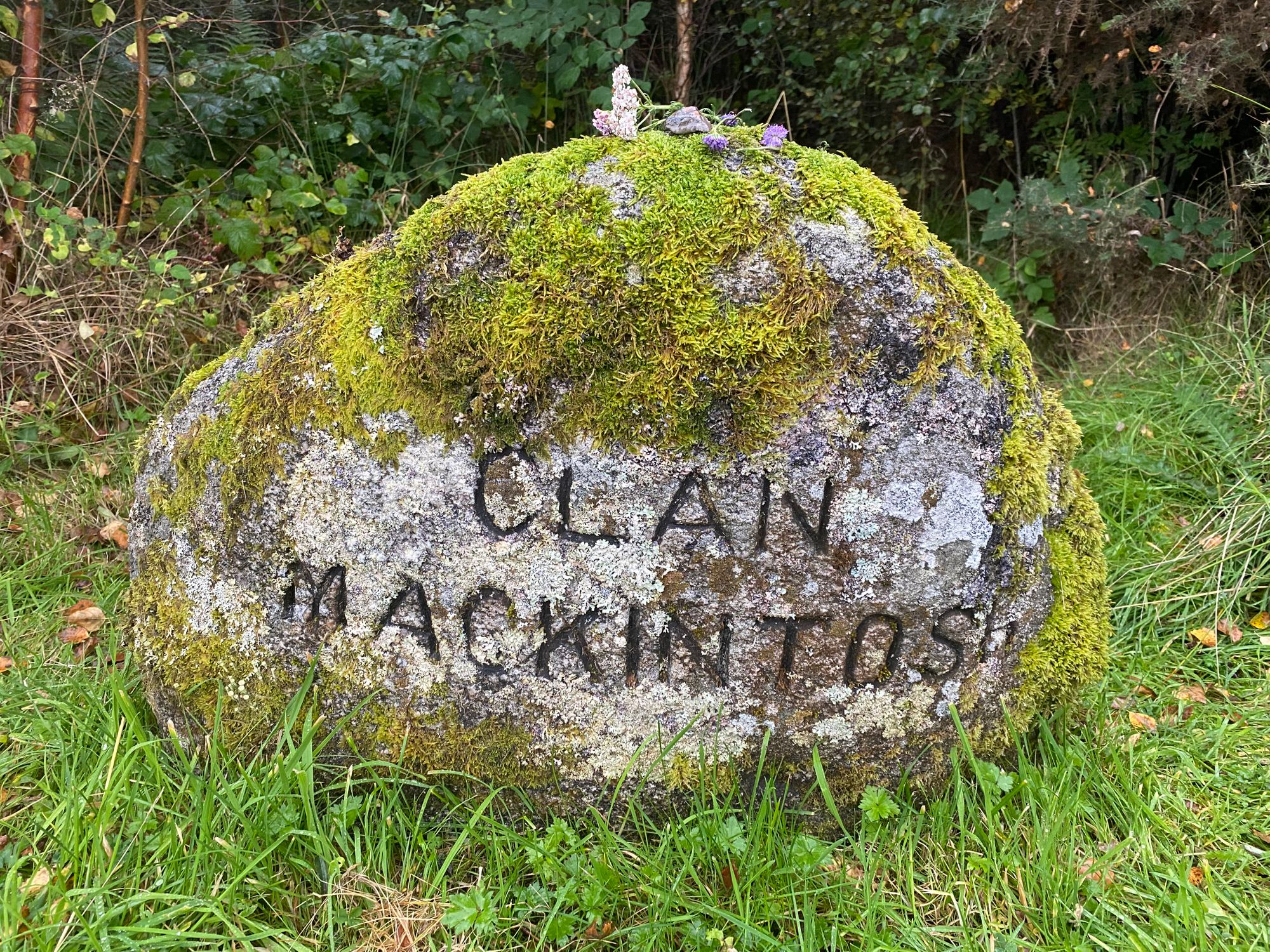
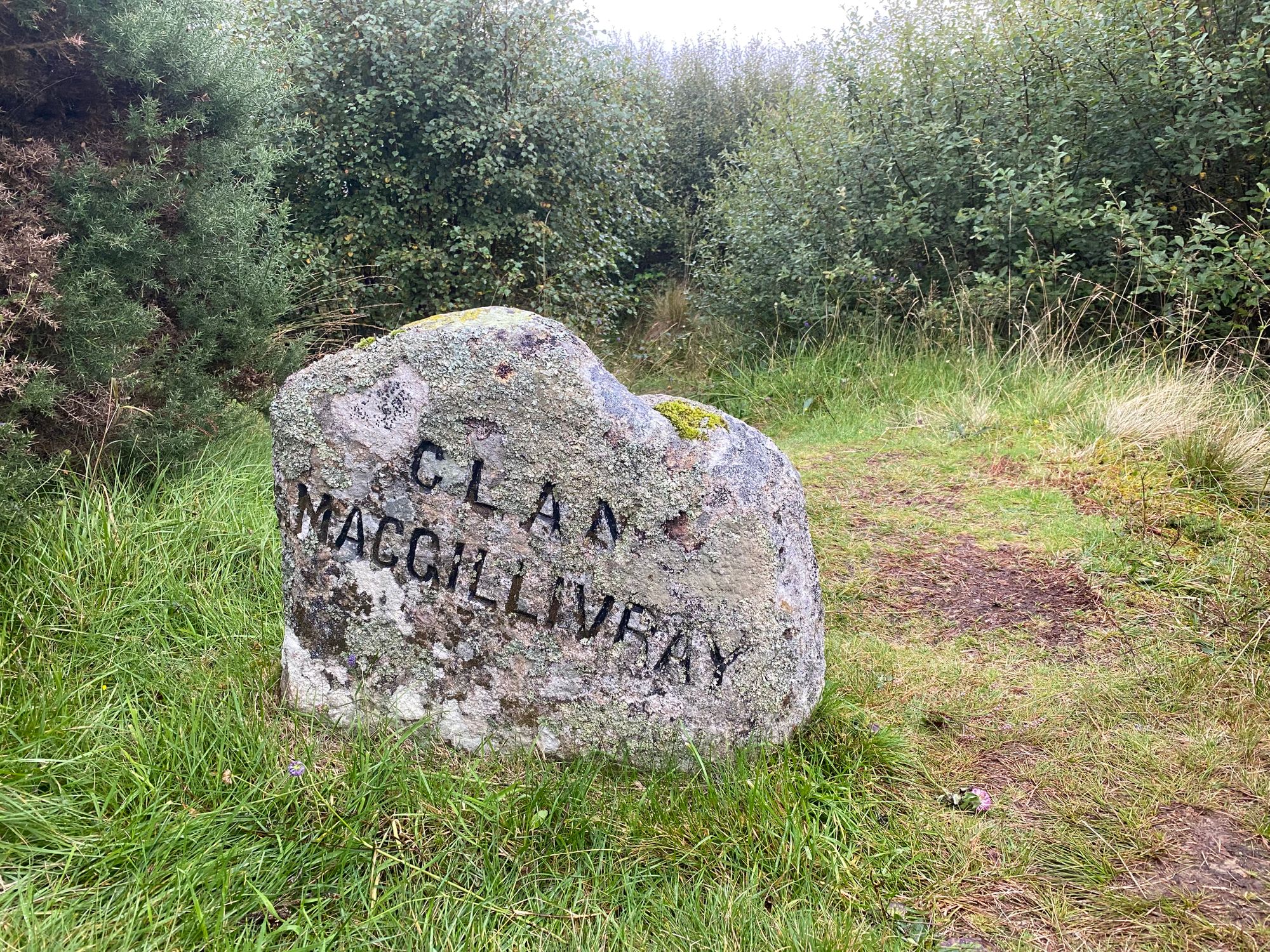
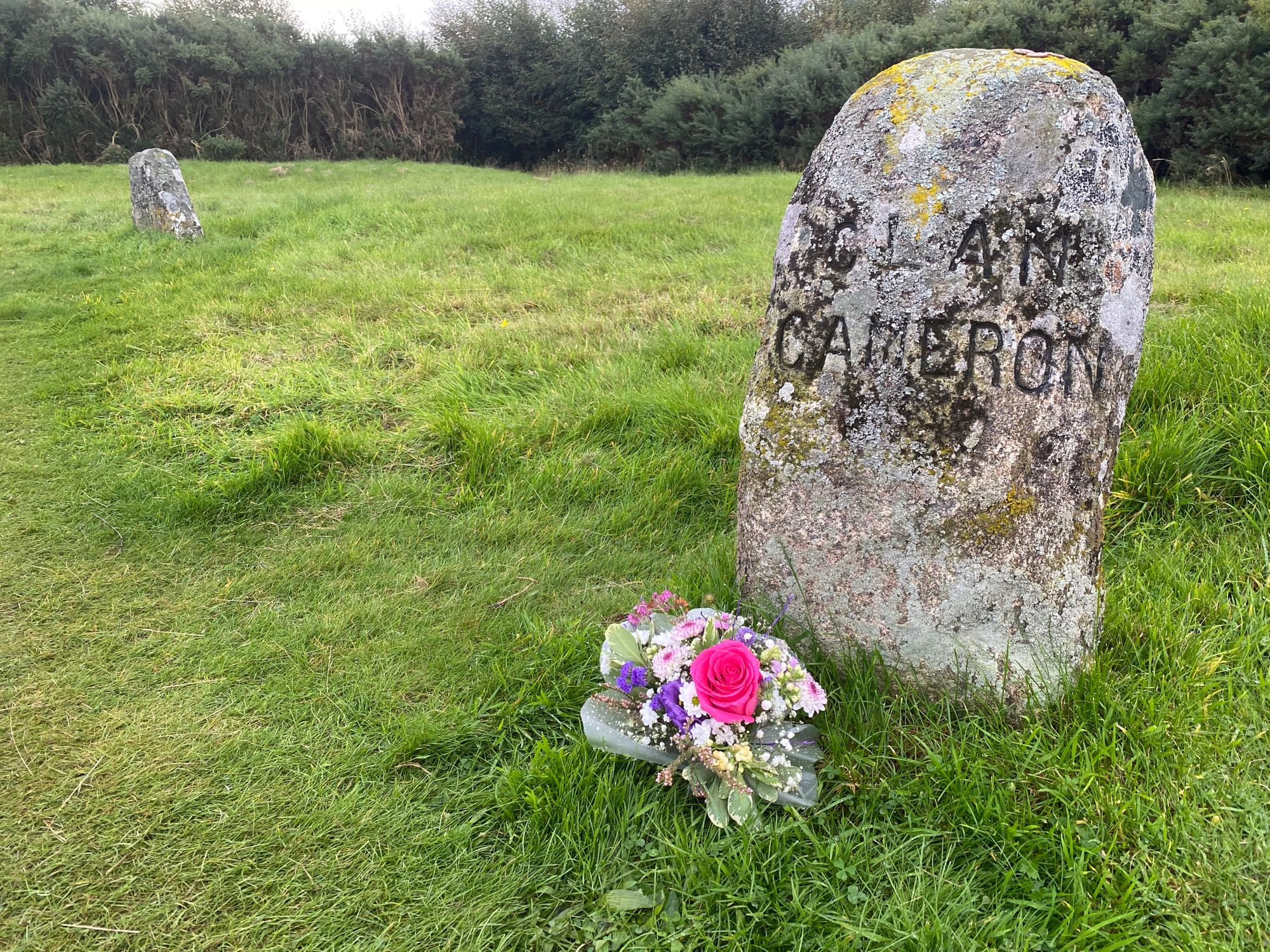
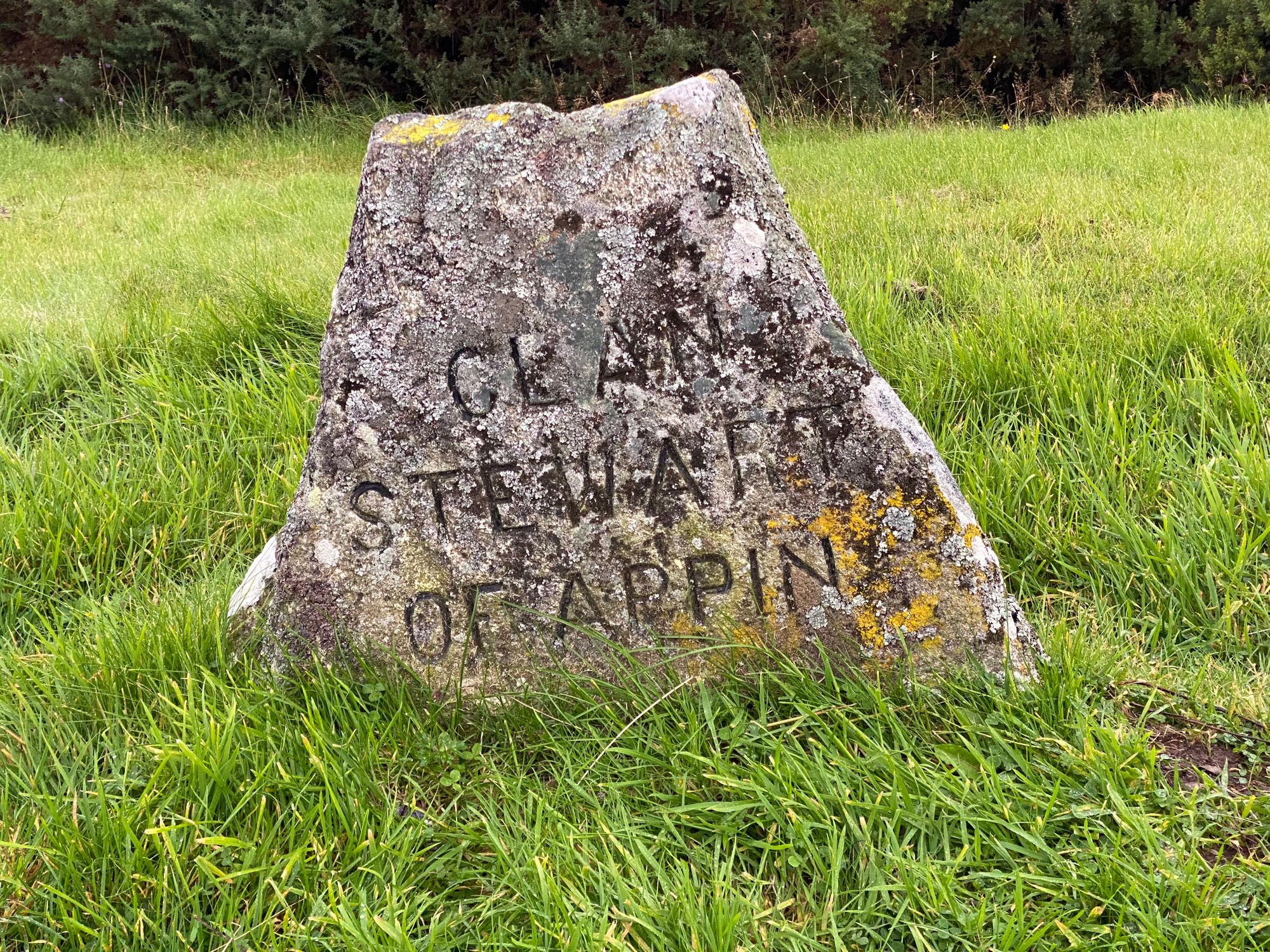
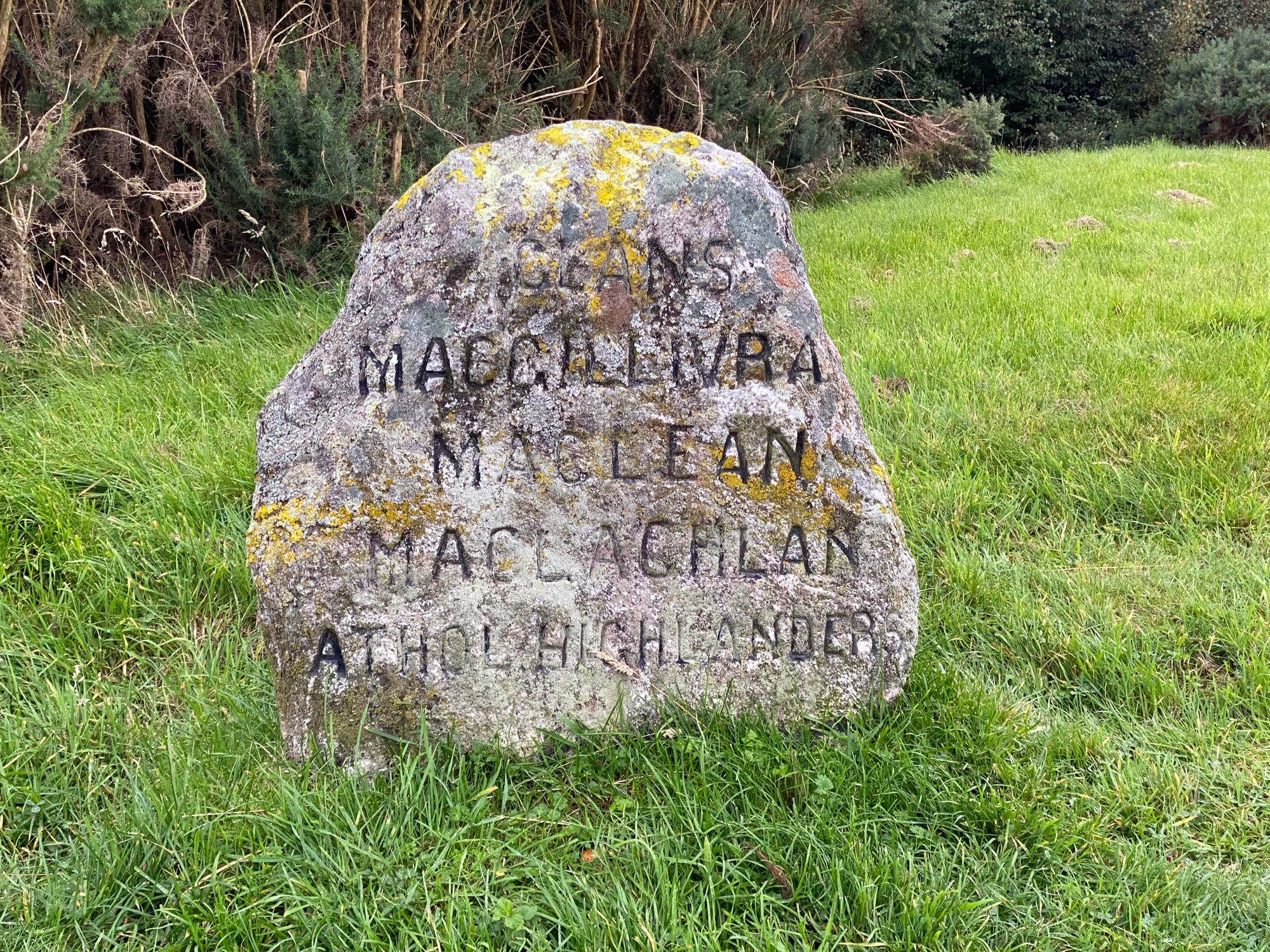
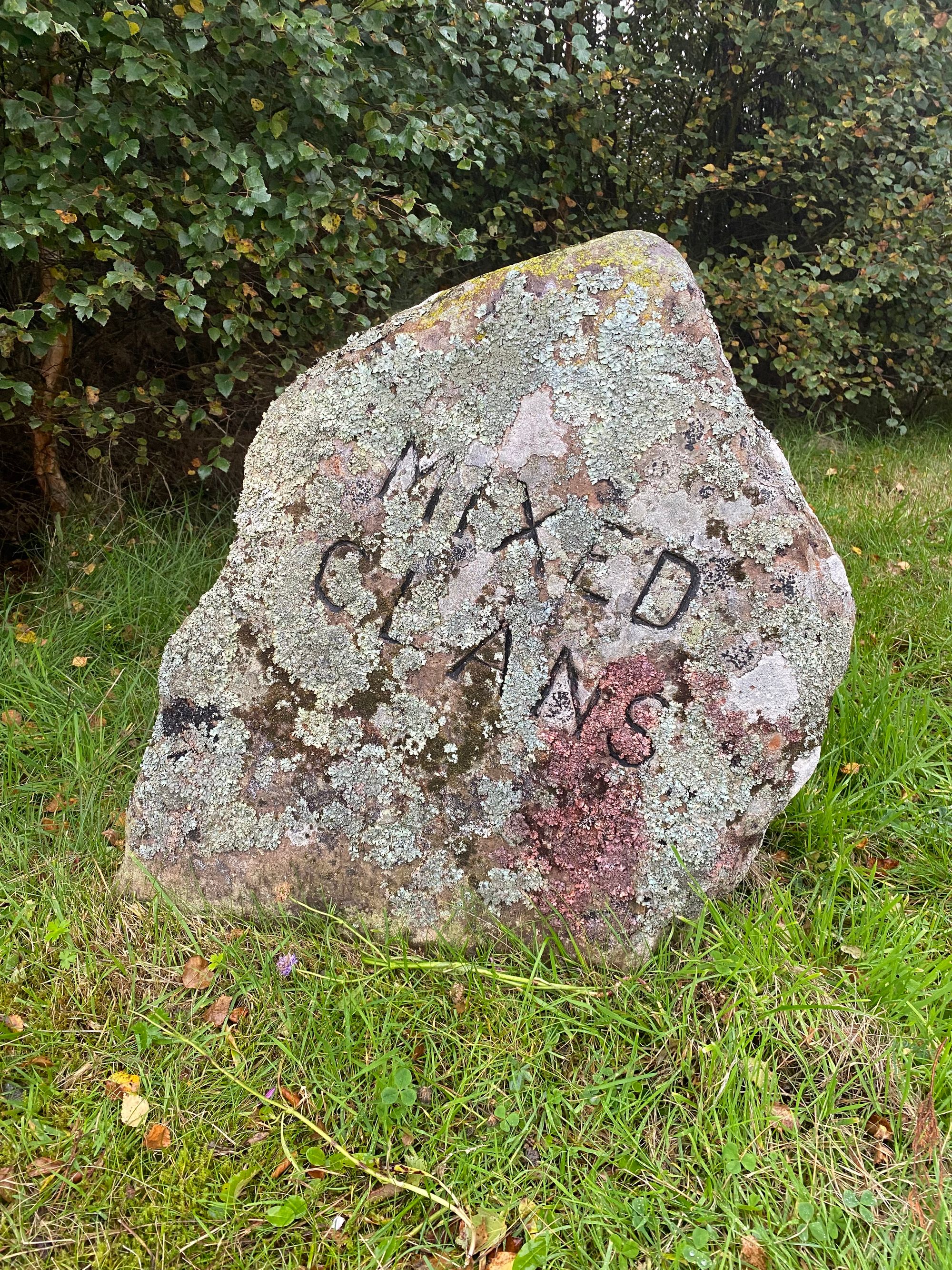
We arrived at 3:15pm and proceeded to check out the museum and visitors center. Excellent, but no photos allowed. Took a 30 minute tour of a portion of the battlefield and then wondered the paths between the lines of confrontation where one comes upon these standing stones spread out across the battlefield marking the areas where Jacobites from the Scottish clans fell, as well as one marker for the British casualties.
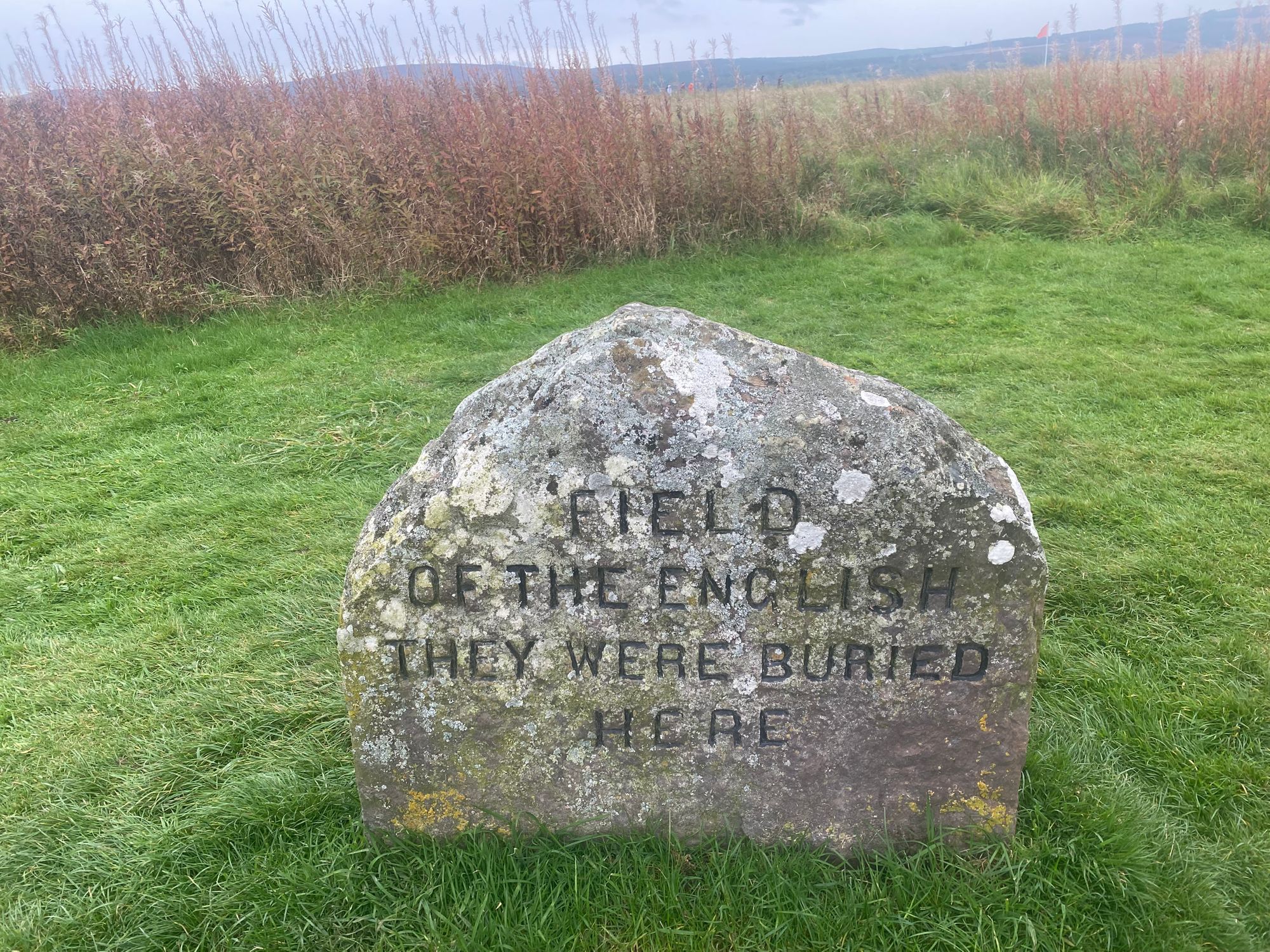
It was intermittent drizzle and there were few people on the trails. I took one to a remote portion of the battlefield and came across some Highland cattle with their long shaggy coats.
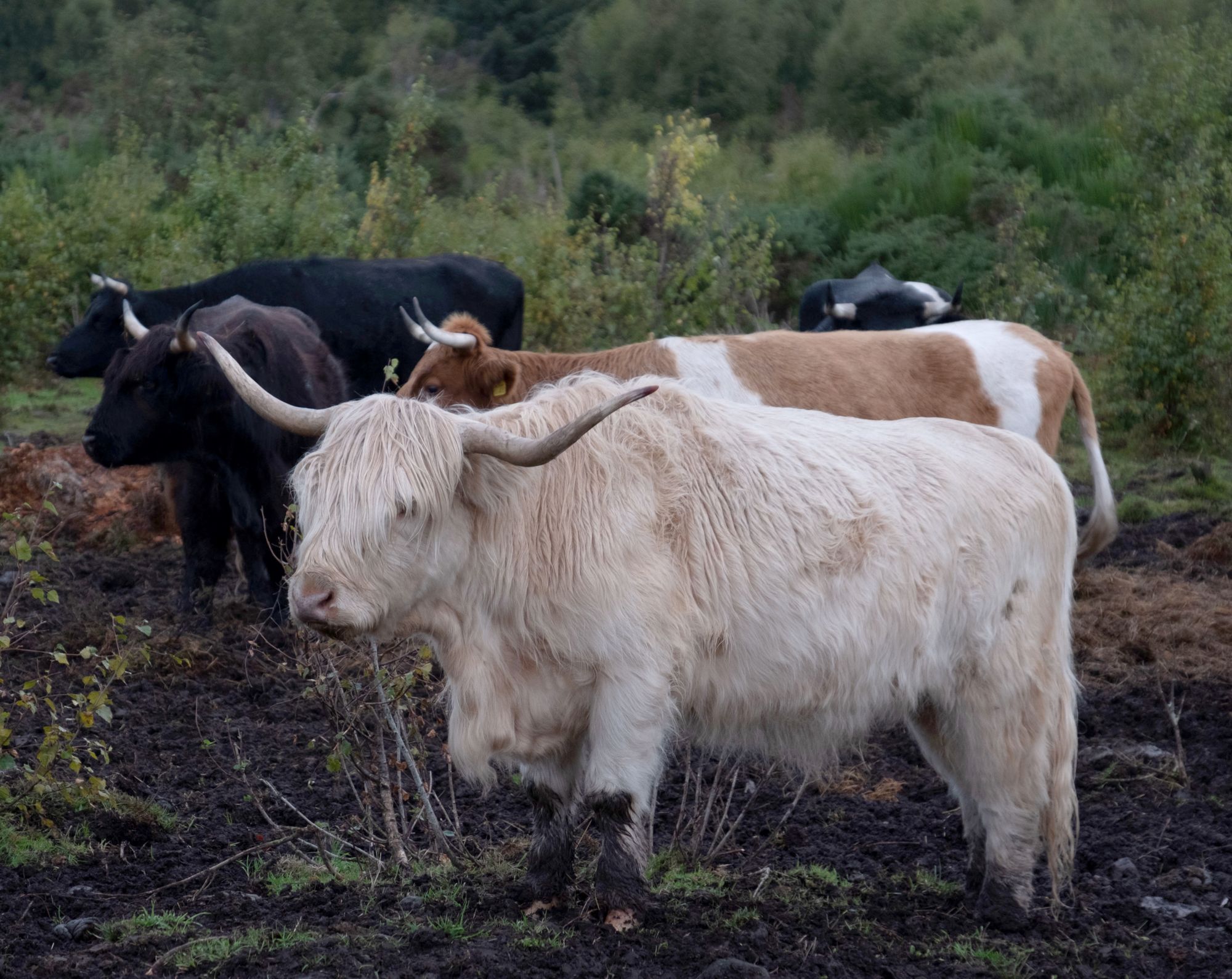
The battle only lasted one hour with the Jacobites completely routed. However, much to his dishonor, the Duke of Cumberland ordered his soldiers to hunt down and kill the Jacobite soldiers they could find. This went on well into the night as the British went house-to-house and though the woods killing the wounded and those in hiding.
The Battle of Culloden was the last battle fought on English soil.
Bonnie Prince Charlie with a 30,000 pound price on his head fled to western Scotland and after evading bounty hunters and British soldiers for five month eventually was rescued by French frigates that brought him back to exile in France. He continued to try and rally support, even secretly returning to England where he repudiated Catholicism and embraced the Protestant faith. He was unsuccessful convincing the French to back him again and died in 1788 at the age of 67 in Italy.
Day Three | Inverness to Sterling
With time running out and only one day before we needed to meet up with our hiking partners, we arose early - eating some pastries at a local bakery and heading towards Loch Ness. The weather started out sunny with intermittent clouds.
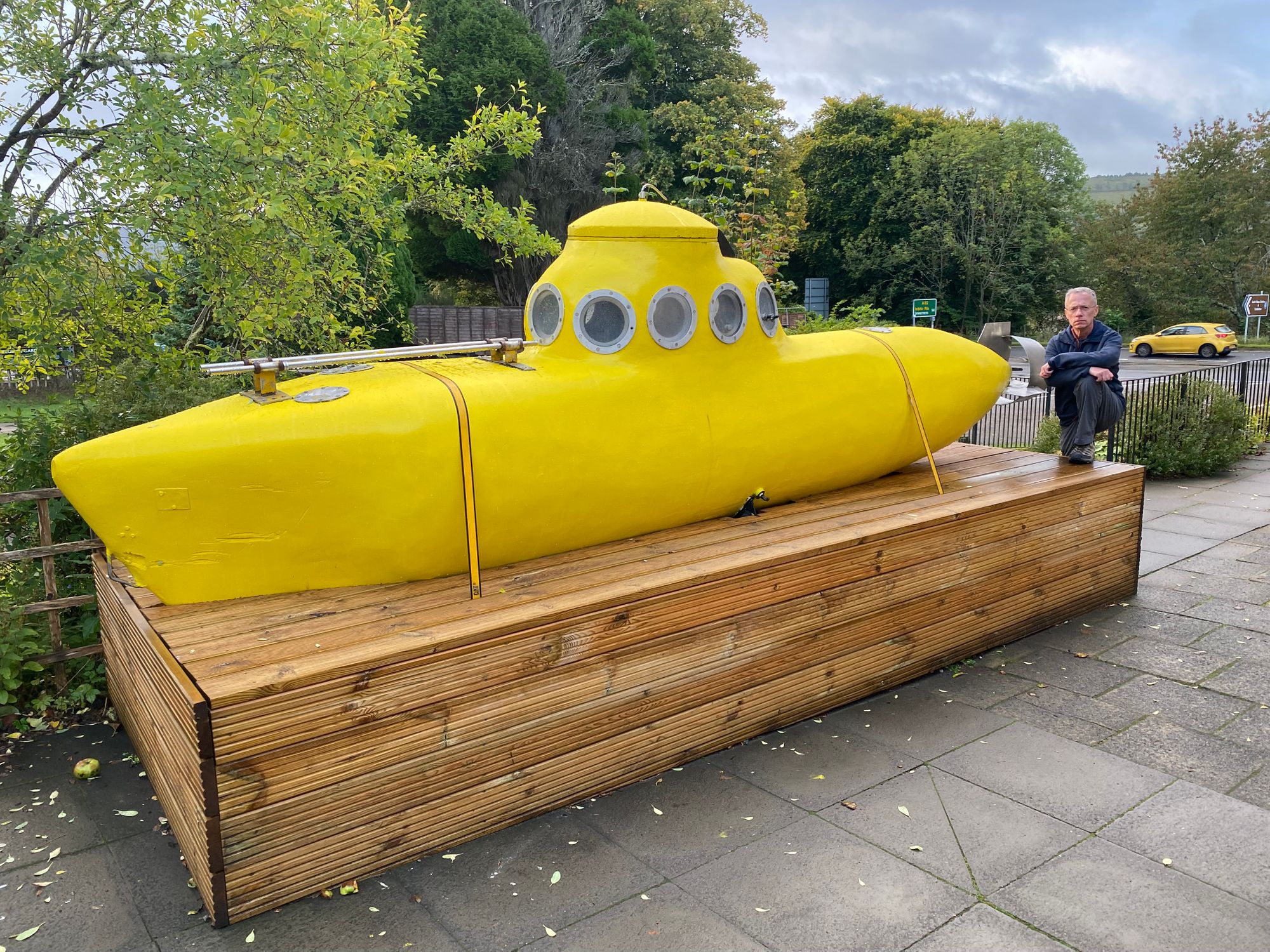
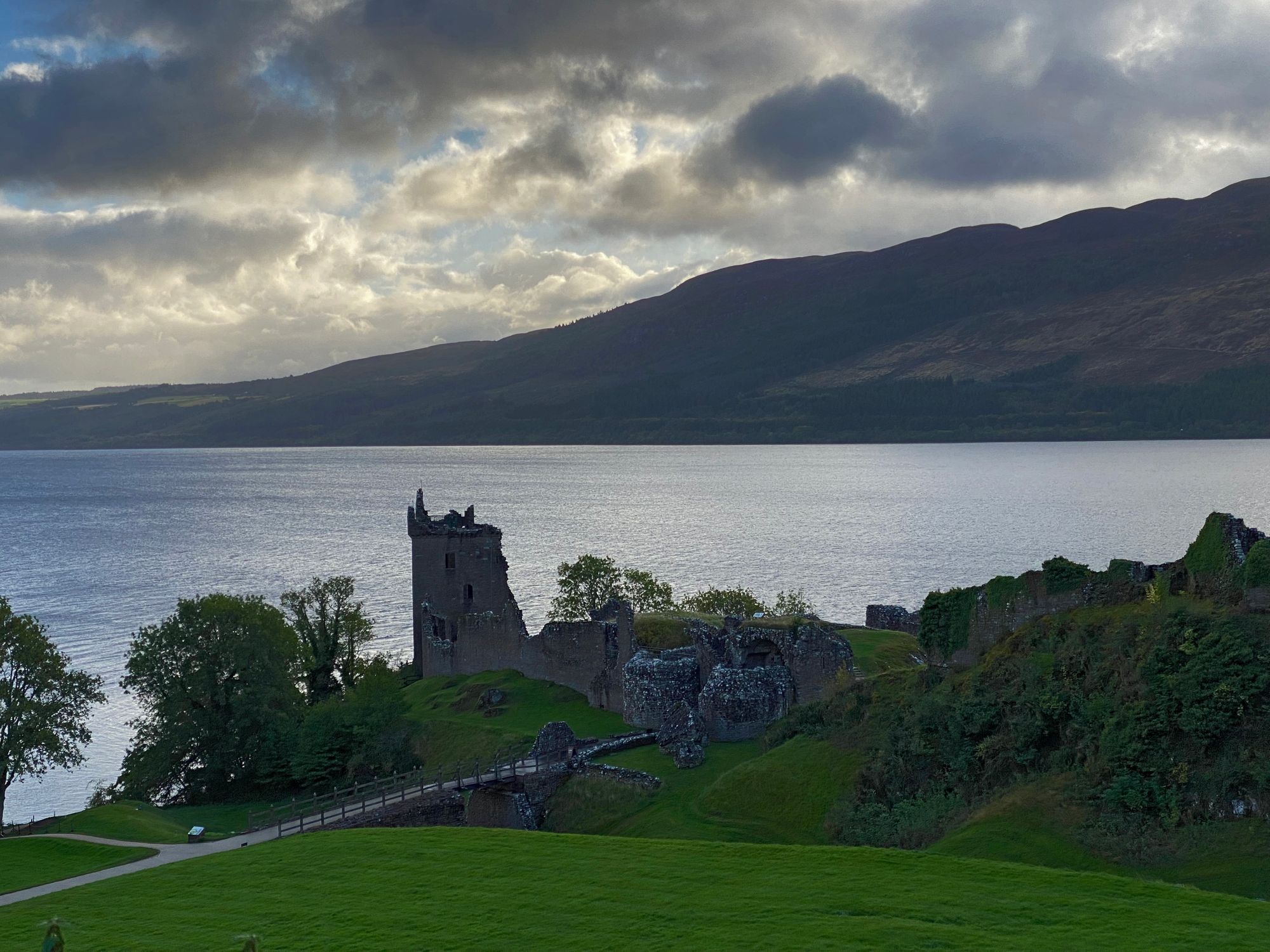
We were too early to visit Urquhart Castle on Loch Ness, but were able to catch glimpses of it through the foliage that had been purposefully planted to obscure the view from the parking lot. On our way towards Fort William, we pulled off and I waded a few meters into the frigid waters and beckoned Nessie to show herself.
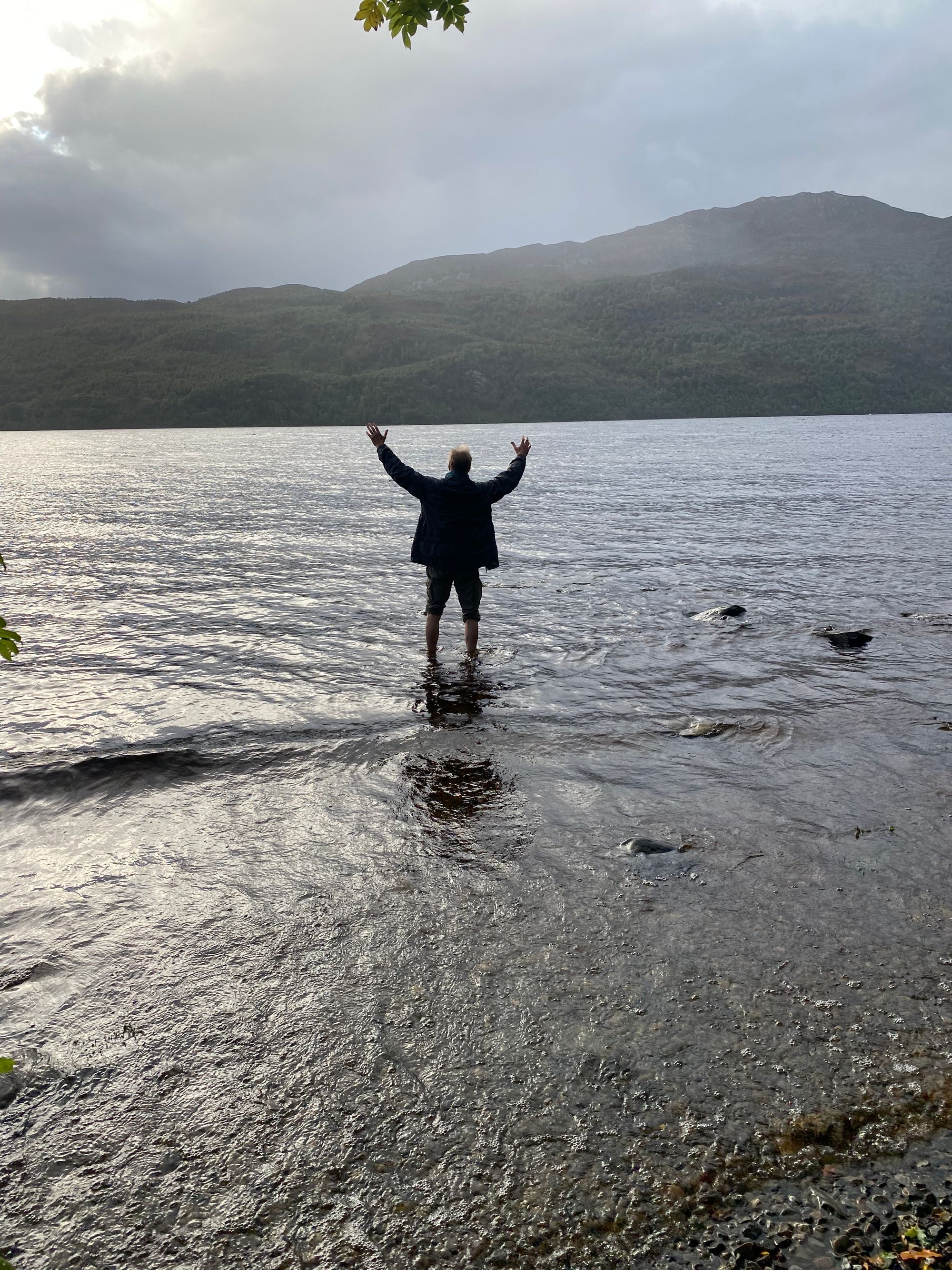
As we proceeded further west the weather started closing in on us.

The weather in Scotland can be extremely changeable. After the downpour at Invergarry Castle, it started to clear and the sun peaked out and so we decided to see if we could visit Loch Arkaig where the movie Garnet's Gold took place. A quirky movie about an Englishman returning decades later to a remote place where he found an unusual staff and hoped to find a long lost treasure of Spanish gold that was given to finance the Jacobite Uprising of 1745.
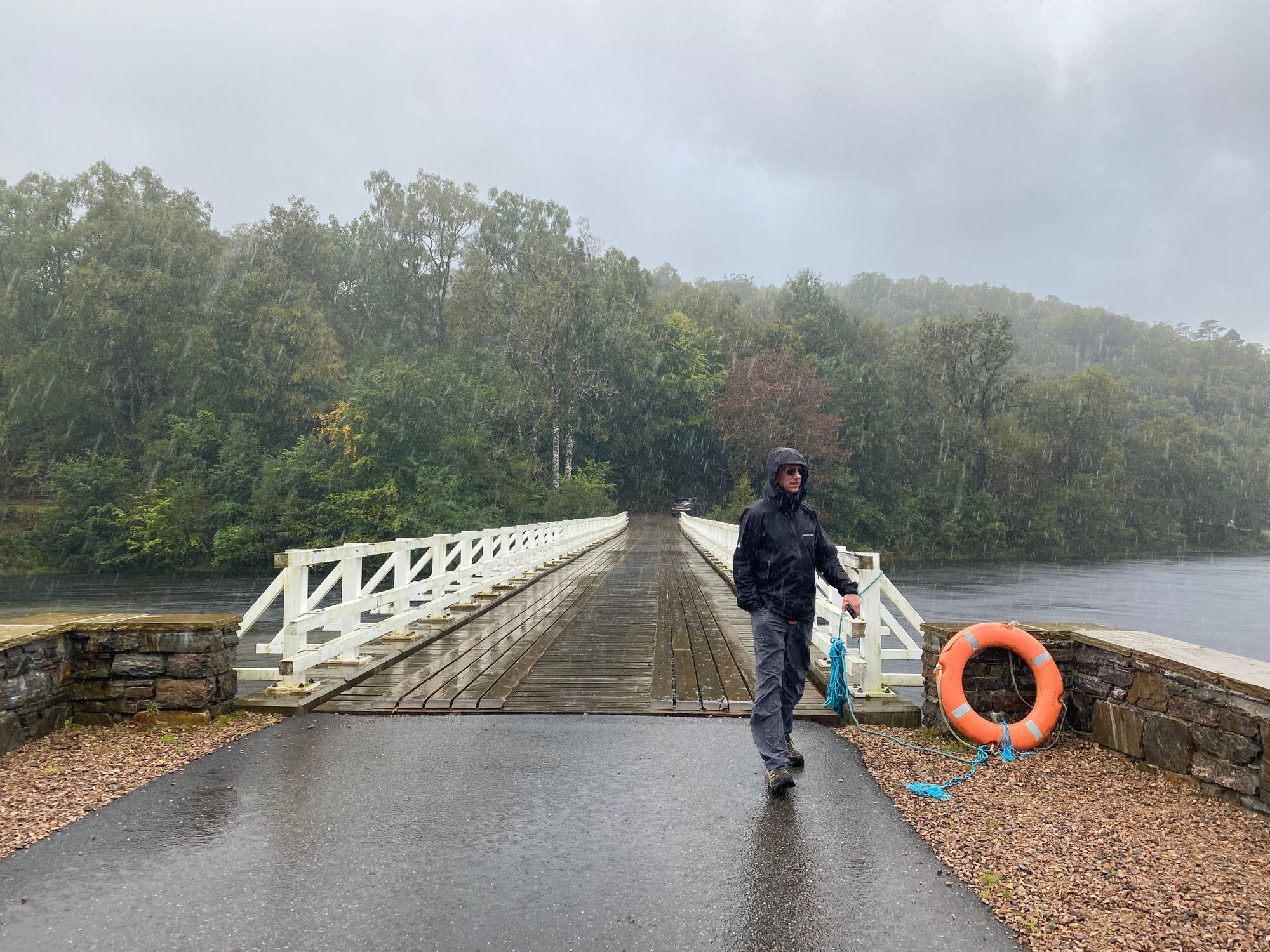
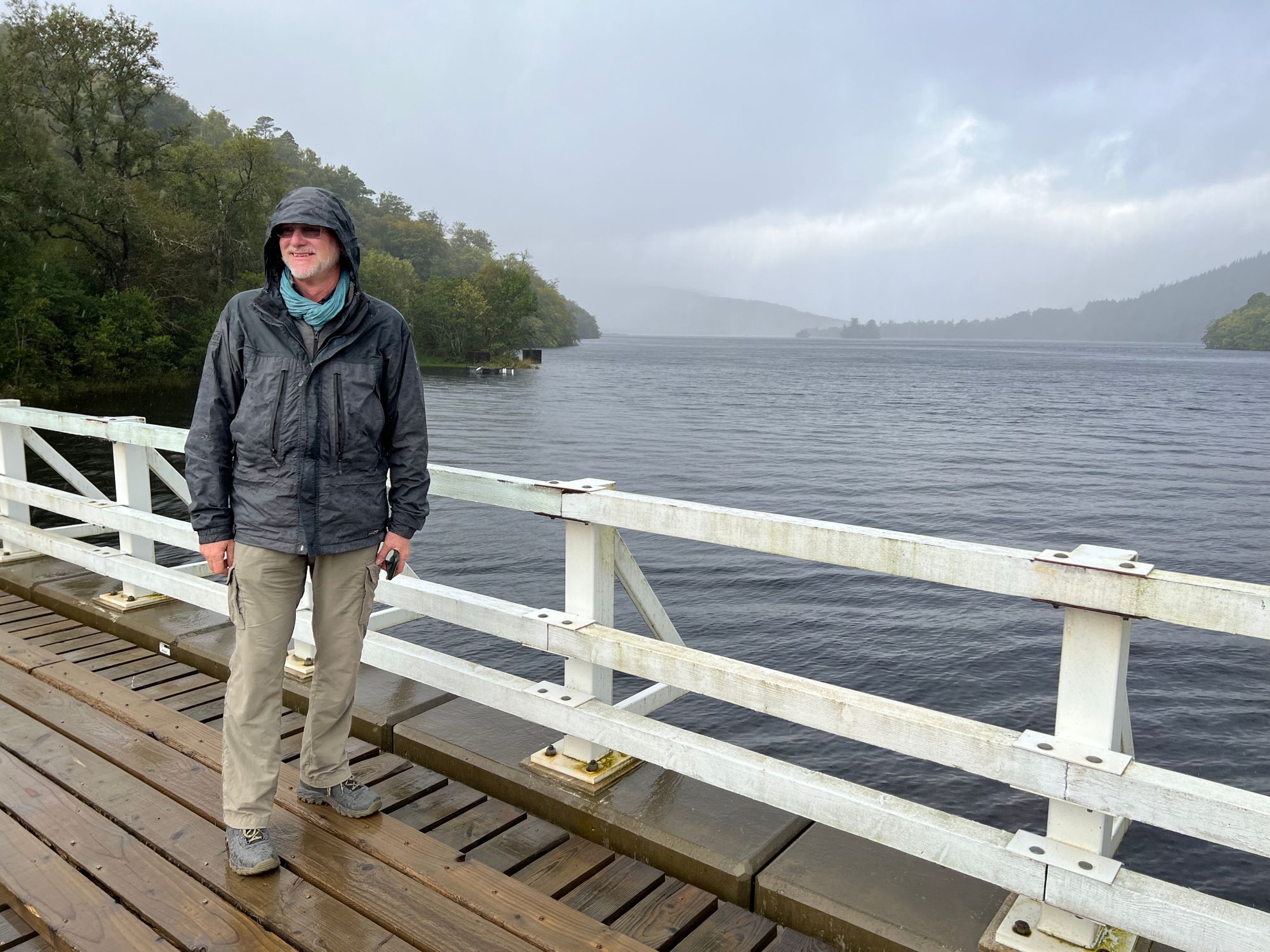
With the weather closing in once again we caught a glimpse of the lake and then turned around at the end of the road.
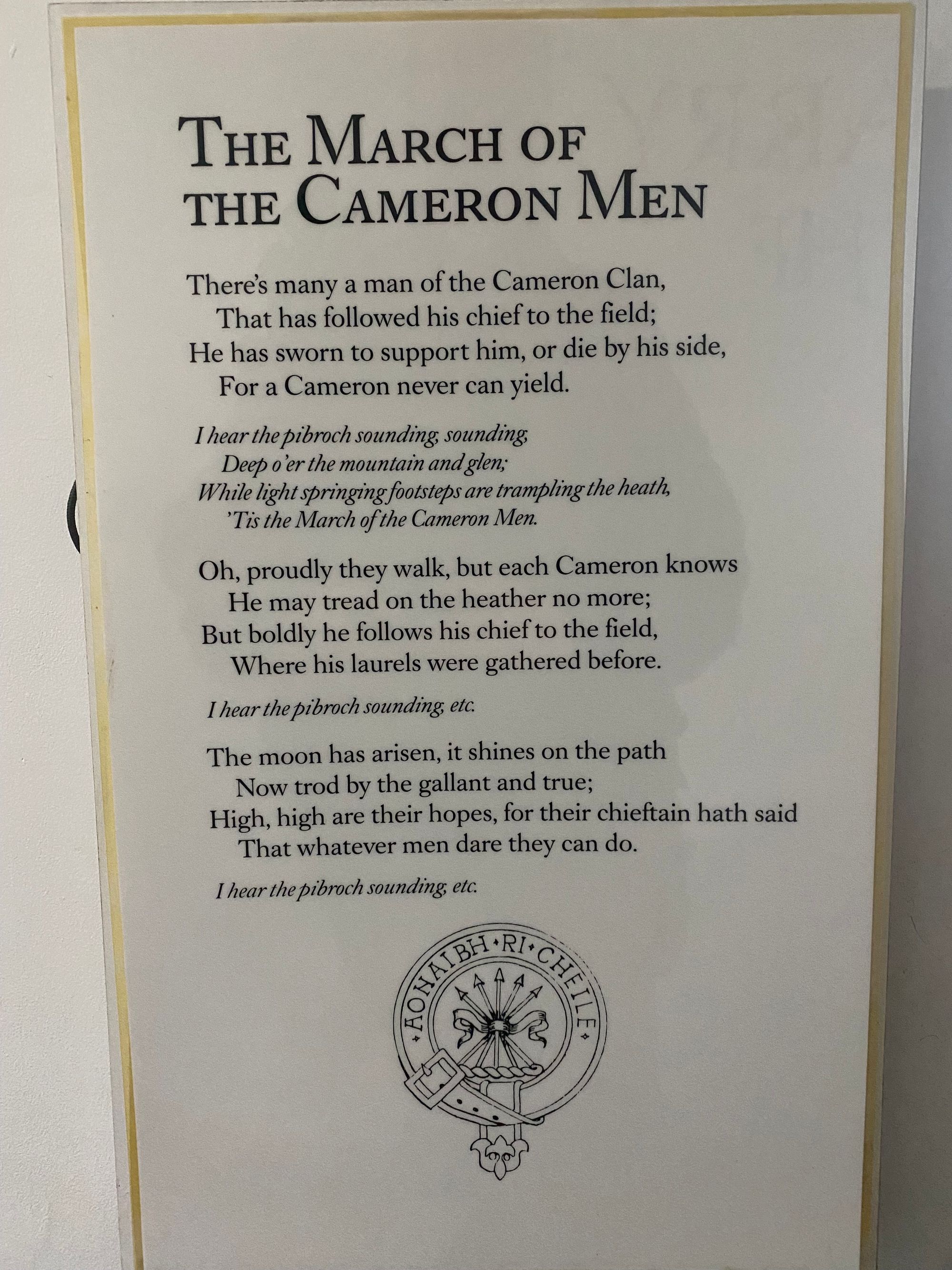
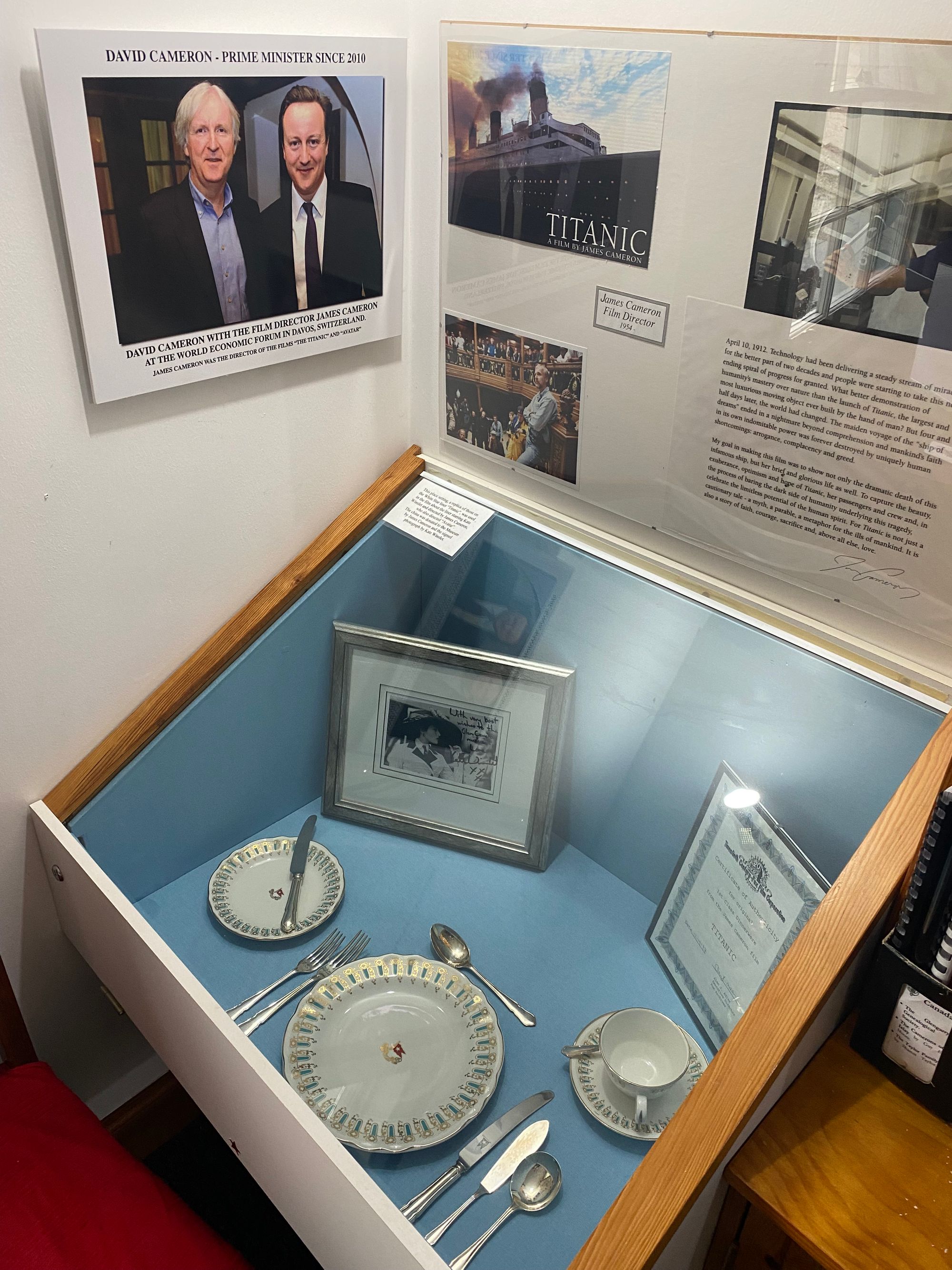
The rain was coming down in droves and with a precarious single lane road we decided to pull over and visit the Clan Cameron Museum. We were the first and at that time the only visitors that day. A tiny museum but very interesting with artifacts from the Cameron Clan, the WWII commando training camp that was situated there as well as Jacobite Uprising memorbilia with personal items from Bonnie Prince Charlie.
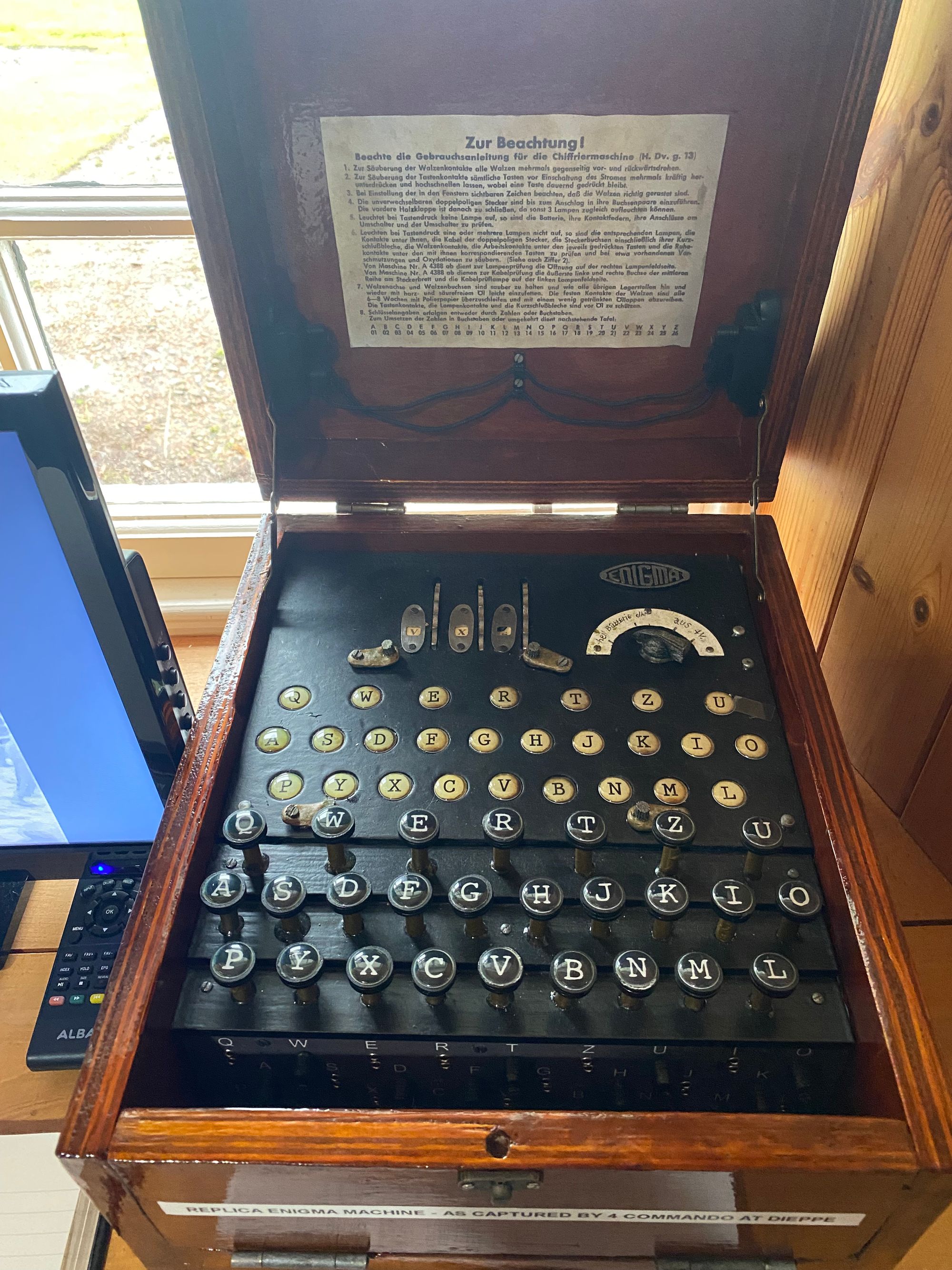
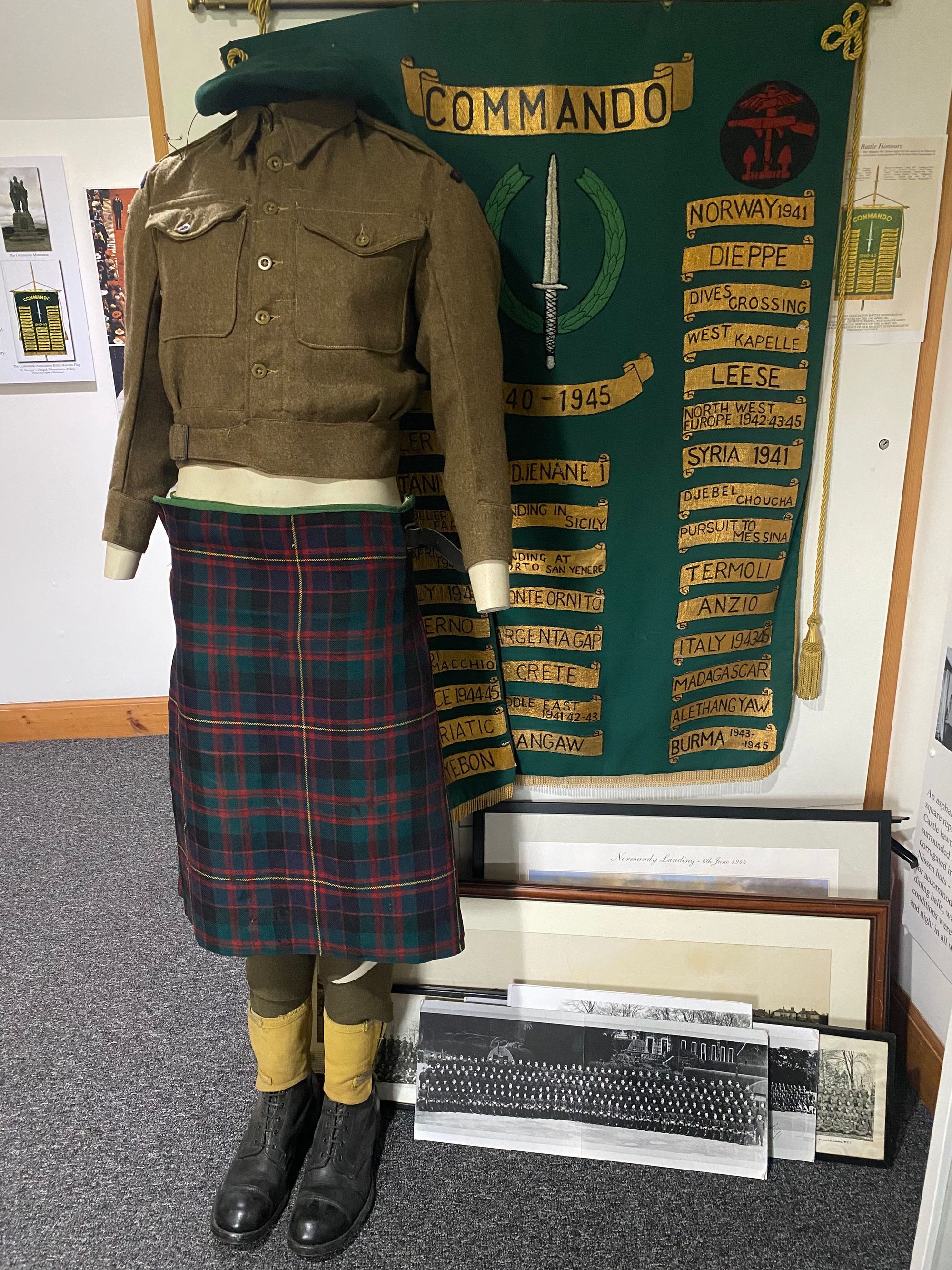
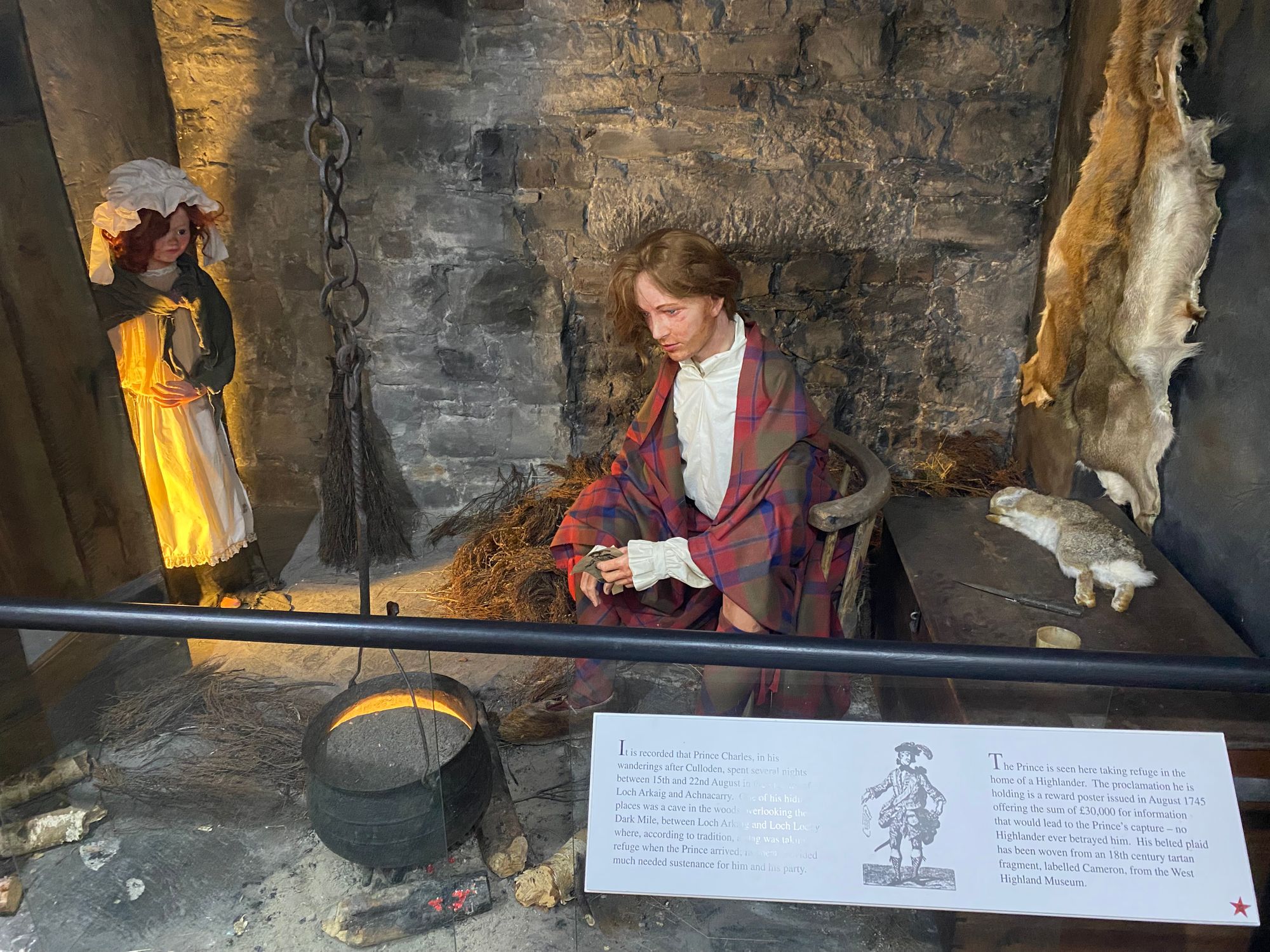
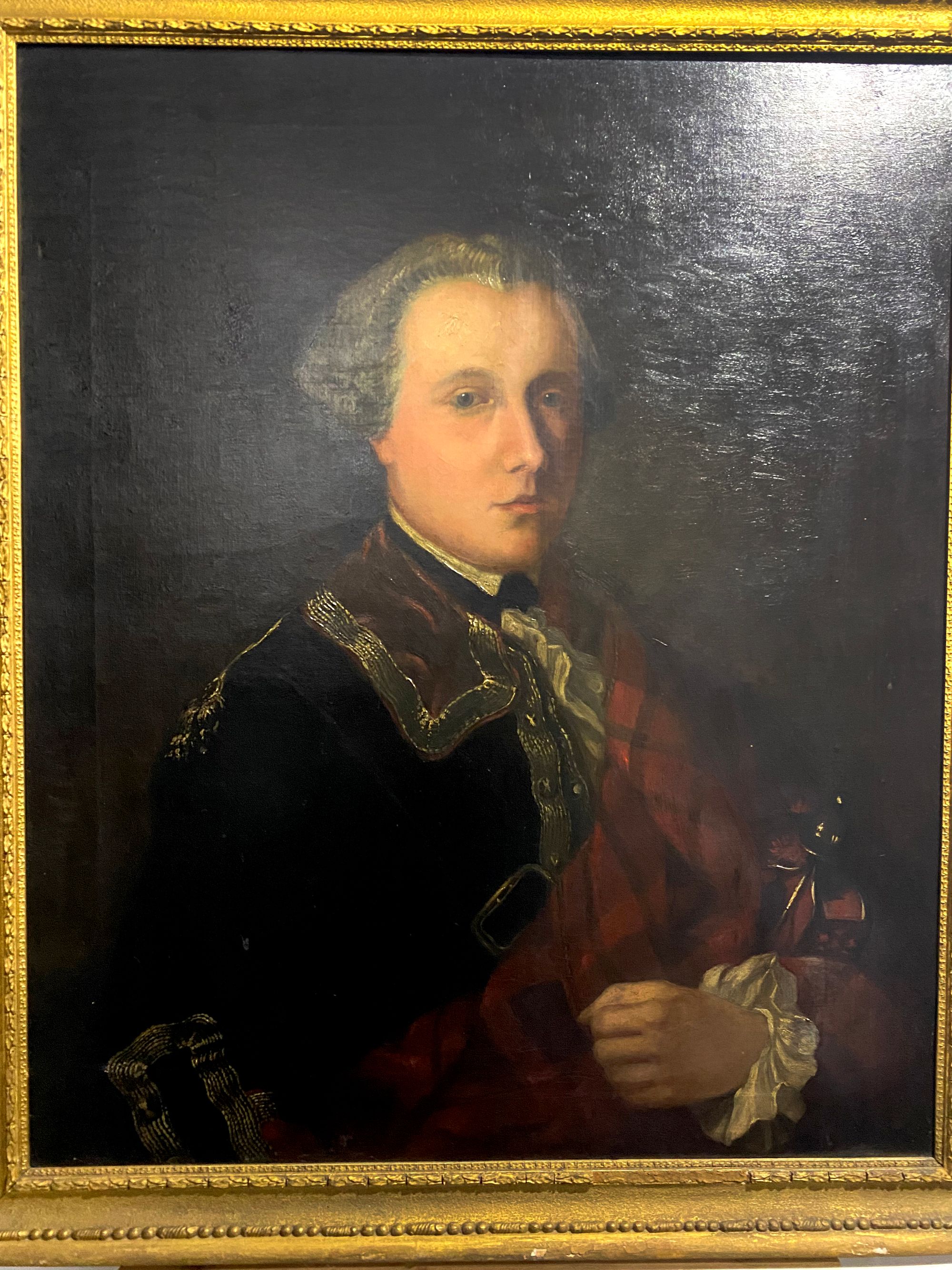
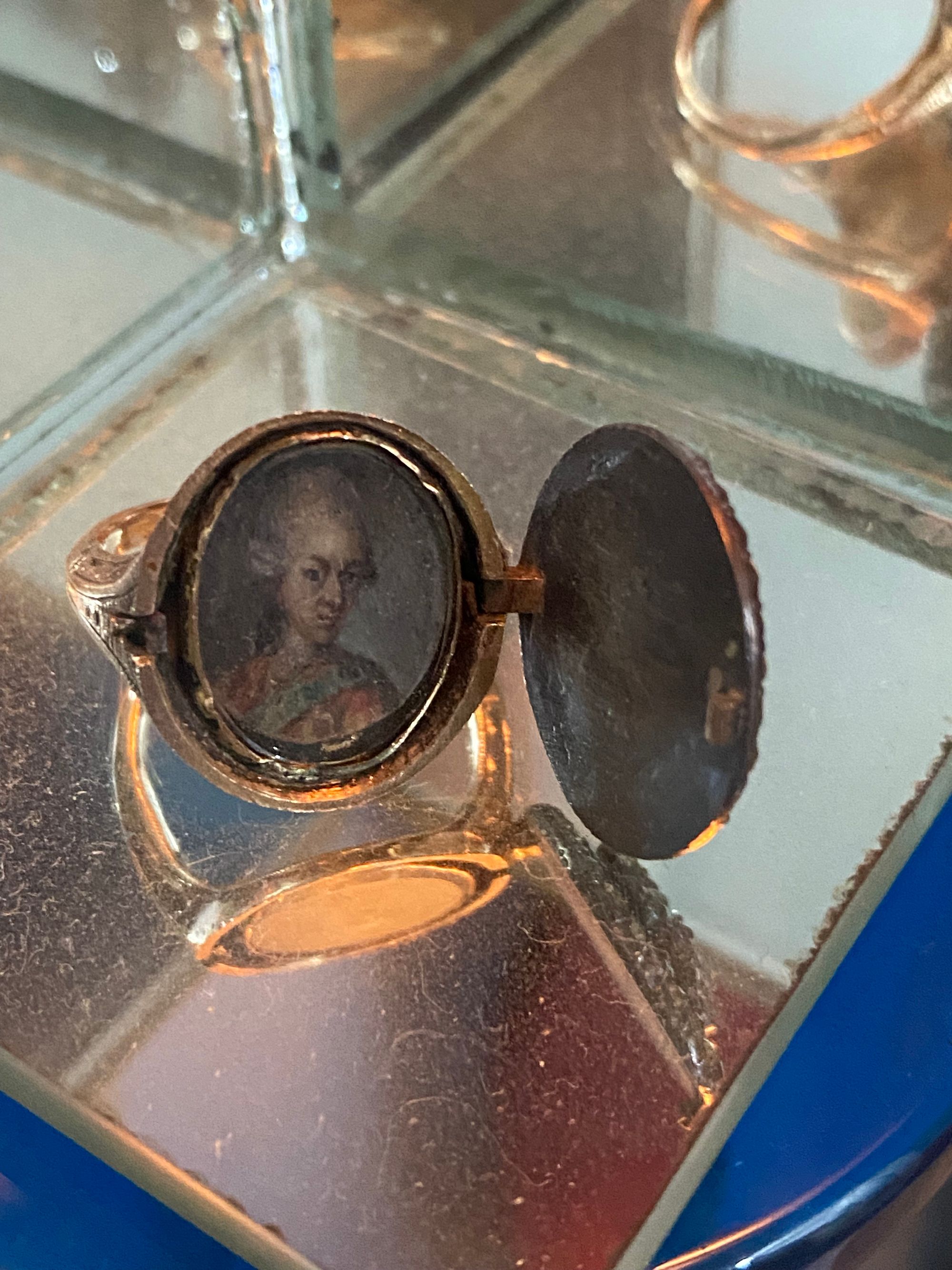
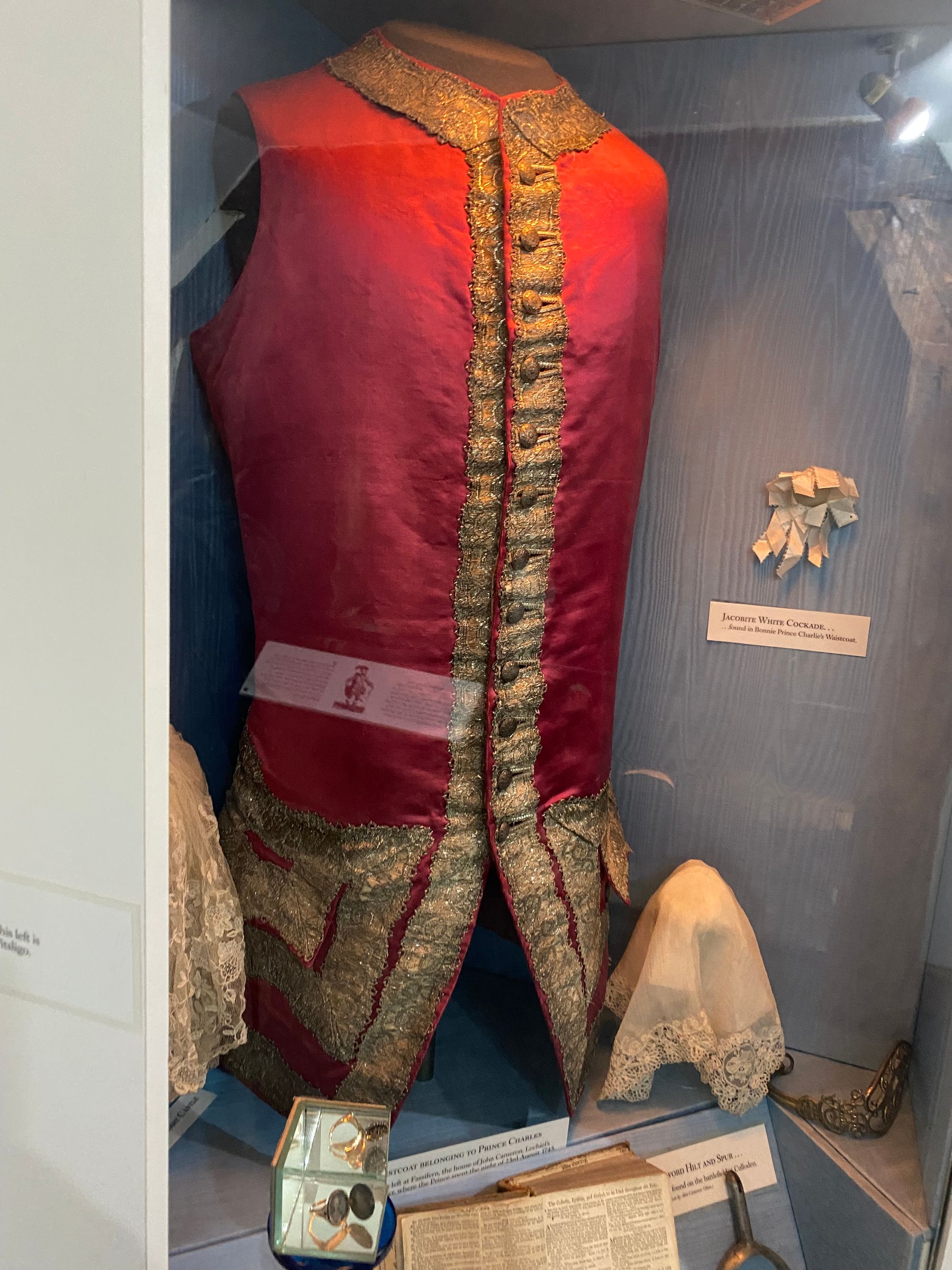
The rain let up and we continued on.
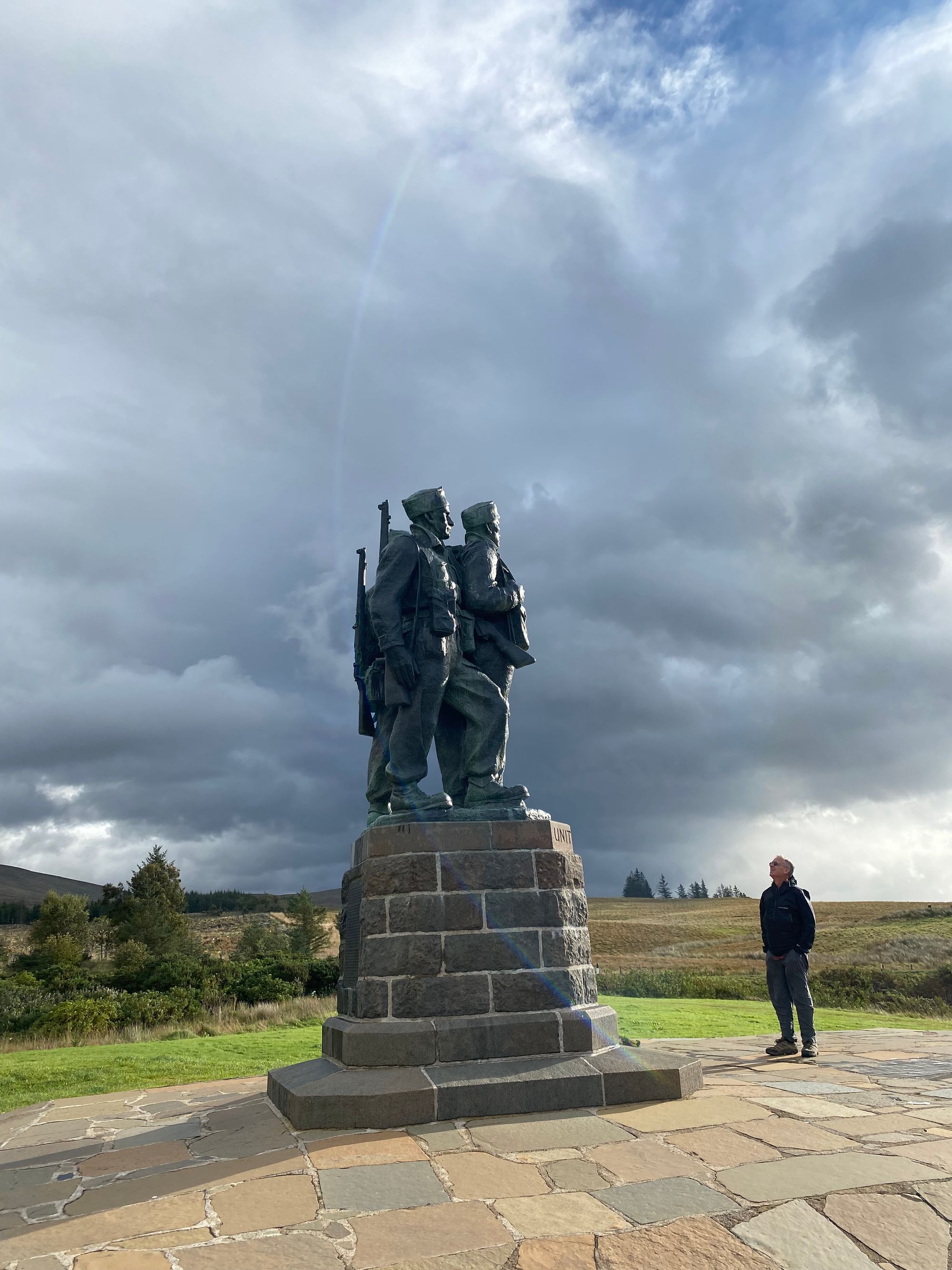
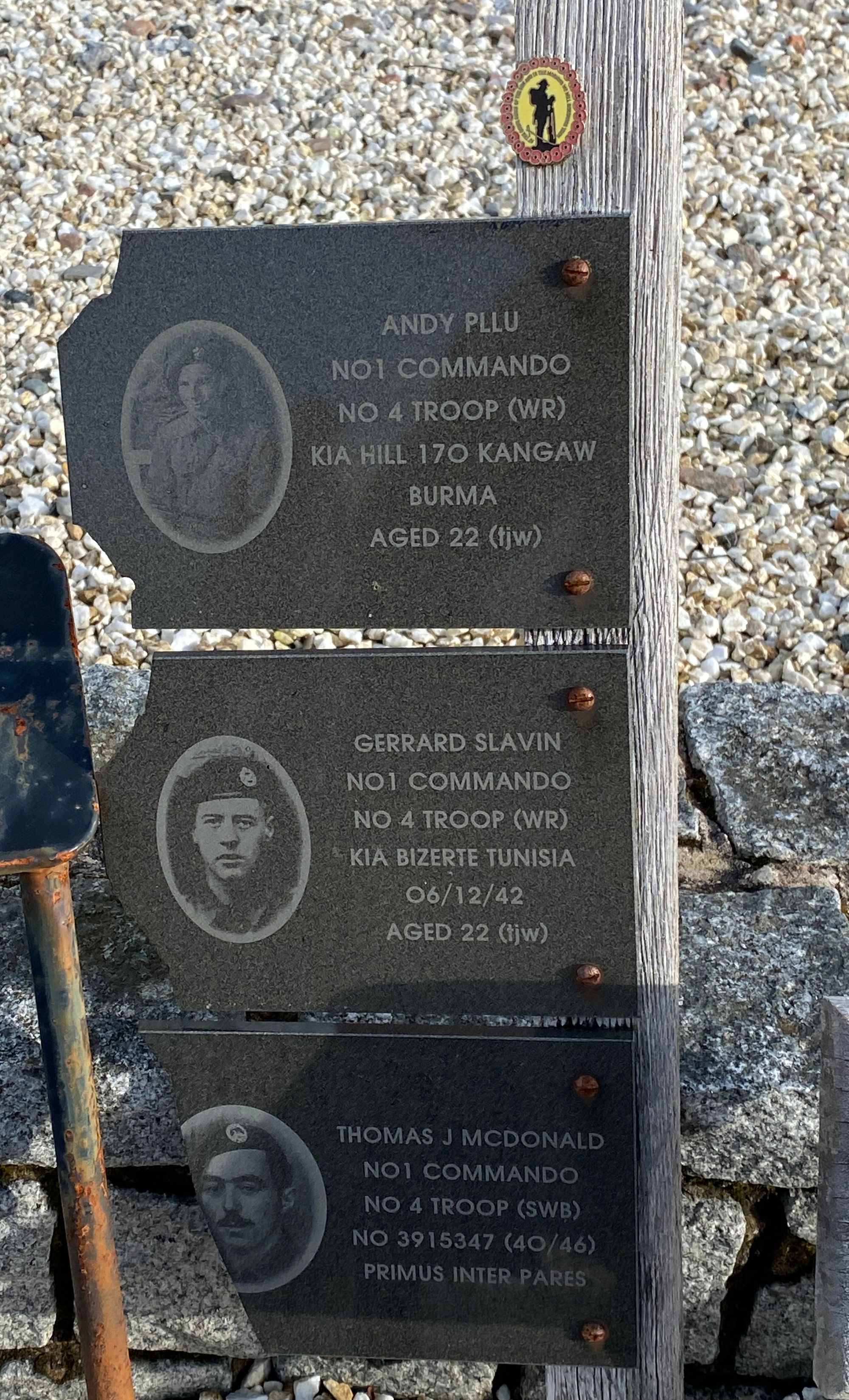
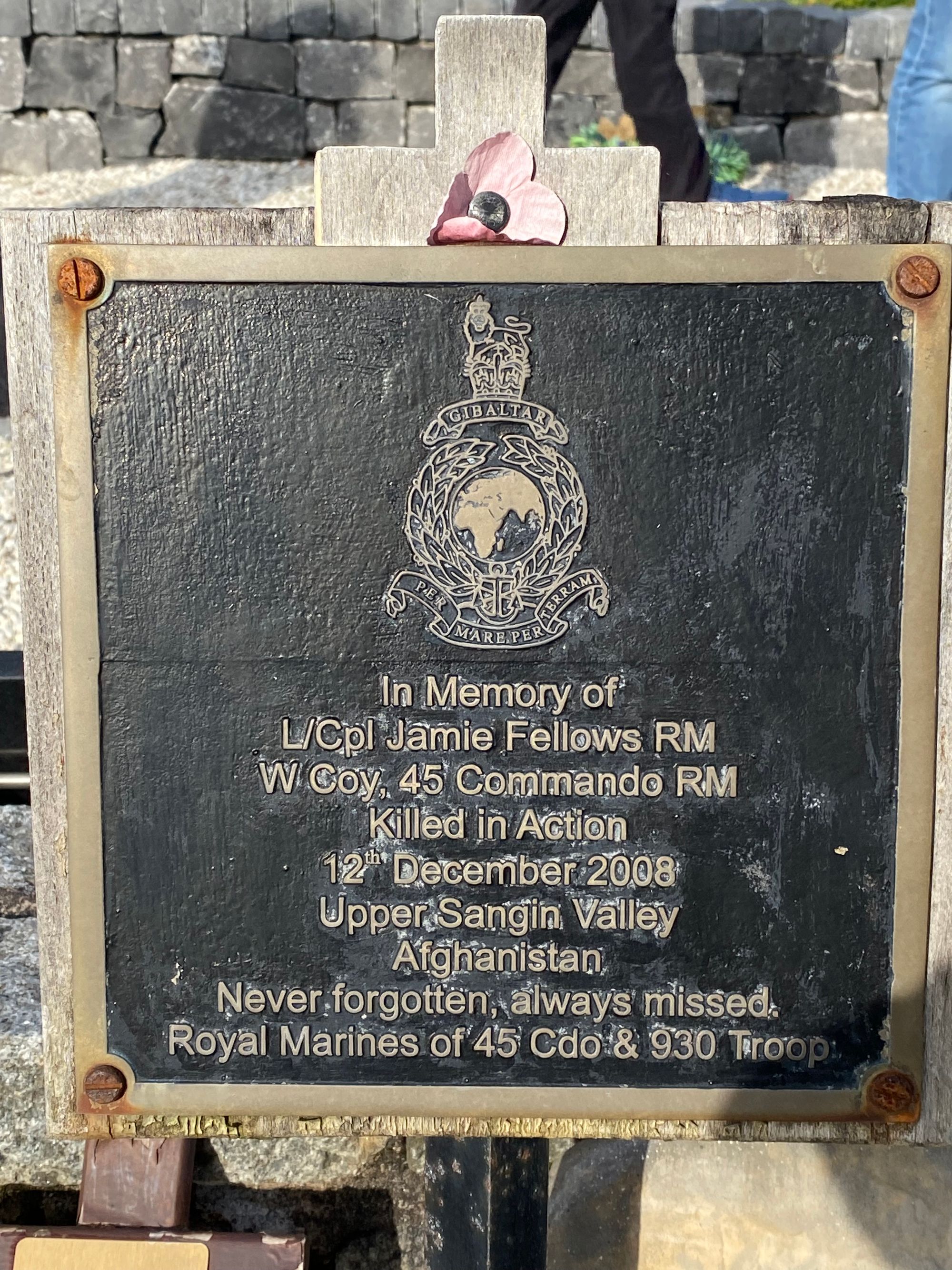
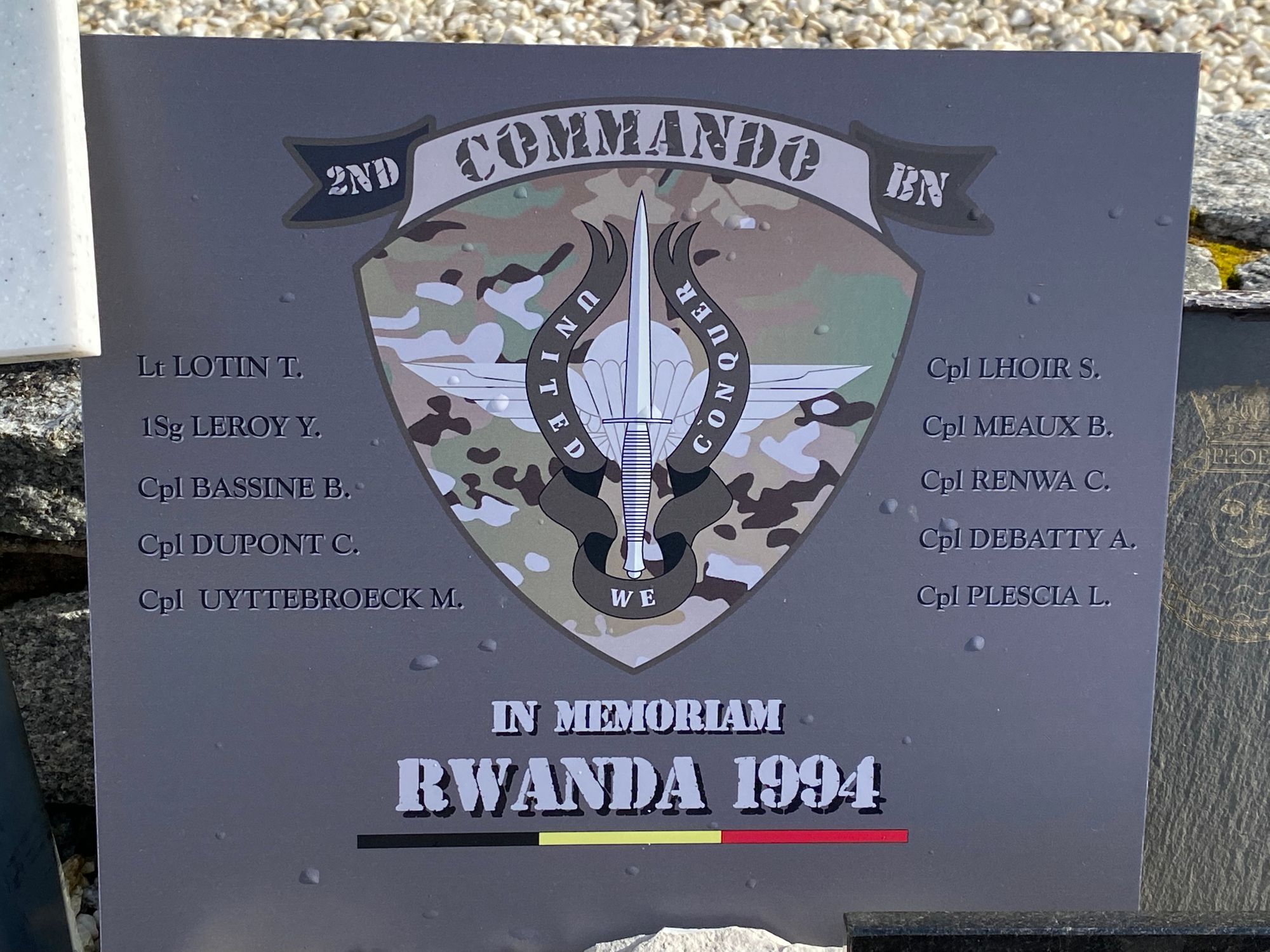
Back again on the road with Al behind the wheel, a nasty storm blew in with blinding sheets of rain making driving along the narrow road adjacent to Loch Linnhe hazardous and dangerous. With rain pooling along the edges of the road and the threat of hydroplaning, we along with most of the vehicles pulled over to wait for a break in the downpour.
Once we turned east and proceeded in the dramatic valley of Glencoe, the mountains shielded us somewhat the rains lessened up a bit.
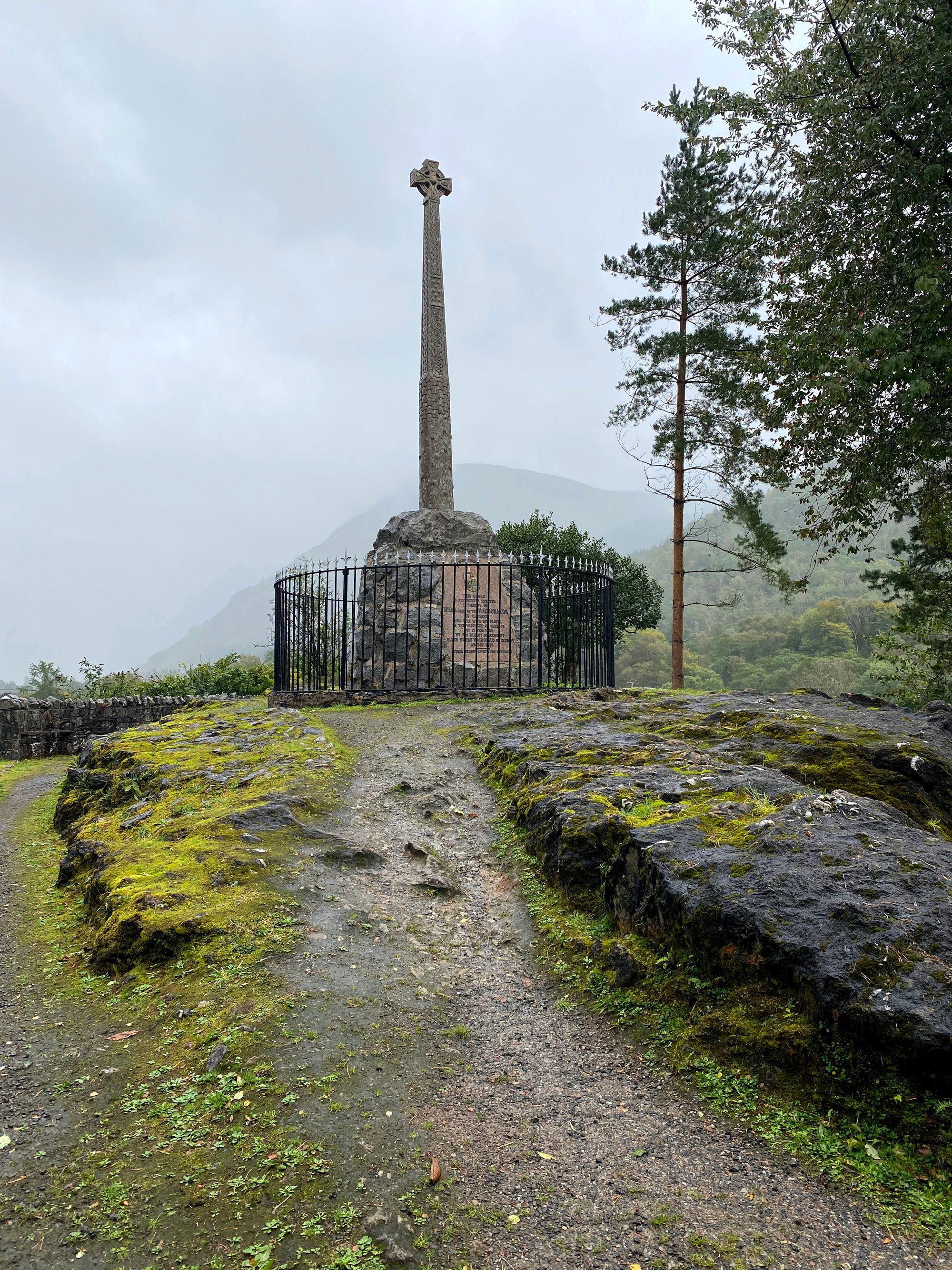
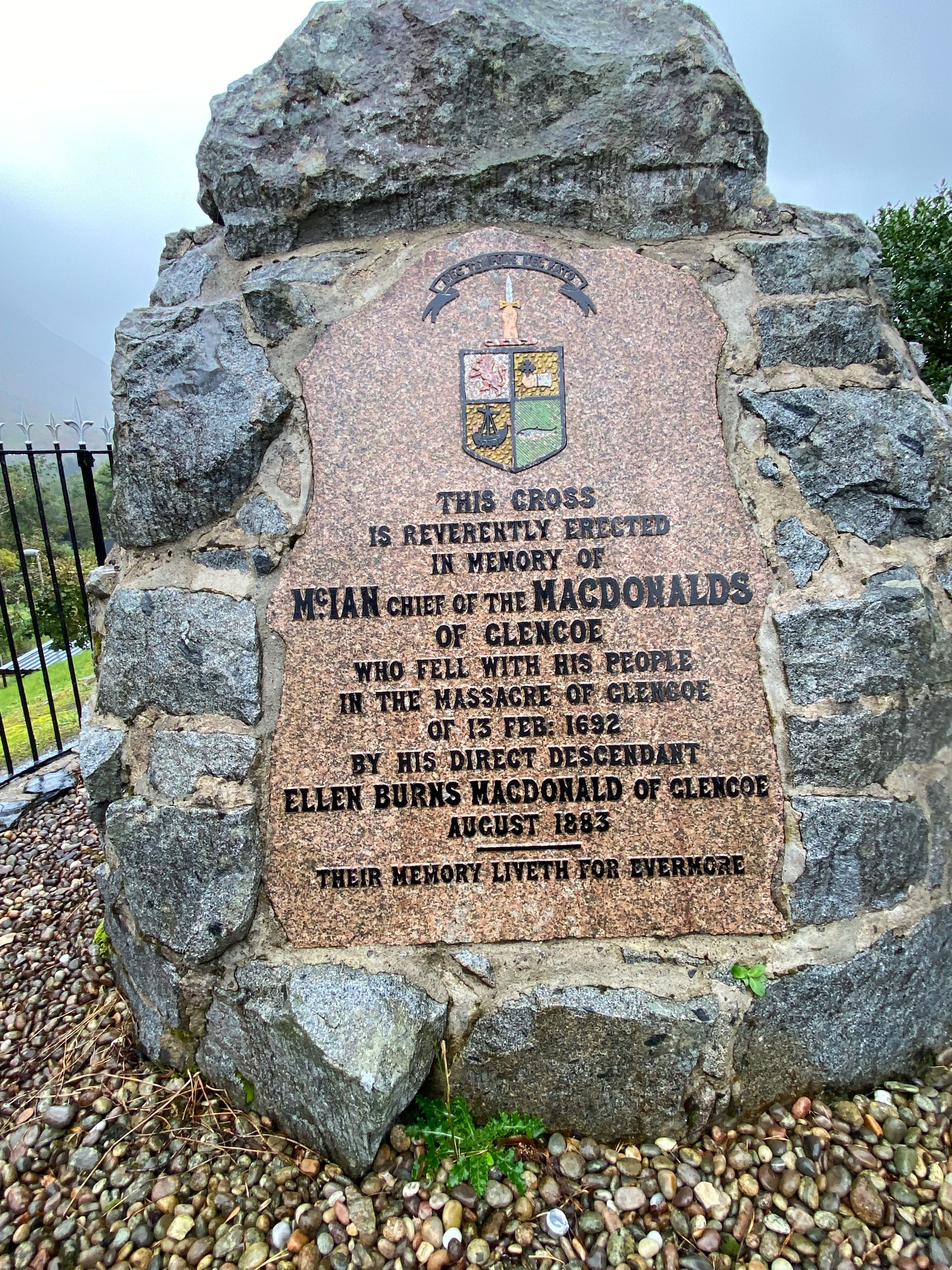
We had some traveling to go and with the intense driving we had just gone through, we only made a few more stops in the extremely scenic Glencoe region.



The weather cleared dramatically the further east we proceeded with the highlands acting as a barrier to the storm system. We made one more stop when a stable internet signal was available in order to make hotel reservation in Sterling. It was a nice picnic area with a stream and we decided to explore a bit. Some 100 meters or so into the woods we came across to memorial sites.
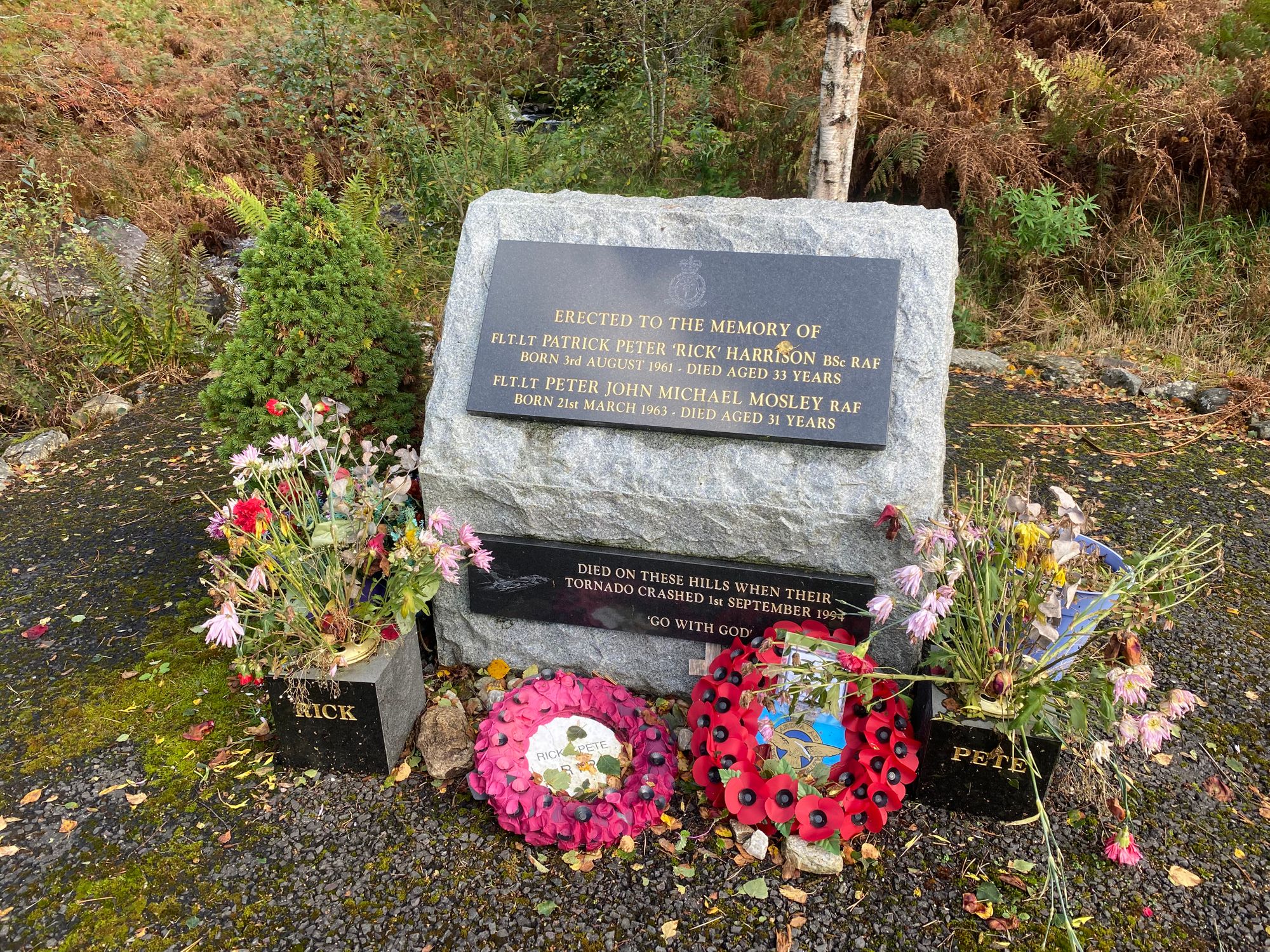
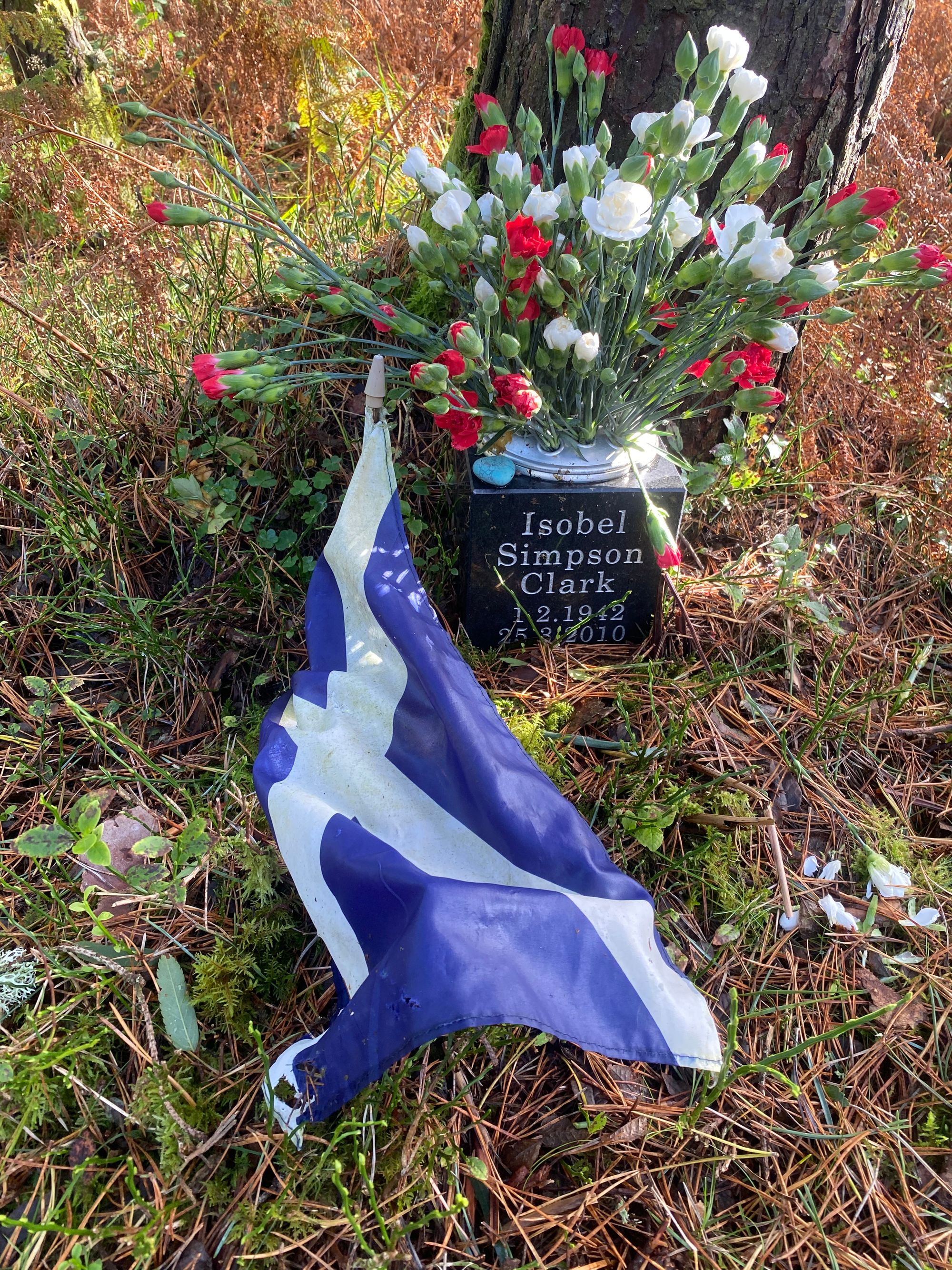
After a quick stop at the Bannockburn Battlefield site where I wanted to see about a tartan cap and Al, a Robert the Bruce pin, we arrived at sunset at the hotel. A long, tough day of driving. Super dramatic landscape, scenery and weather. I can see why the Scottish Highlands are a popular destination if you are willing to negotiate narrow, winding roads .... and the occasional deluge ..
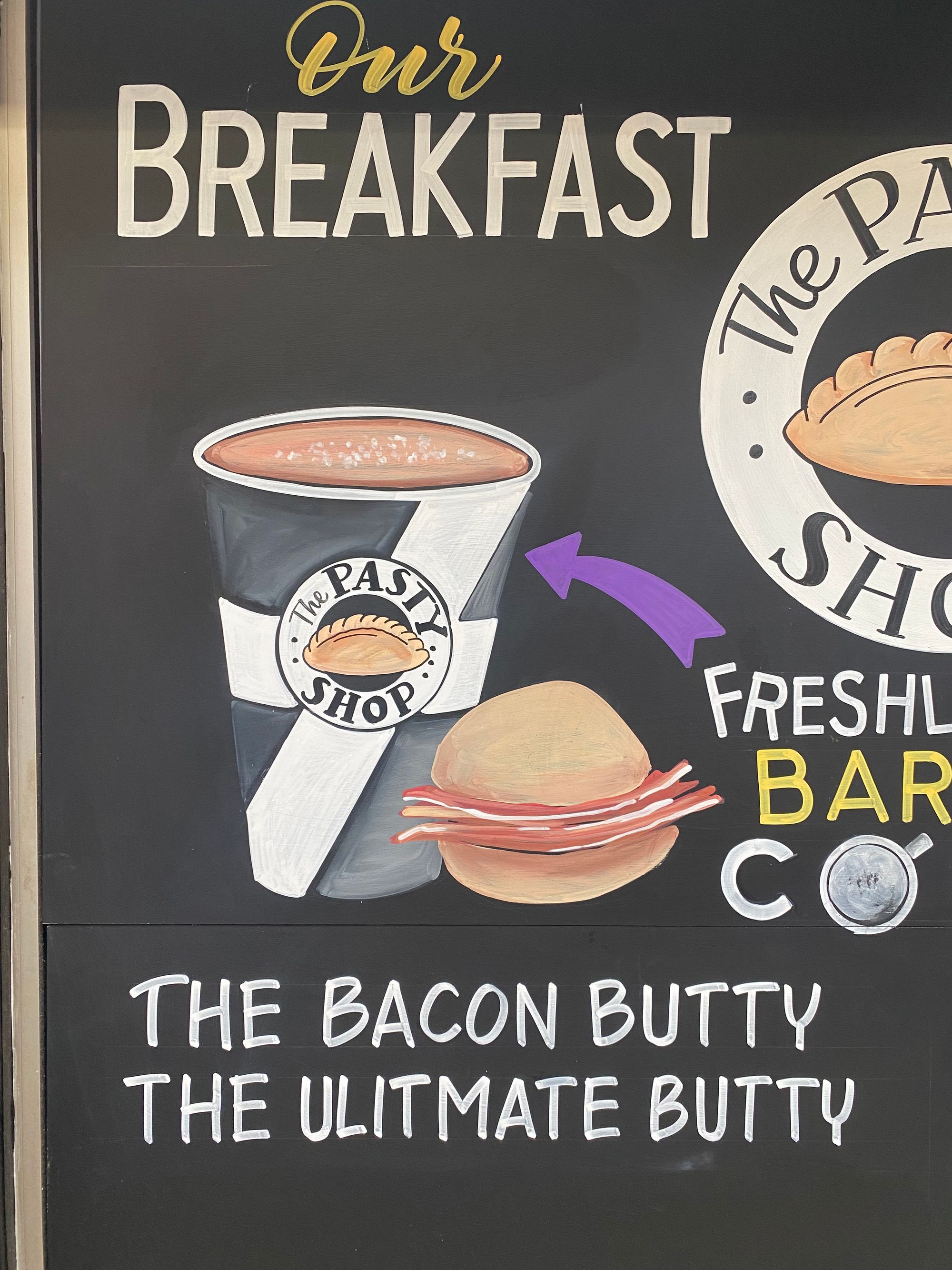
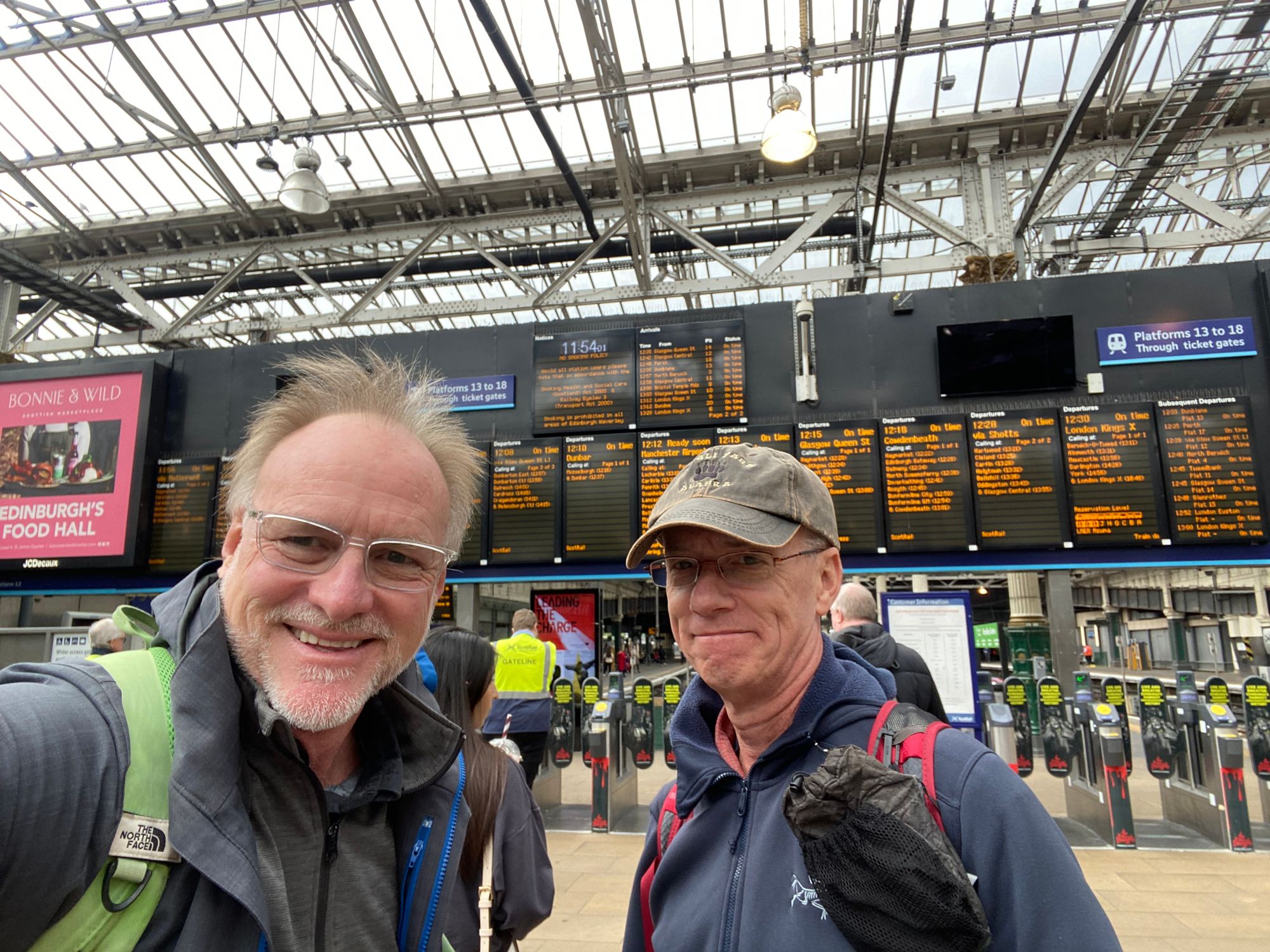
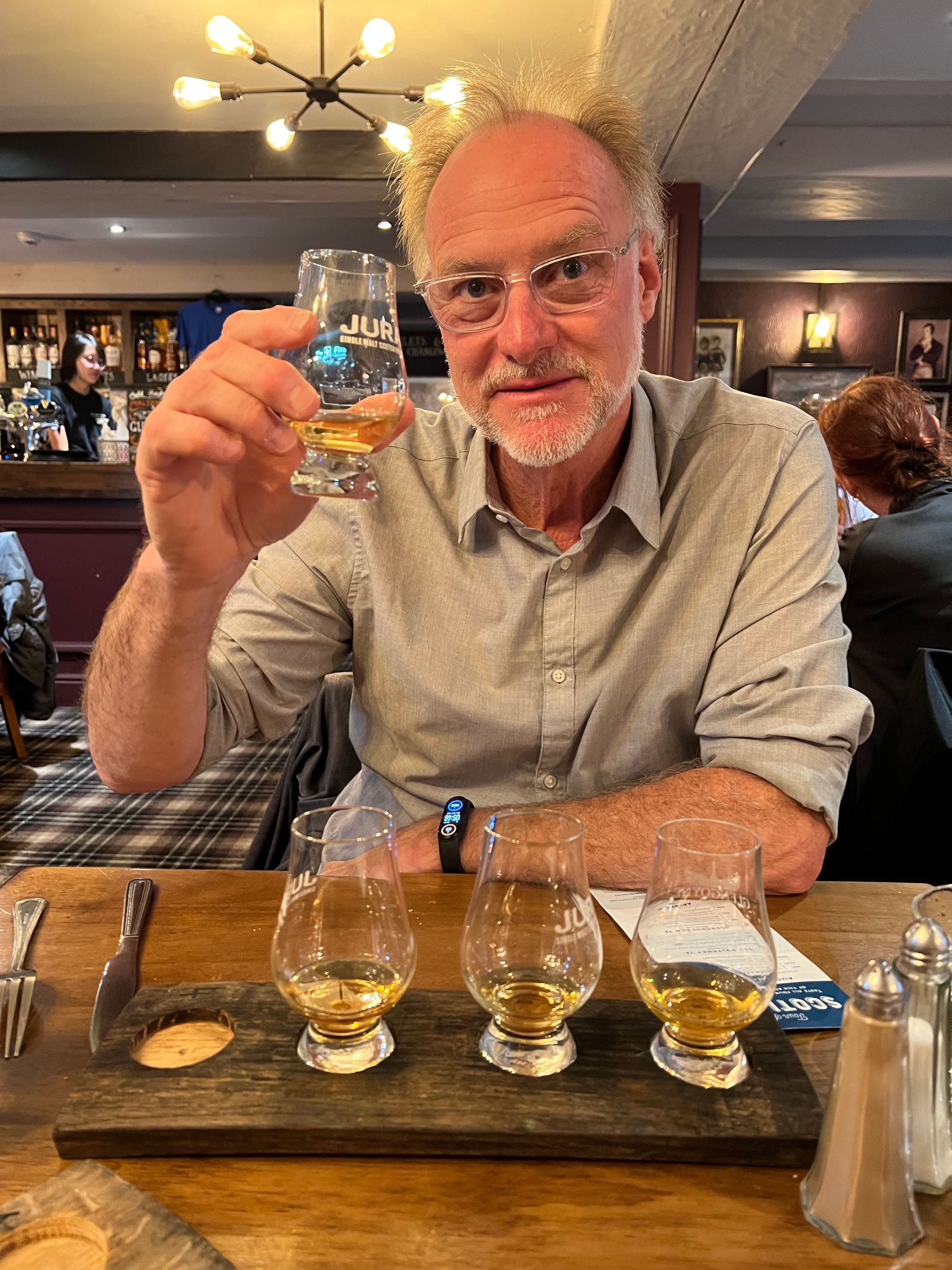
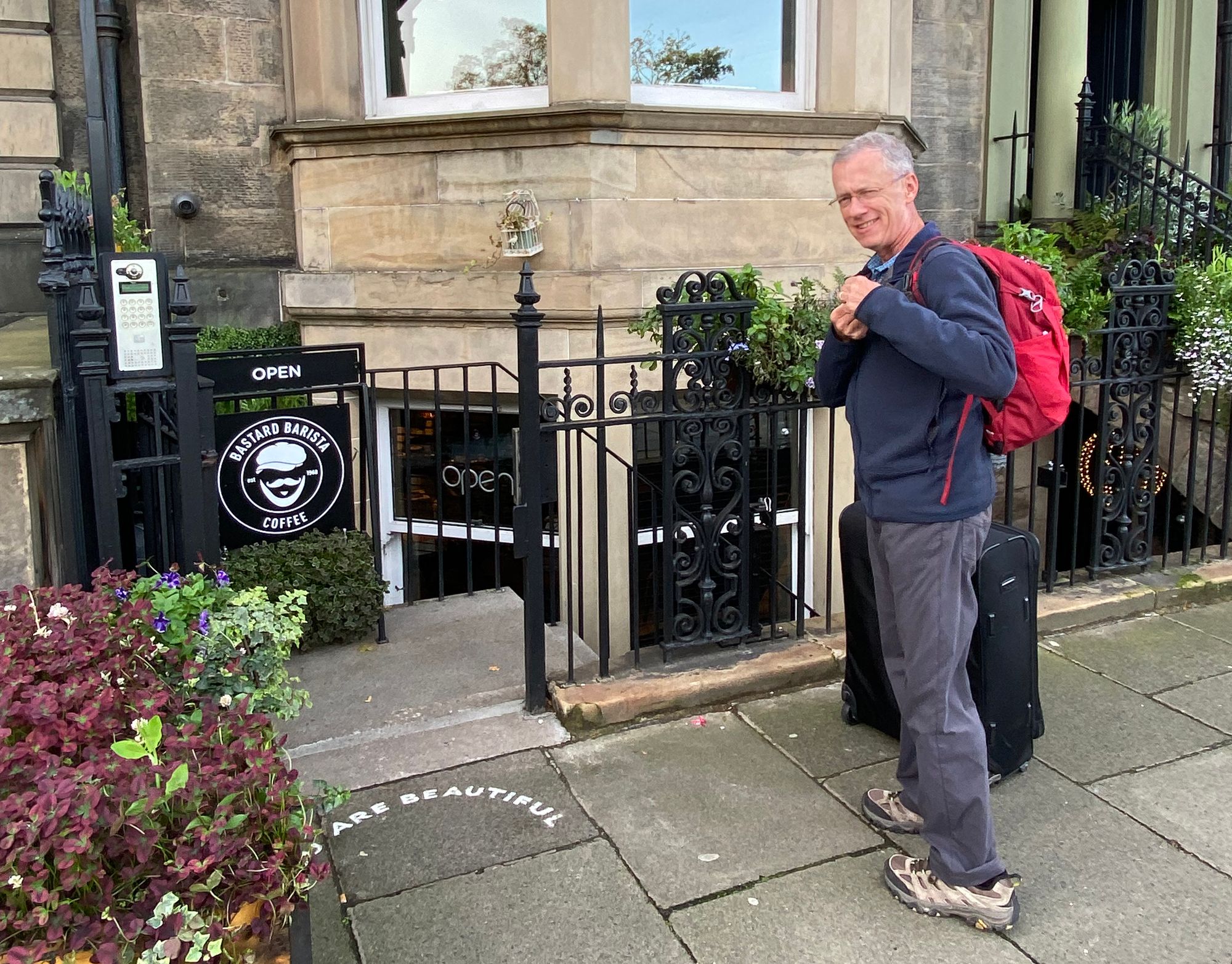
We would leave the next day by train from Edinburgh to Carlisle where we would start the Hadrian's Wall walk. In 10 days both of us would return to Edinburgh. Al needed to leave to Washington DC for a marathon, but I stayed a day to check out Edinburgh.
Here are some of my impressions of the city.
Edinburgh | October 6
After accompanying Al to the airport tram station, I strolled through the city and eventually ended up at Edinburgh Castle where I spent the rest of the day.
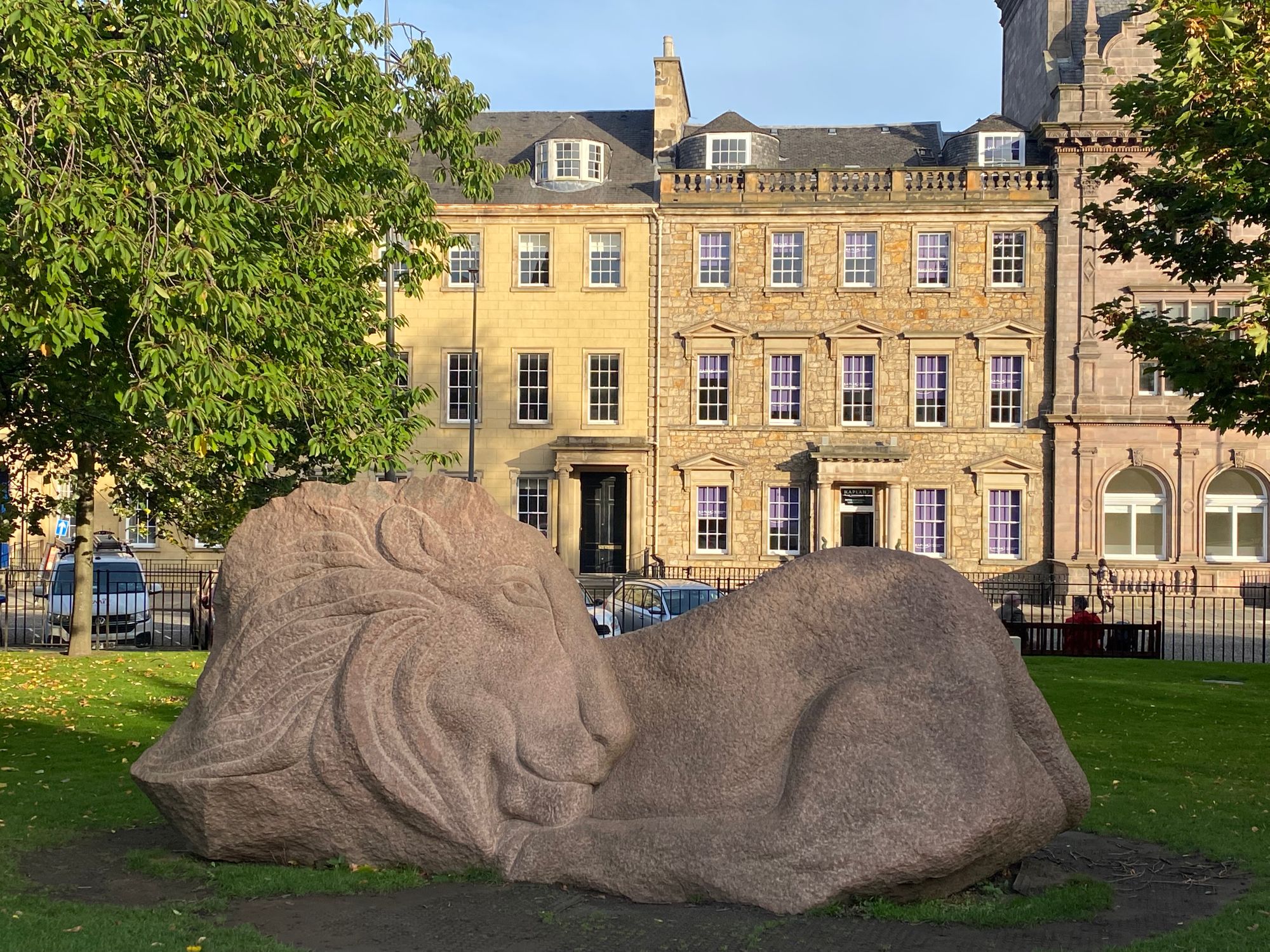
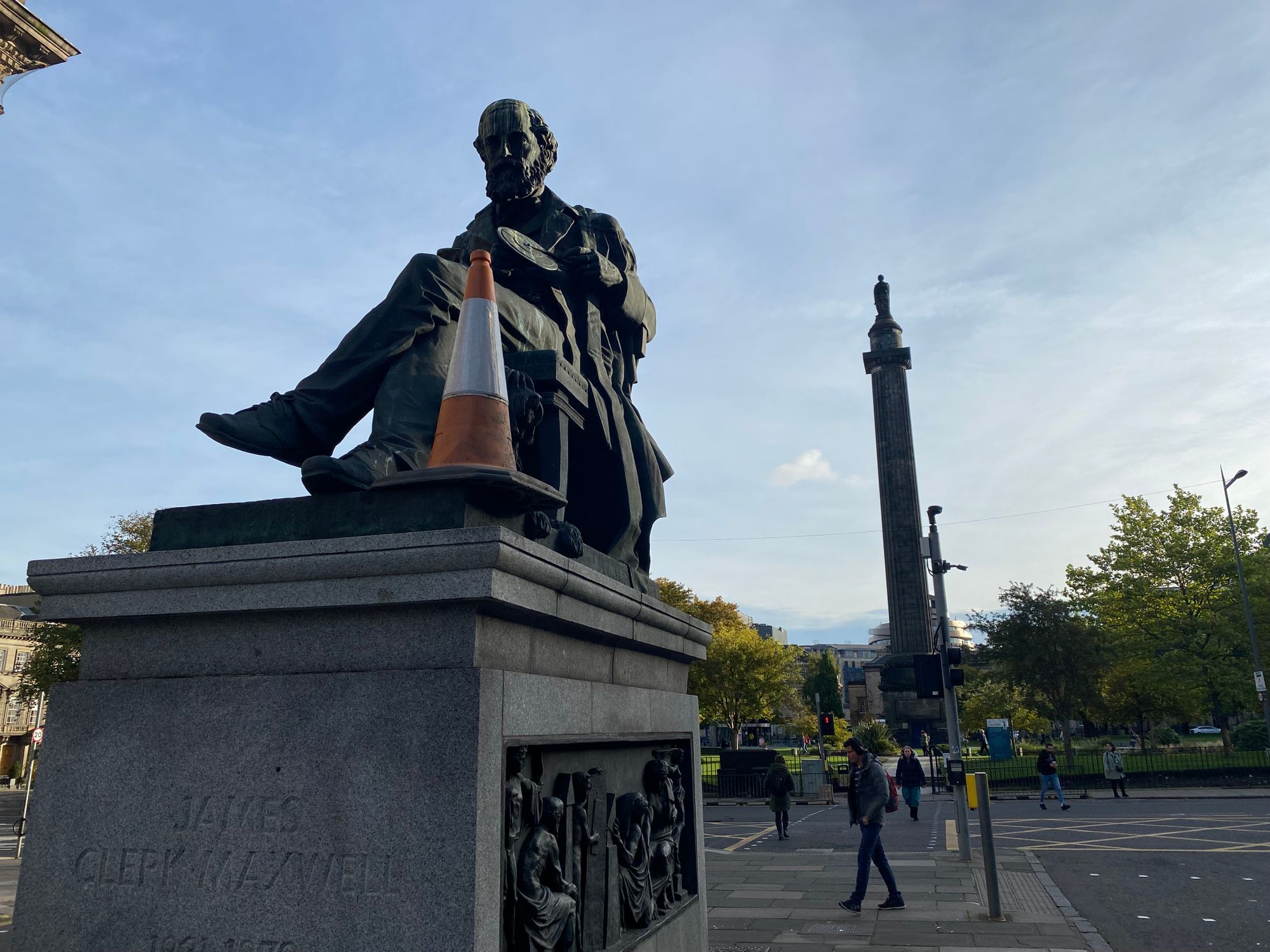
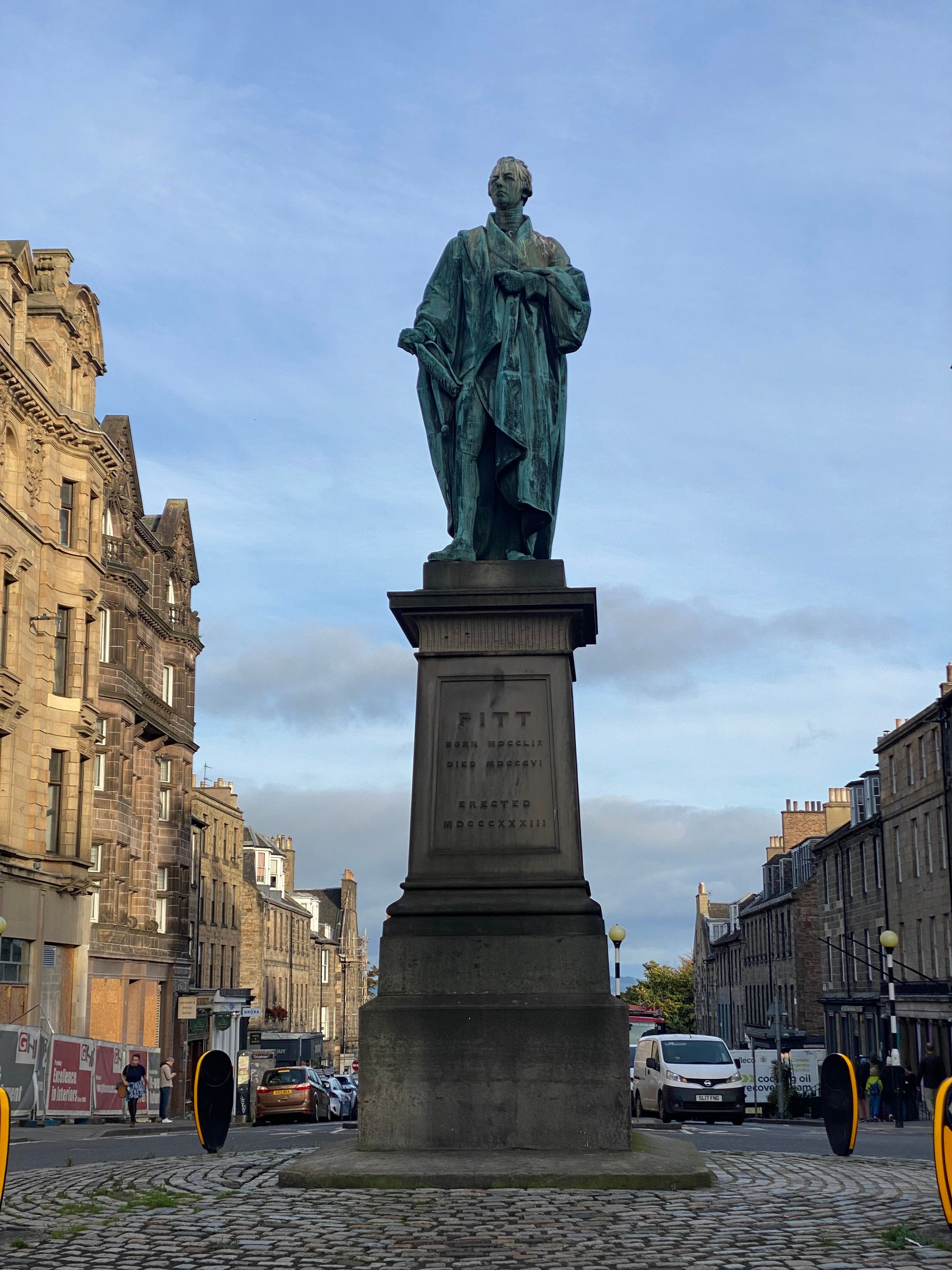
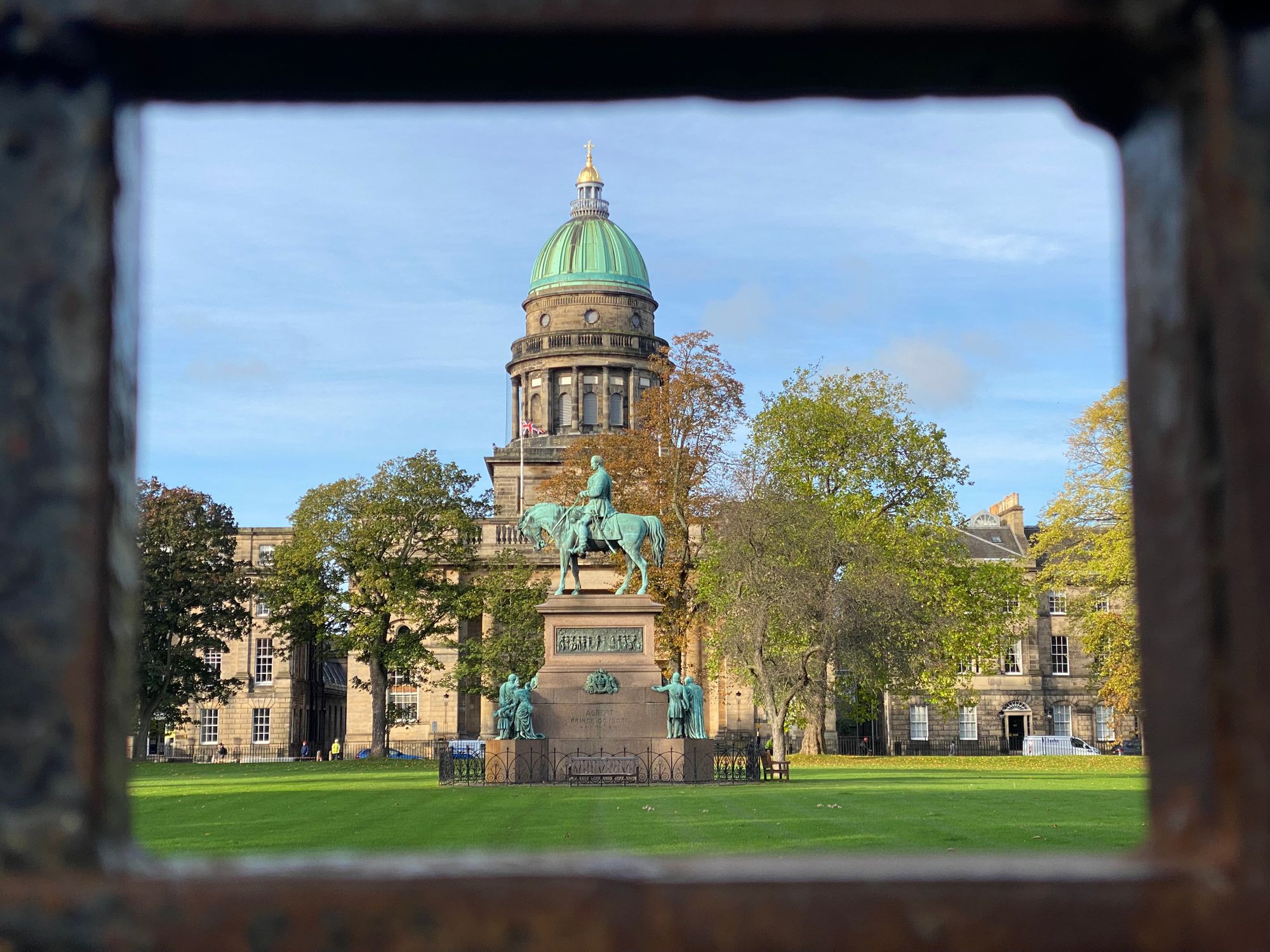

Princess Street Gardens, a large depression between Edinburgh Castle and the main town is a fascinating place with lots of statues, churches, graveyards and monuments.
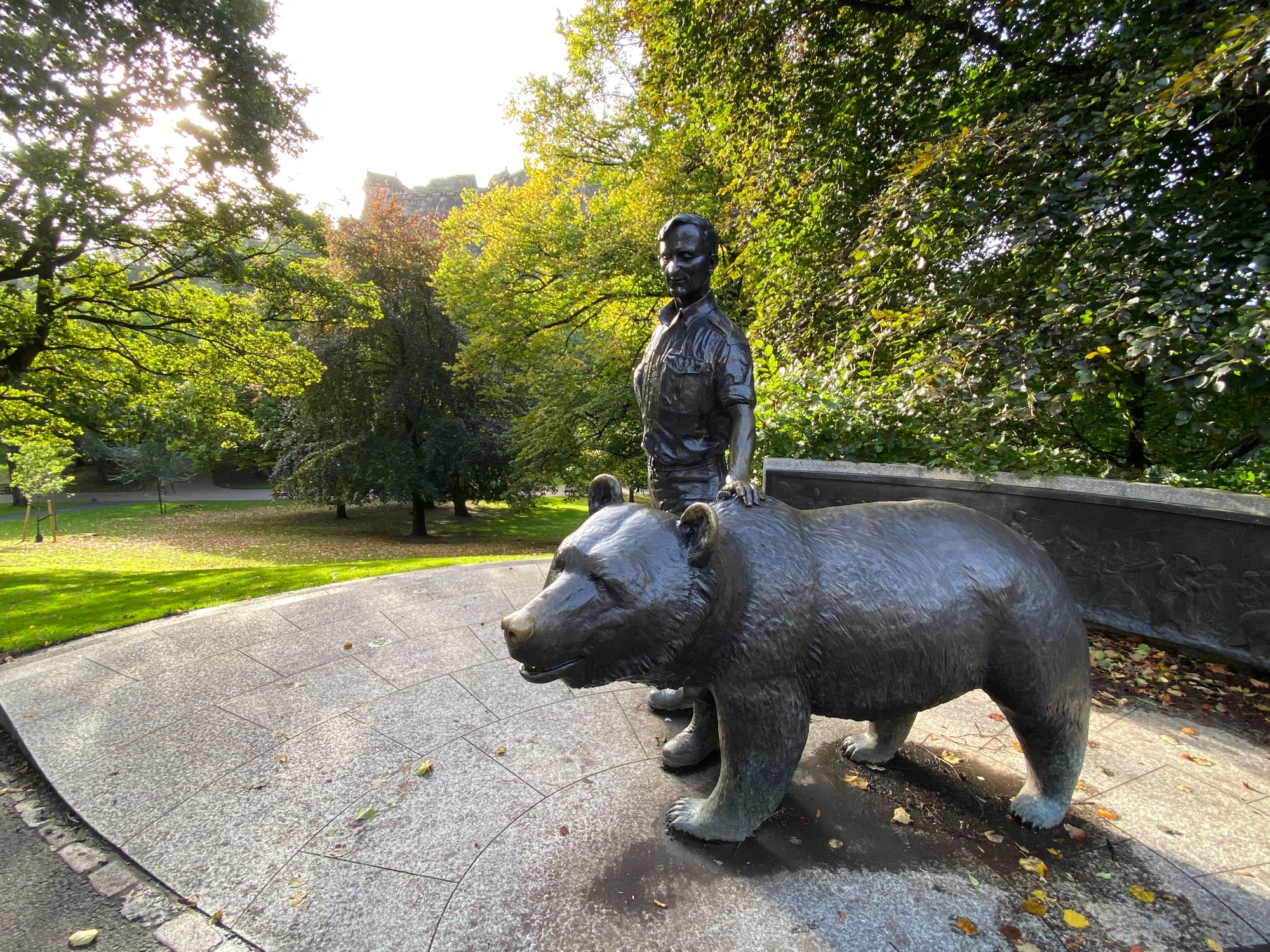
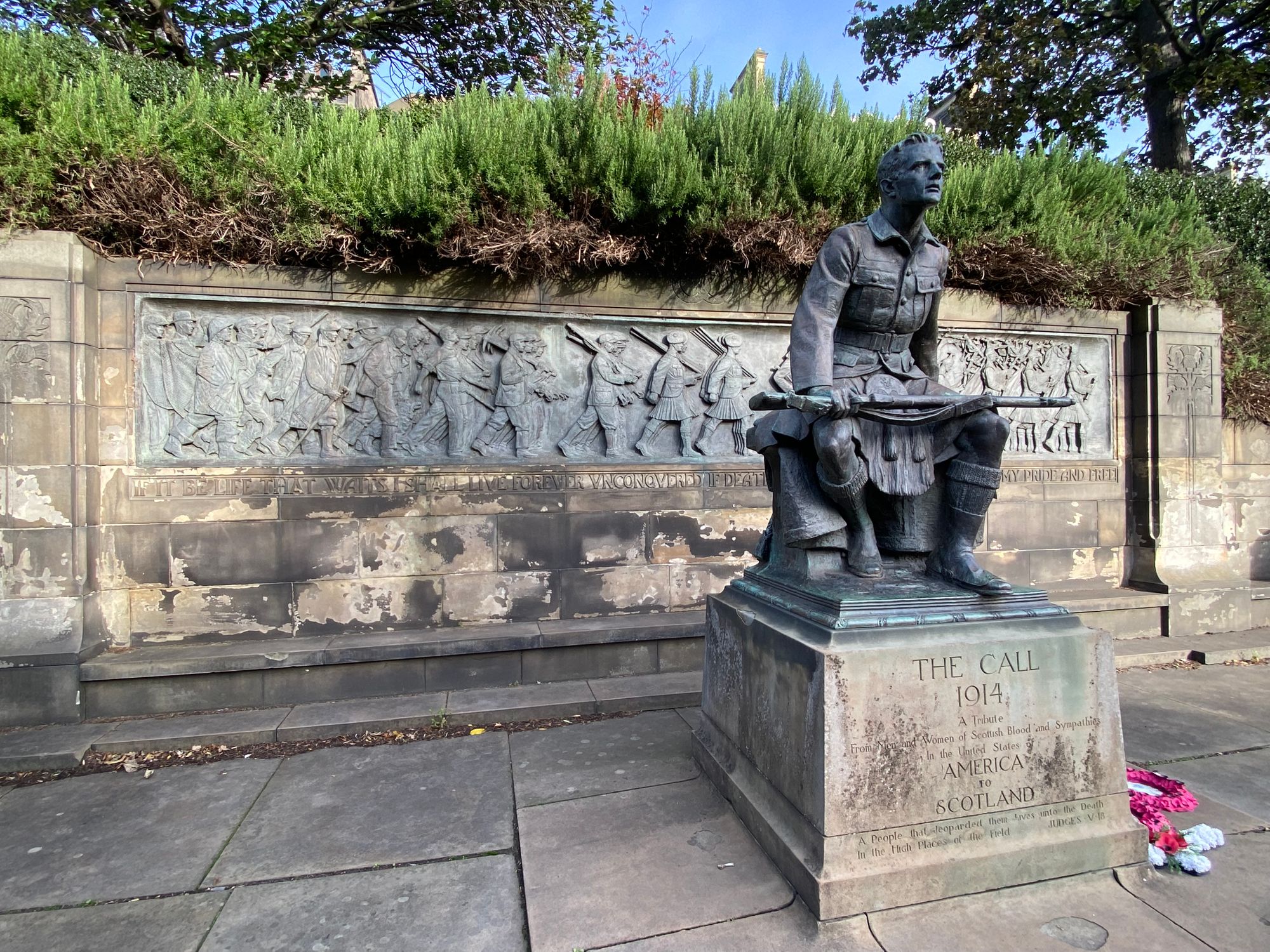
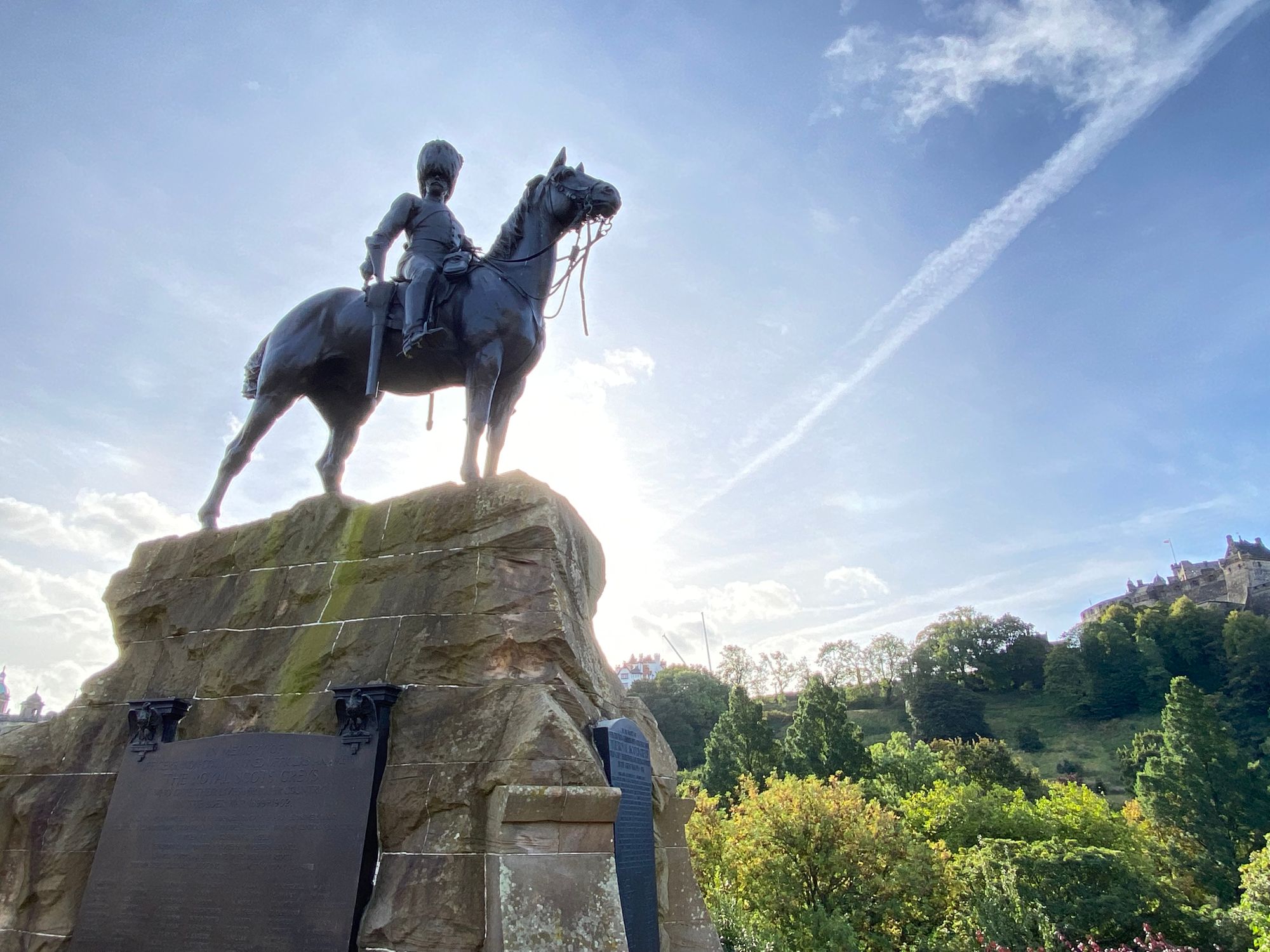
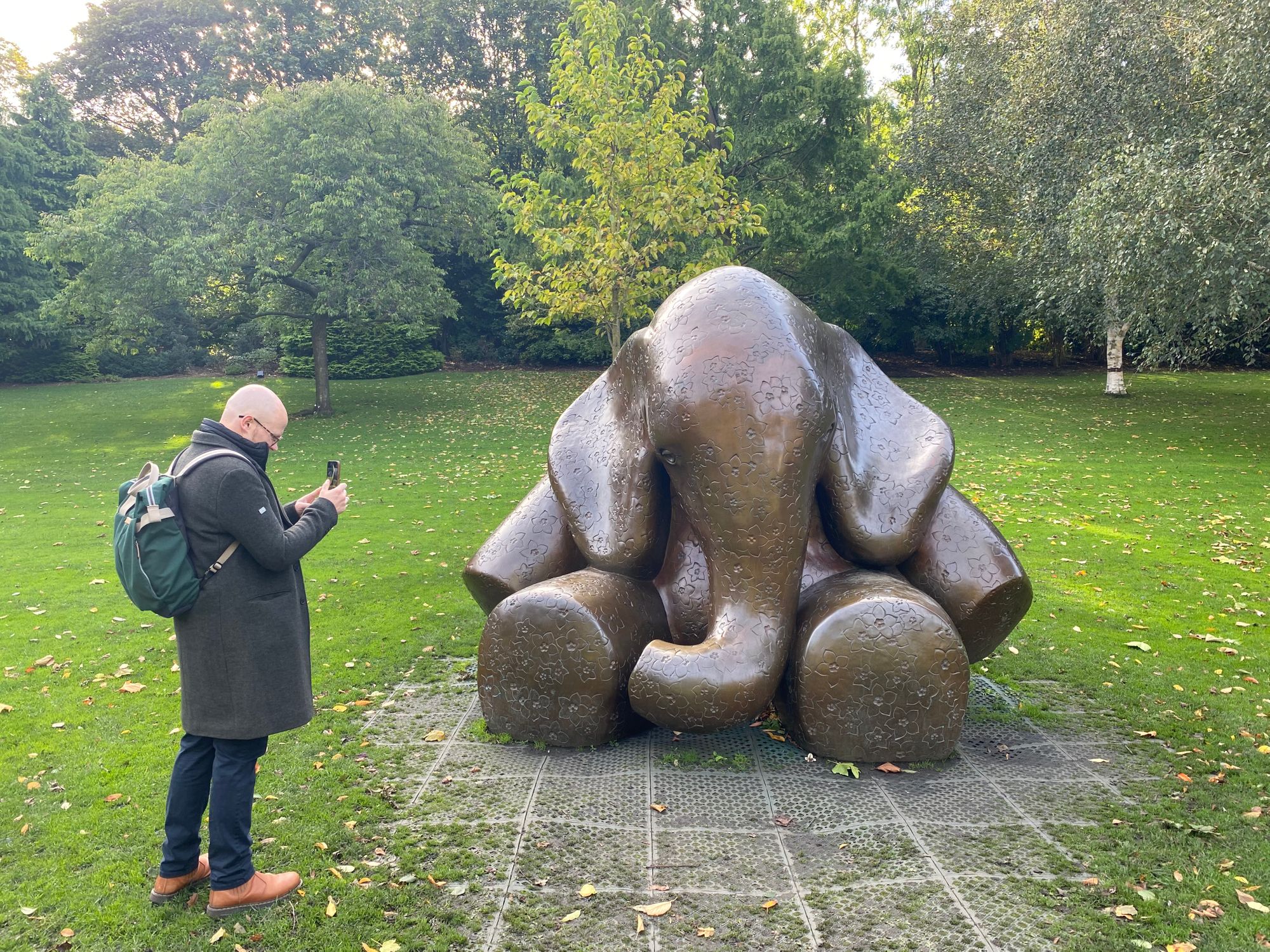
Decided to check out the National Galleries of Scotland. It was free and was wondering if they had art from Scotland's long struggle for independence from the English.
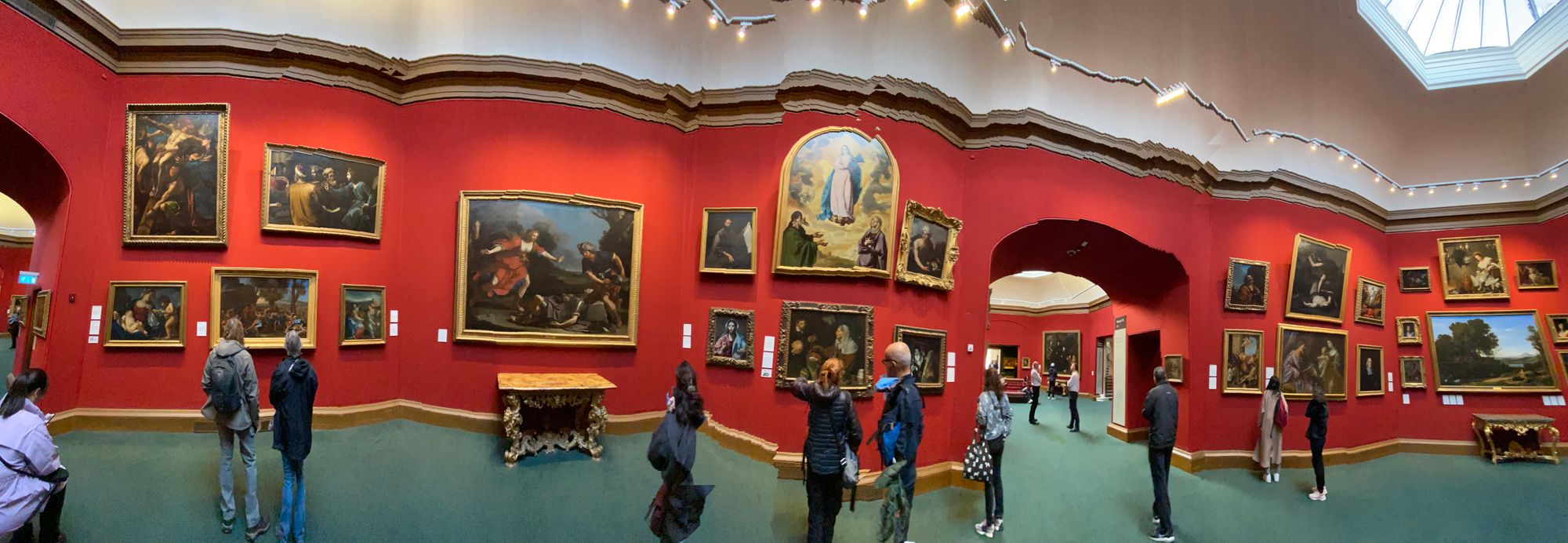
Not very much on the Scottish independence struggle but these caught my attention
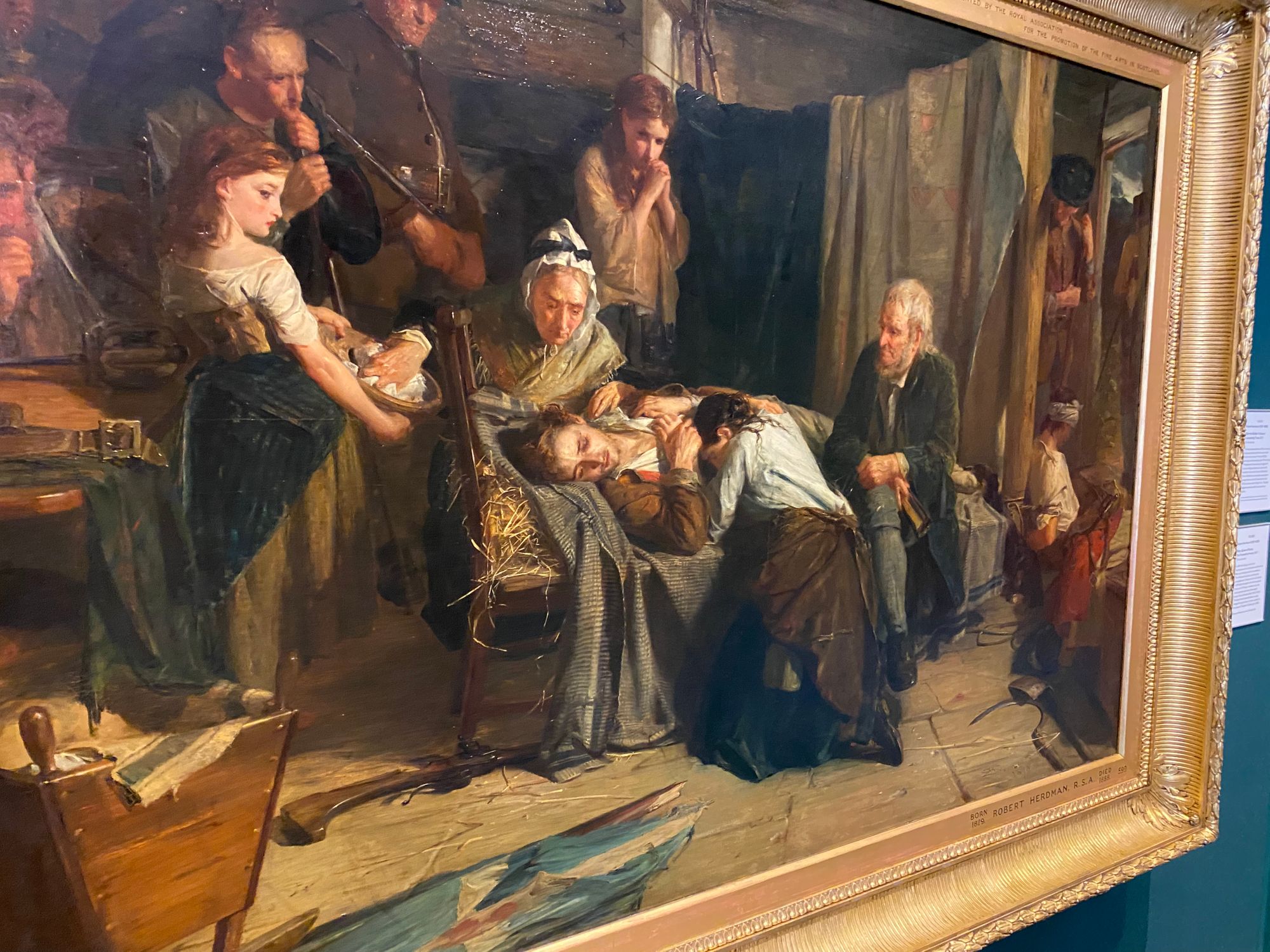

Then onto Edinburgh Castle which is full of museums (three are military), churches, prisons, royal chambers and paintings and the Stone of Destiny and the Honors of Scotland.
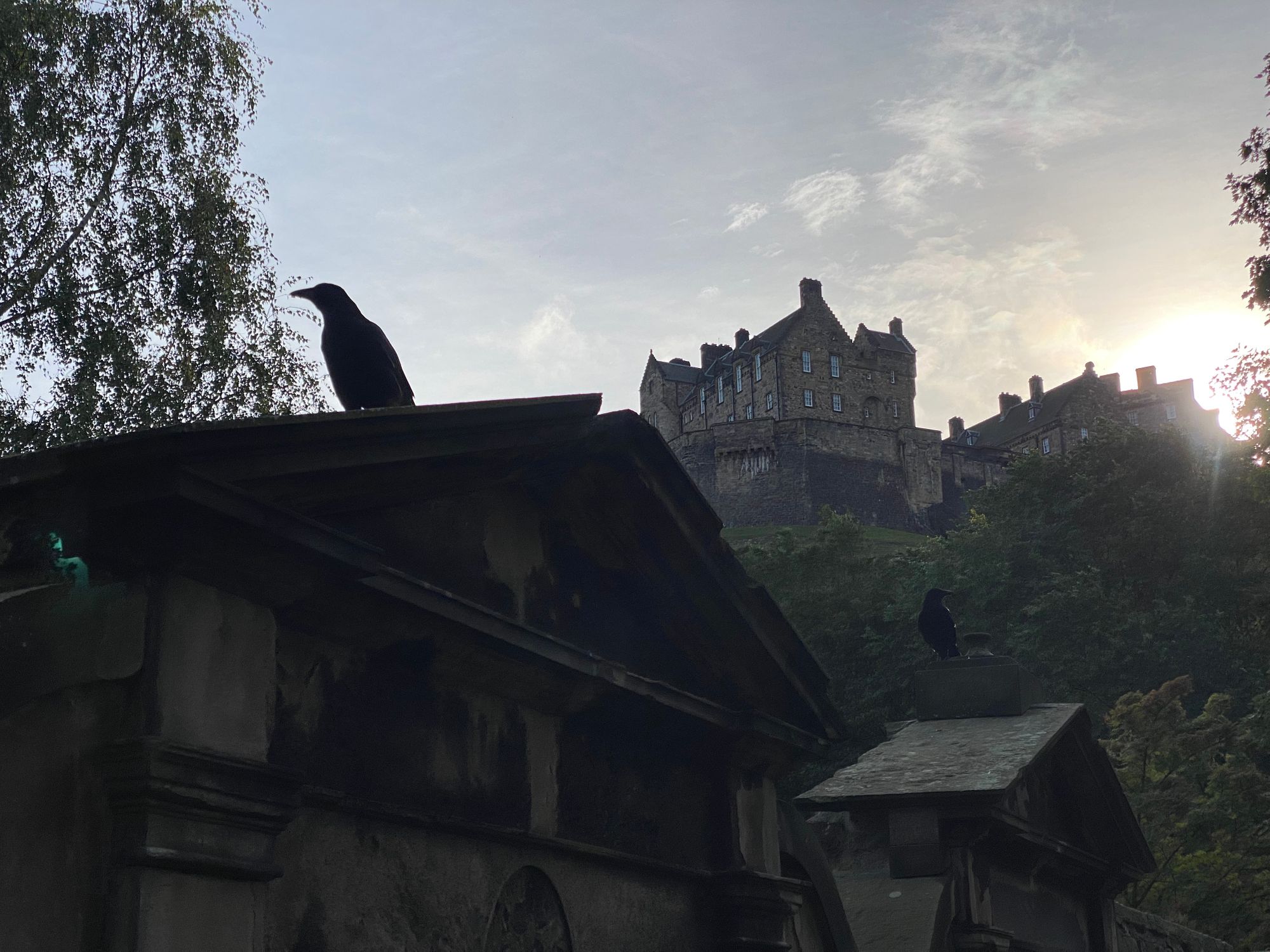
The military museums - National War Museum, Museum of the Royal Regiment of Scotland and The Royal Scots Dragoon Guards Regimental Museum - were a bit overwhelming. Amazing all the places the Scots have fought starting in 1700 - in almost every British Army campaign
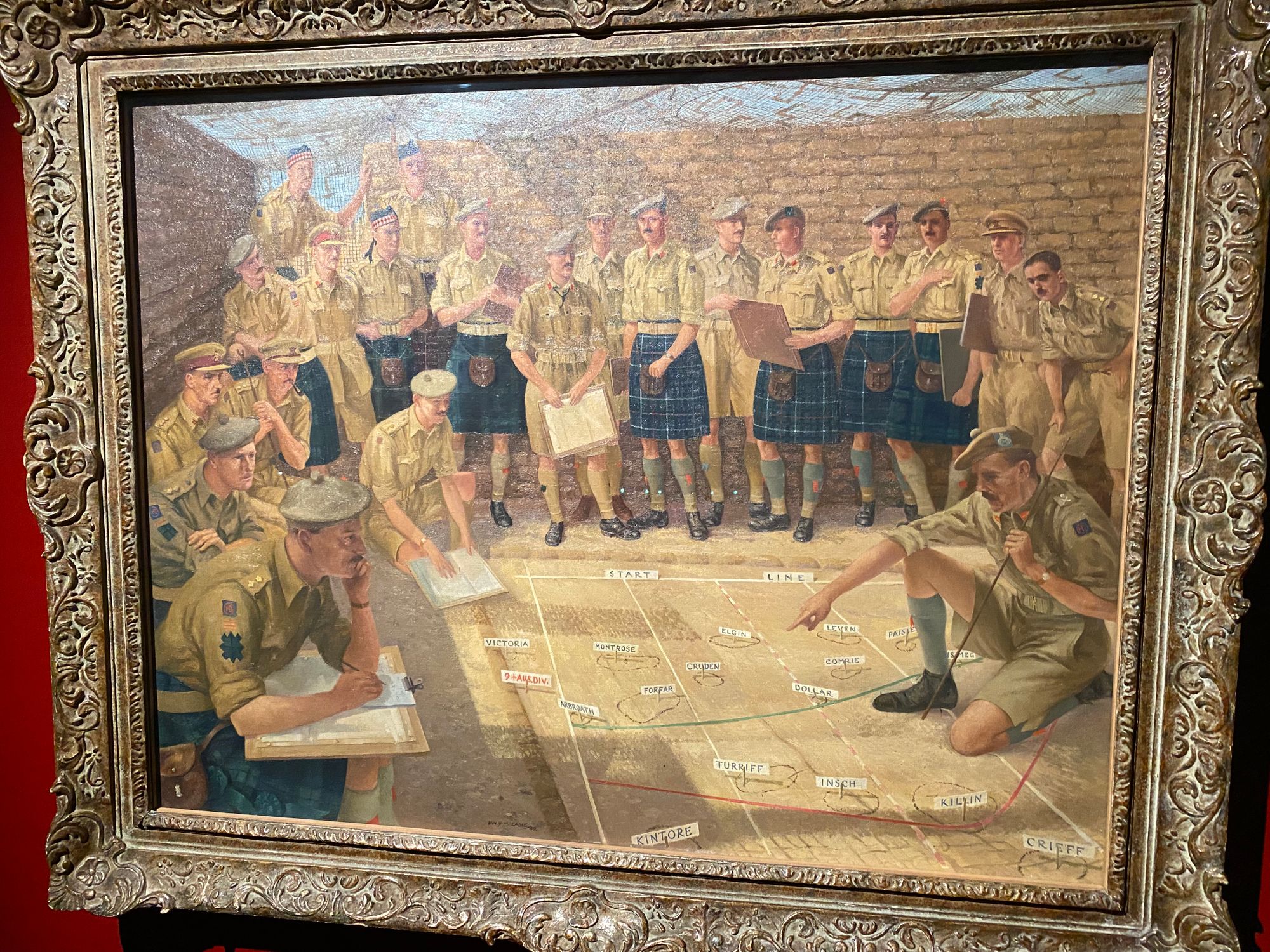
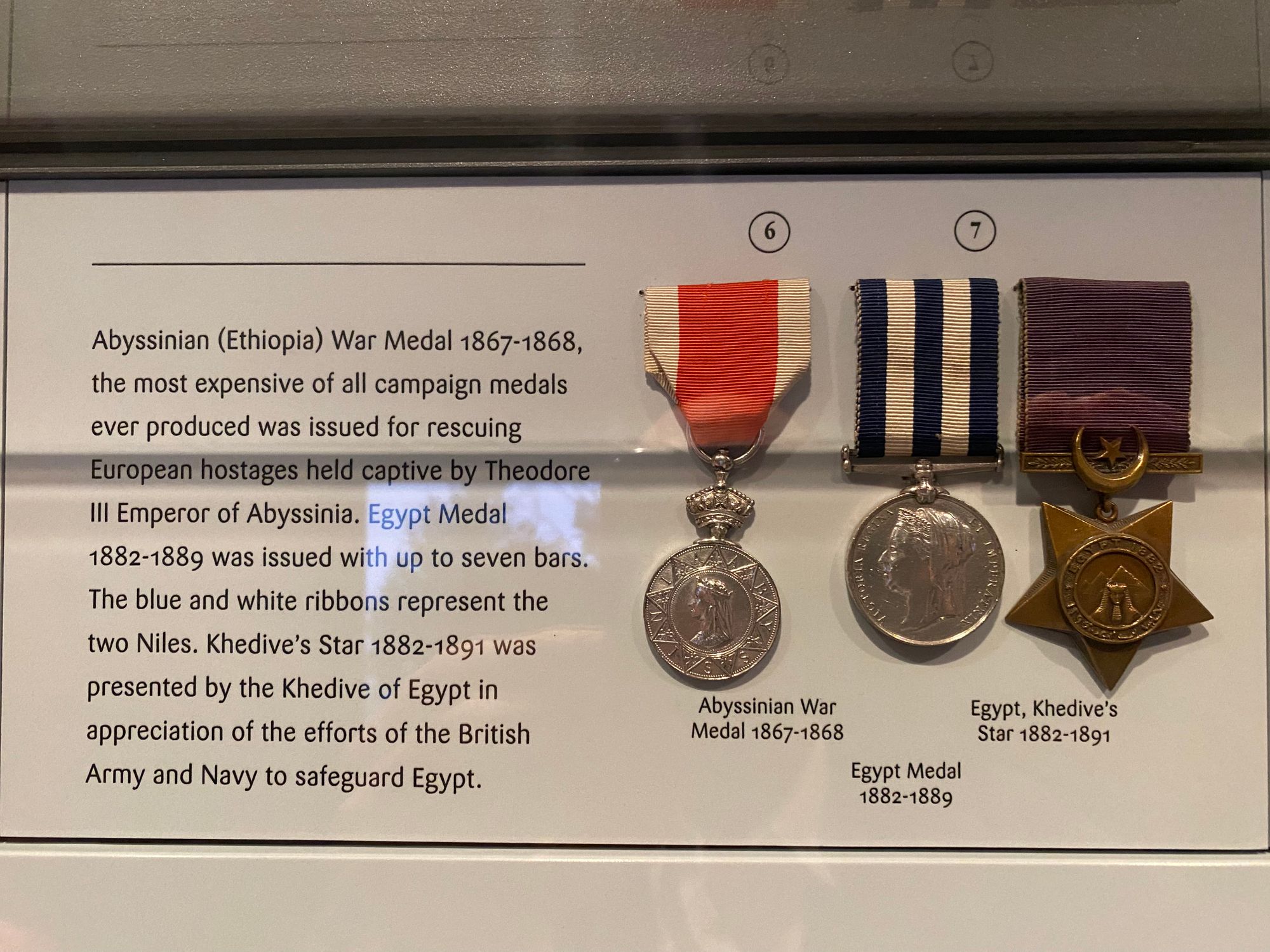

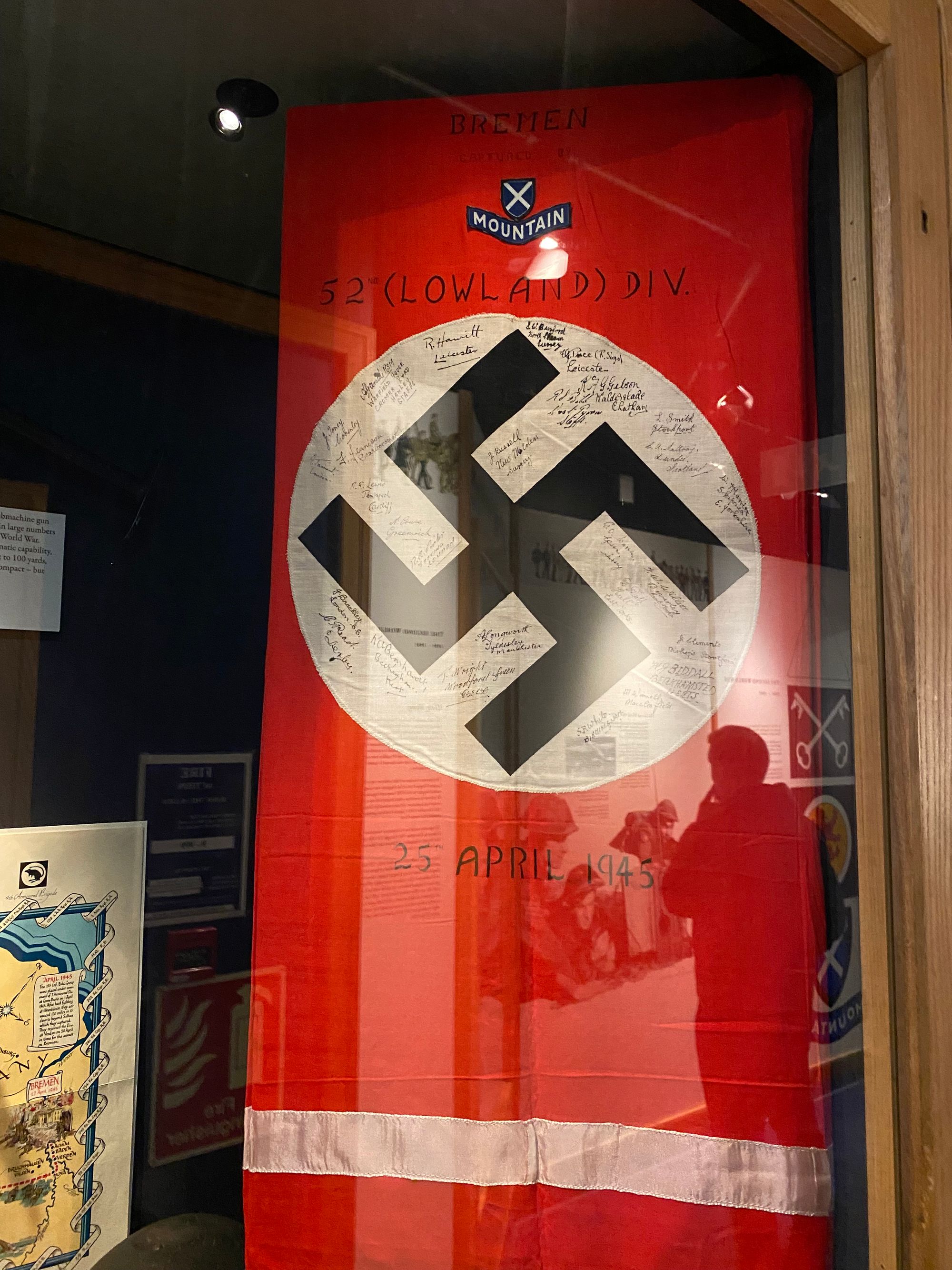
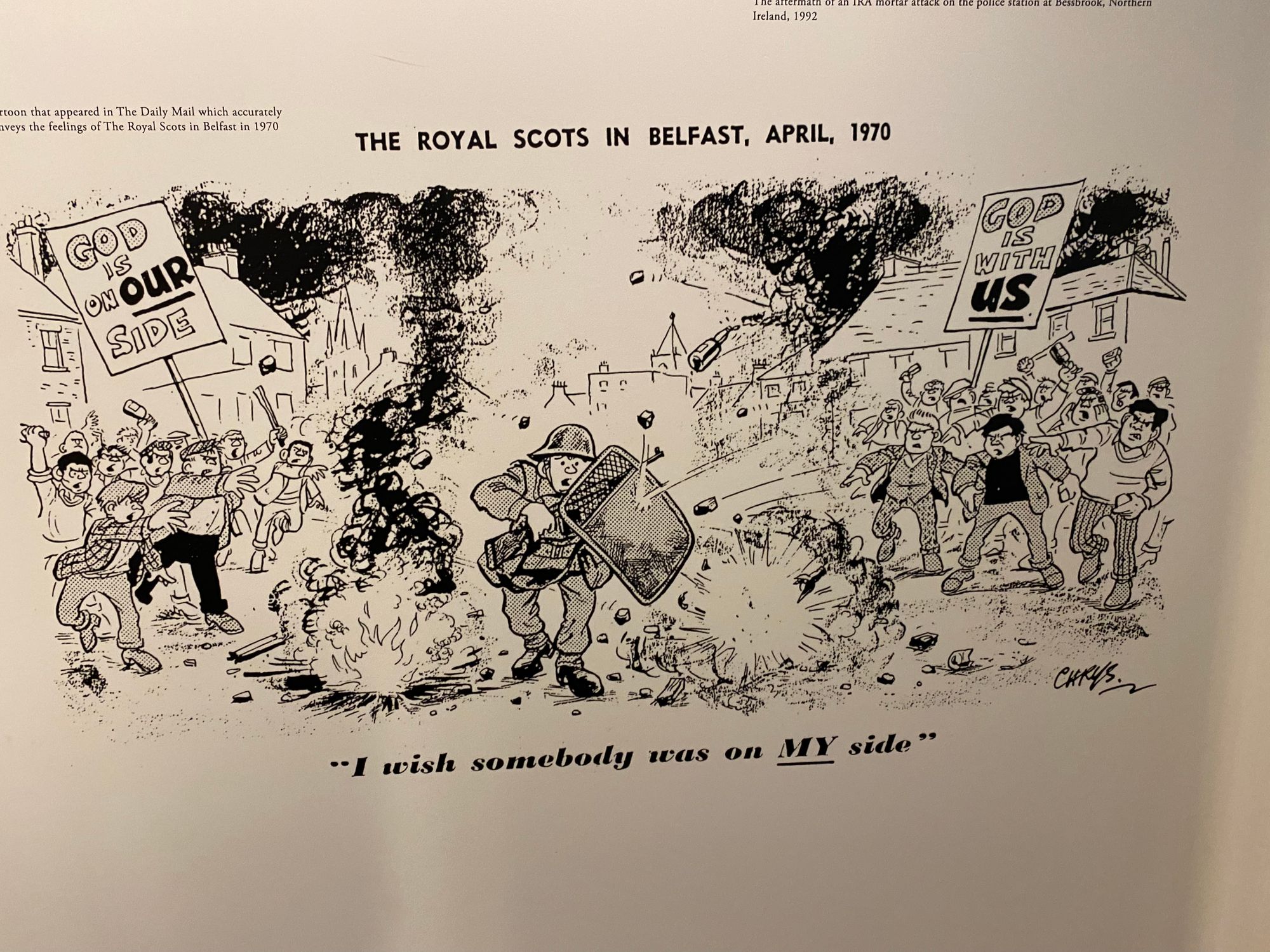
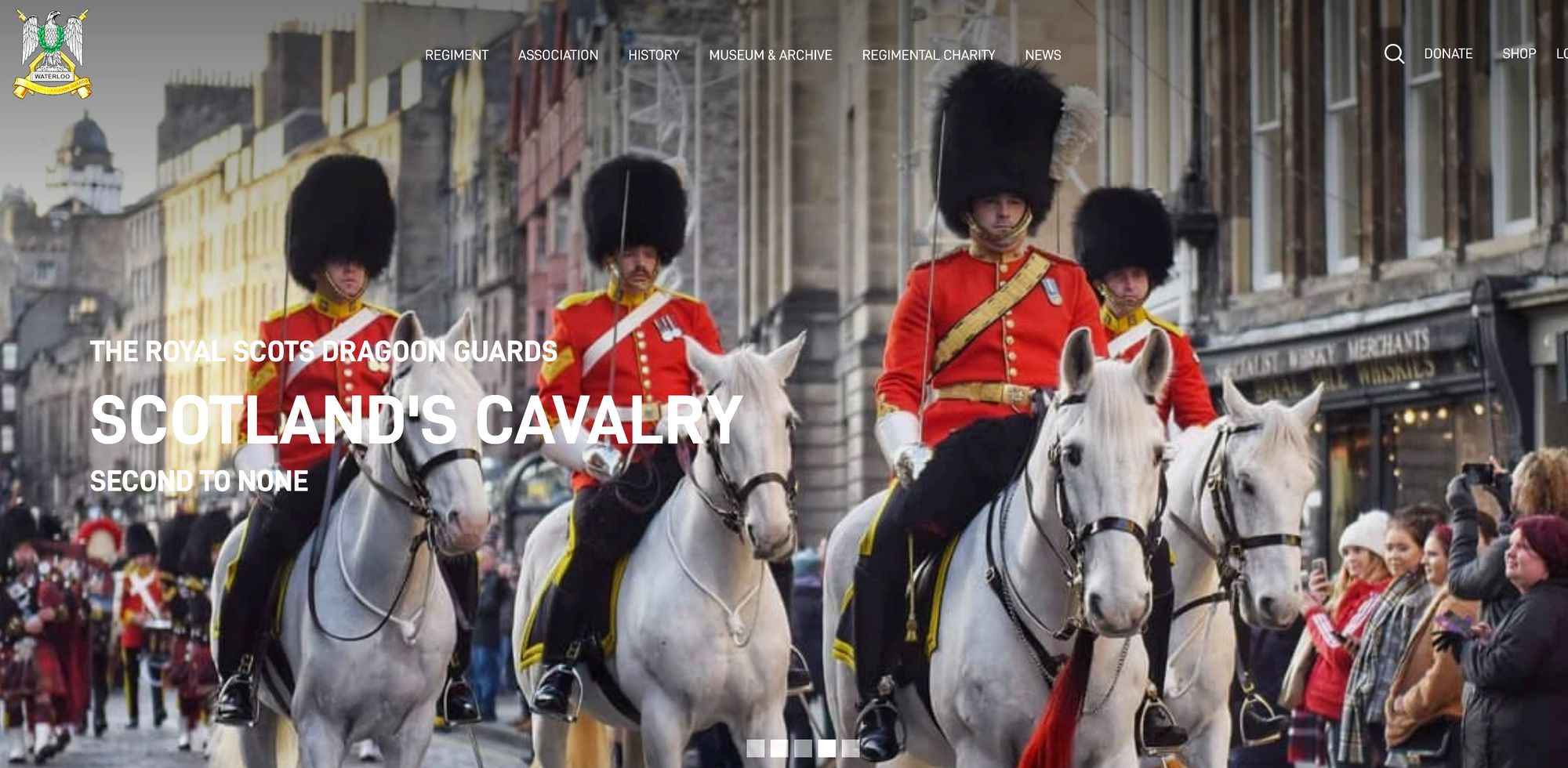

I waited in a long line to visit the Stone of Destiny. There is an entertaining 2008 historical/adventure/comedy movie "Stone of Destiny" about Glasgow students stealing the Stone of Destiny from Westminster Abbey in 1950 and bringing it back to Scotland and placing it in Arbroath Abbey. The stone also known as the Stone of Scone was used to crown Scottish kings and now is also part of the ceremony to crown the monarchs of Great Britain. It was recently taken to Westminster Abbey for the coronation of King Charles on May 6th, 2023.
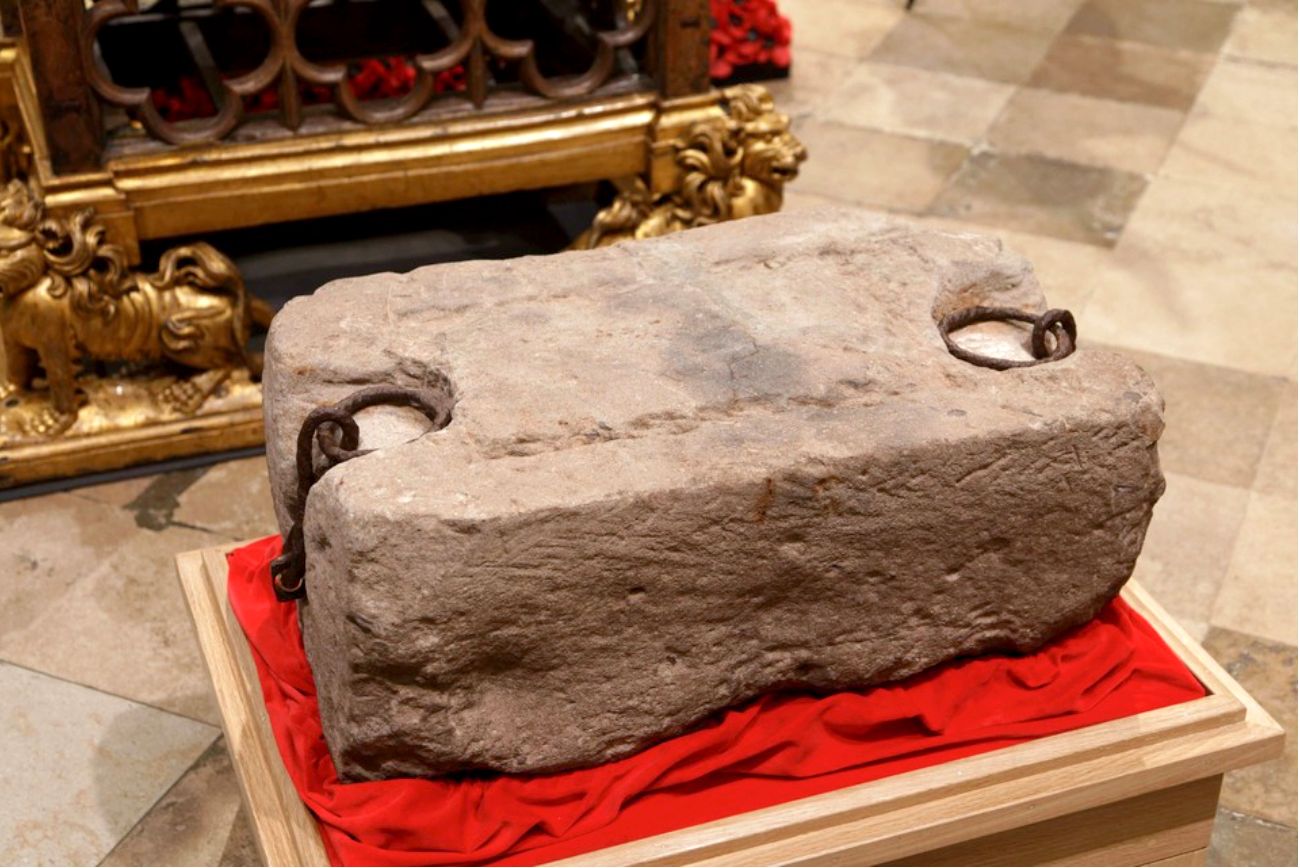
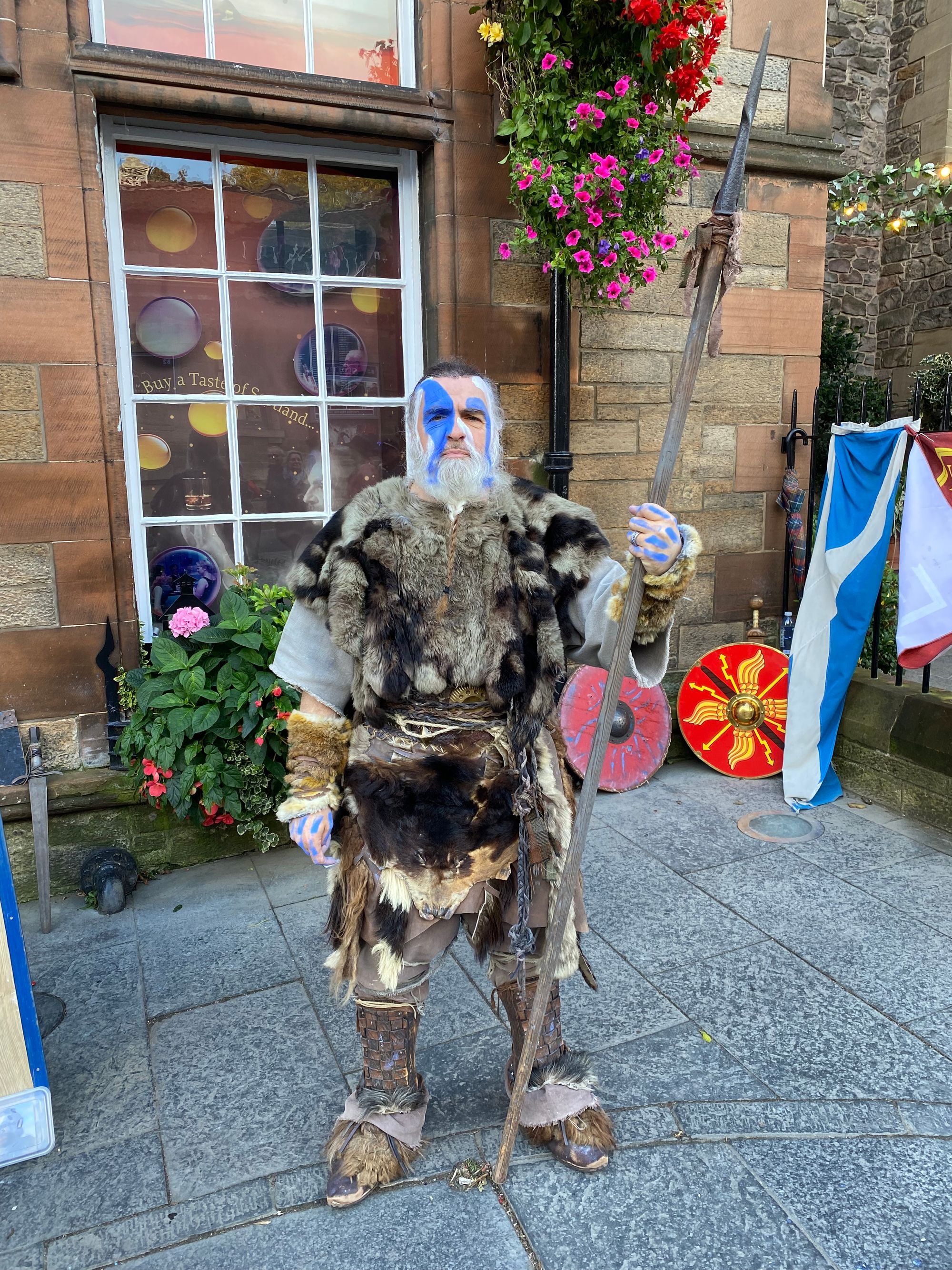
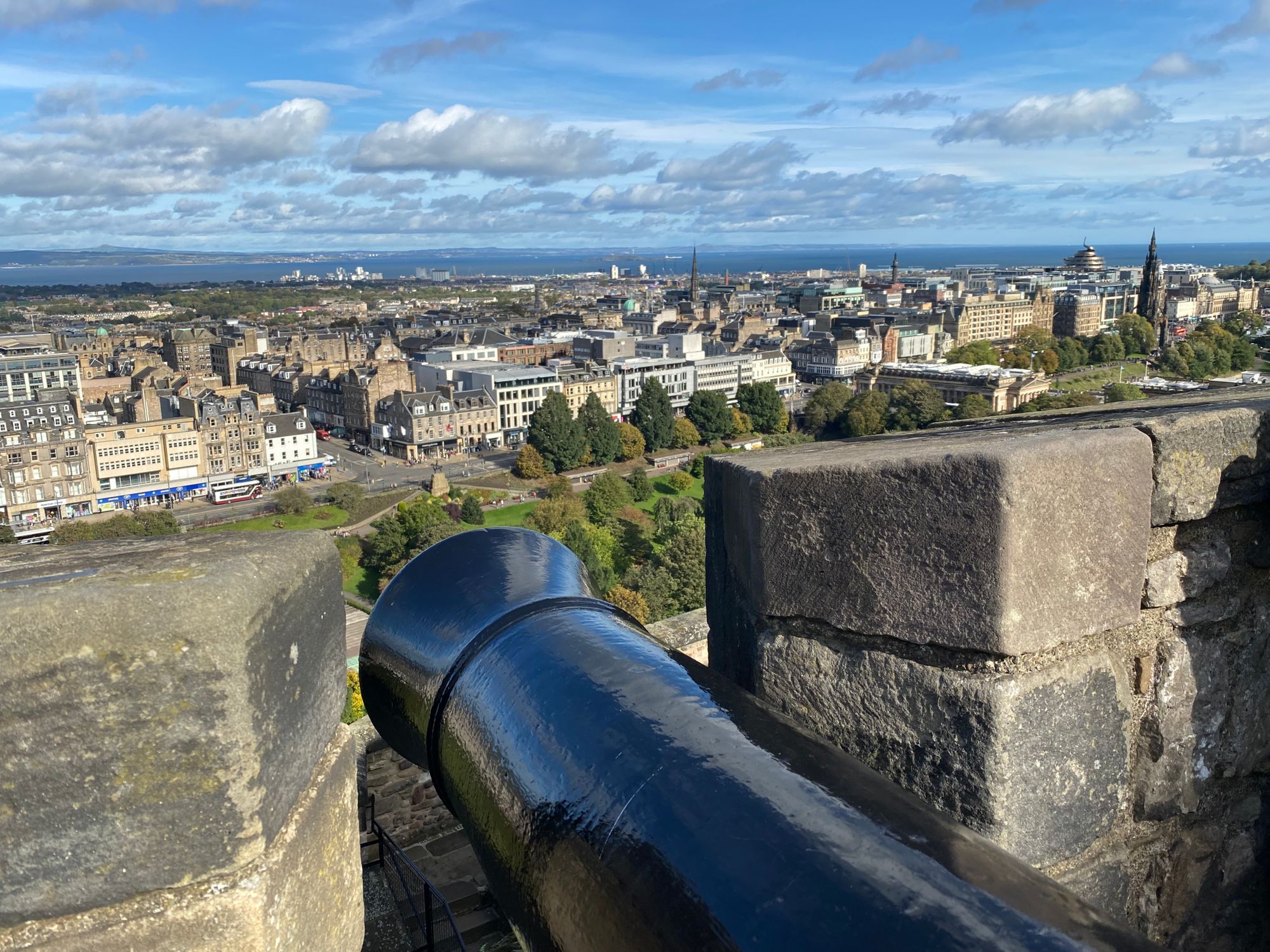
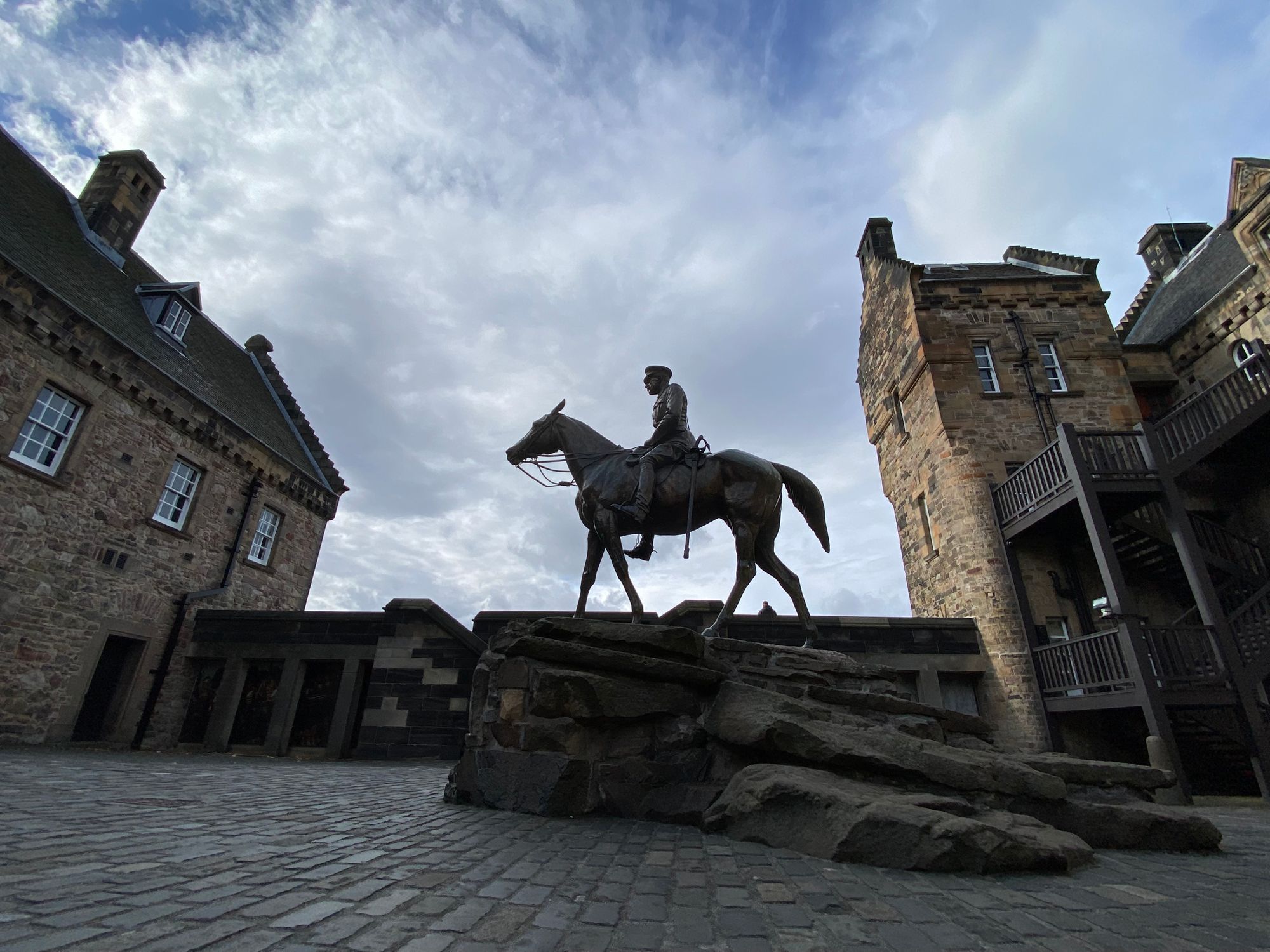
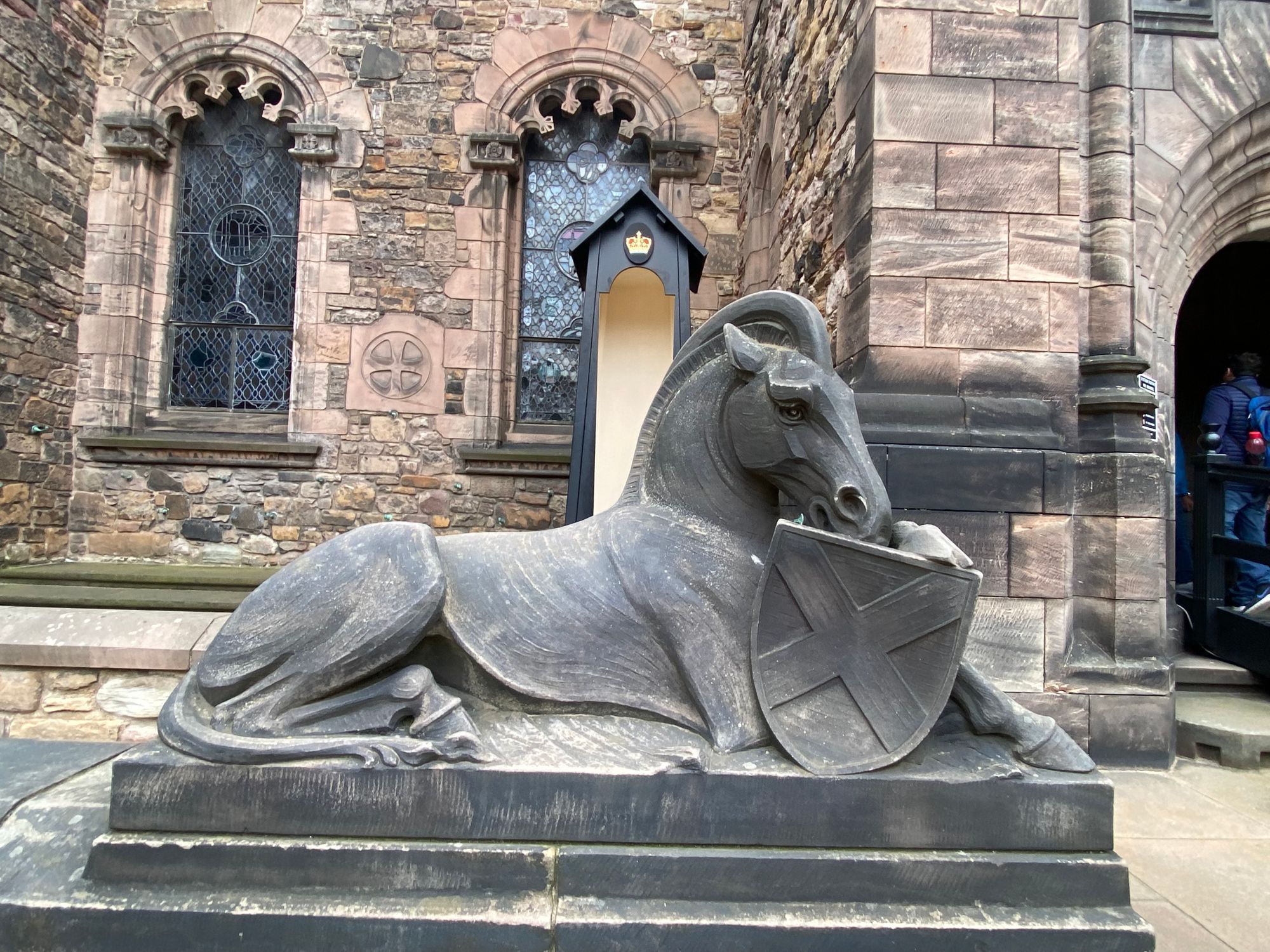
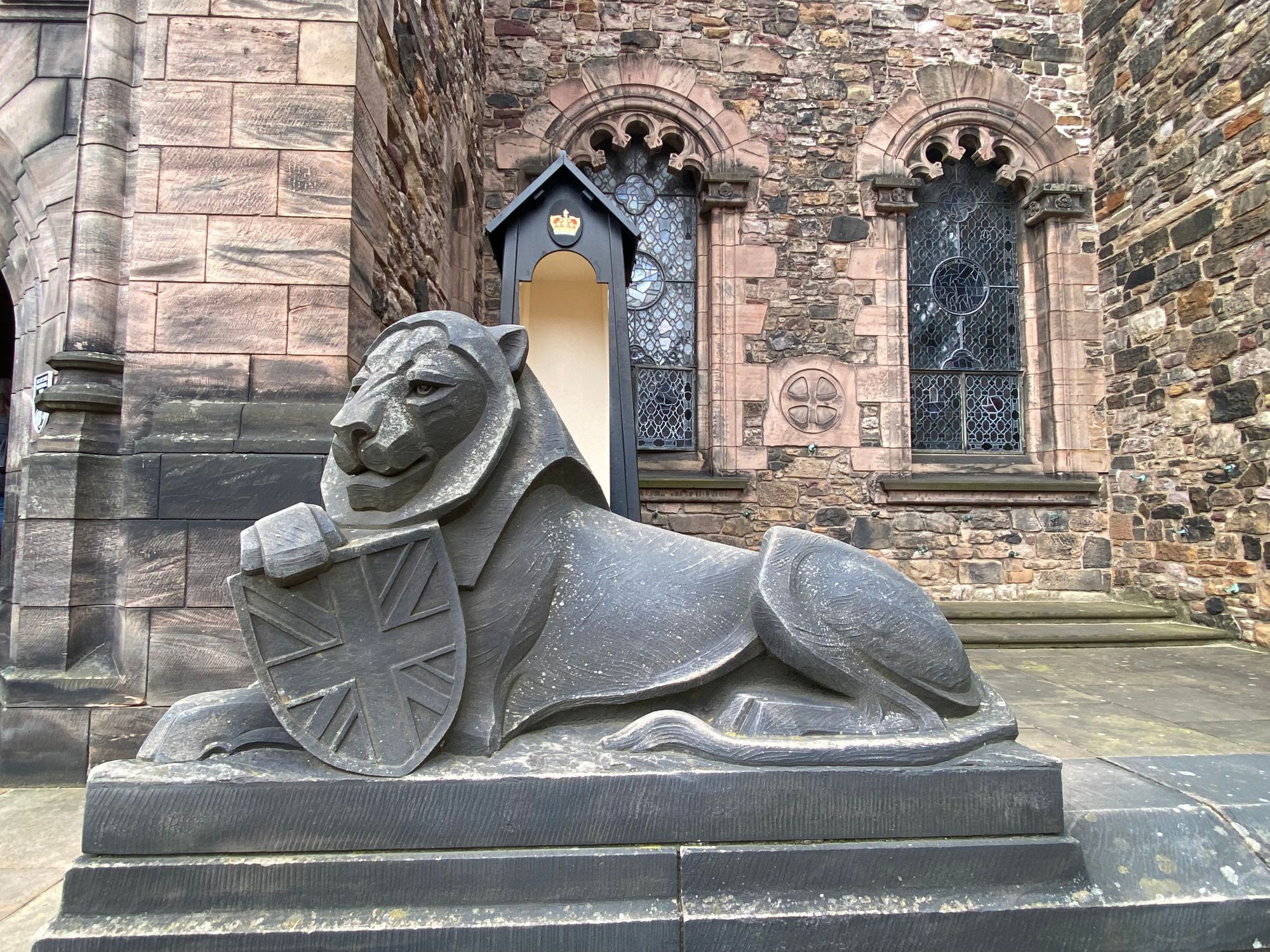

And some Jacobite related artifacts.
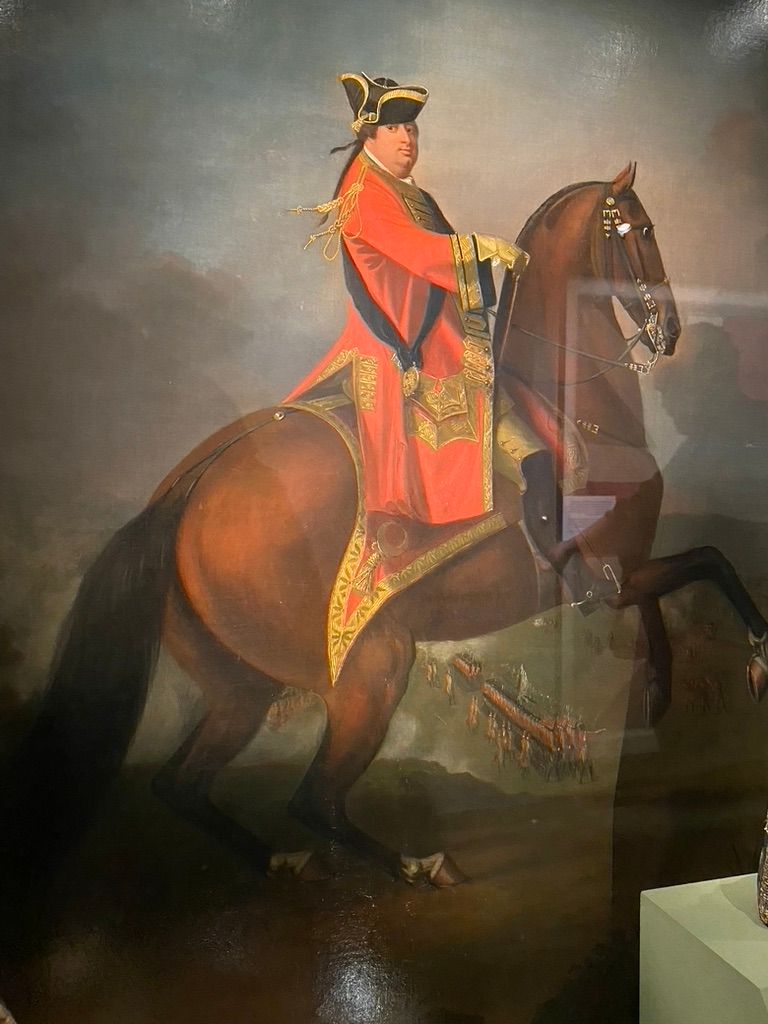
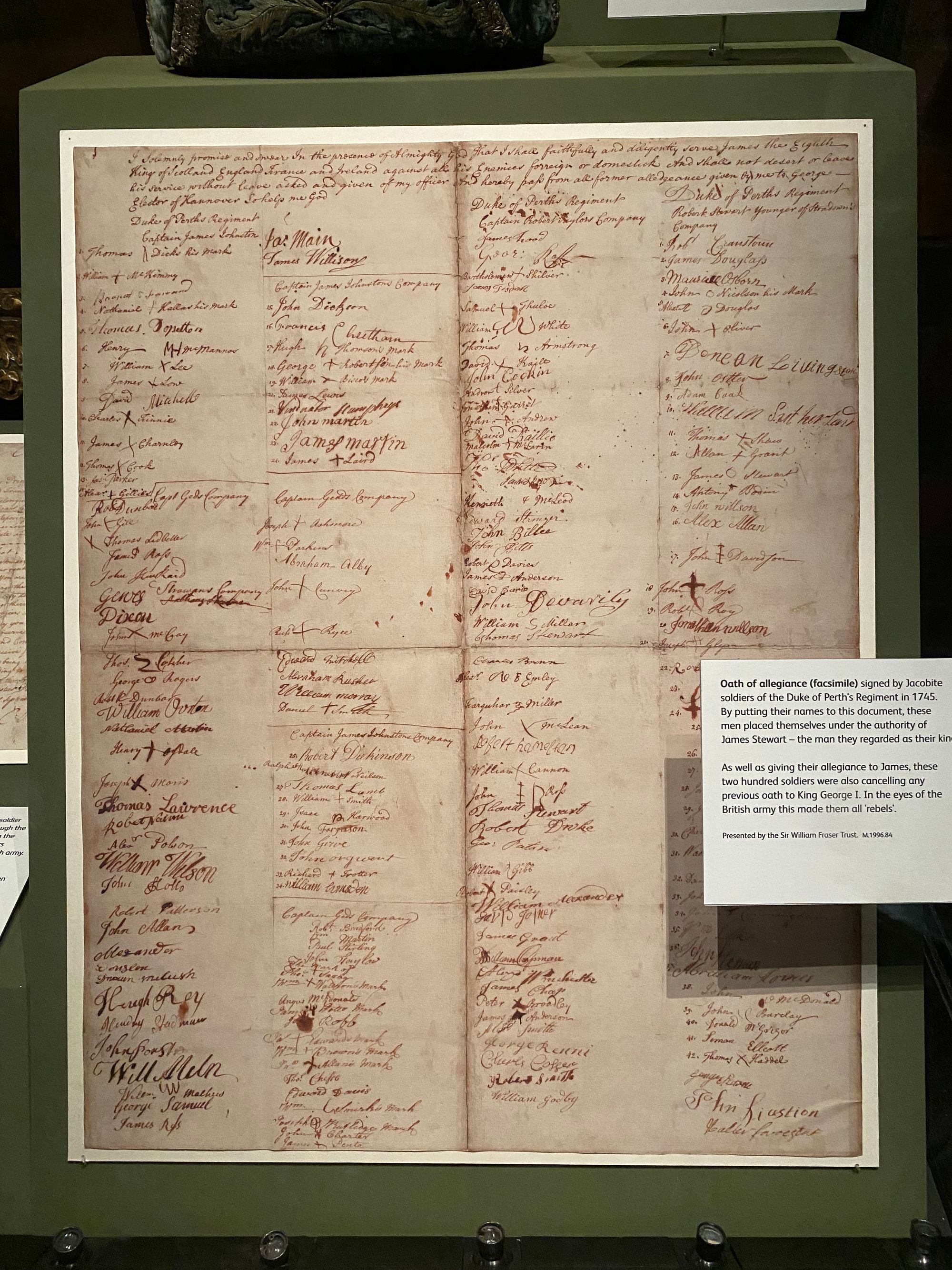
Parting shots |
